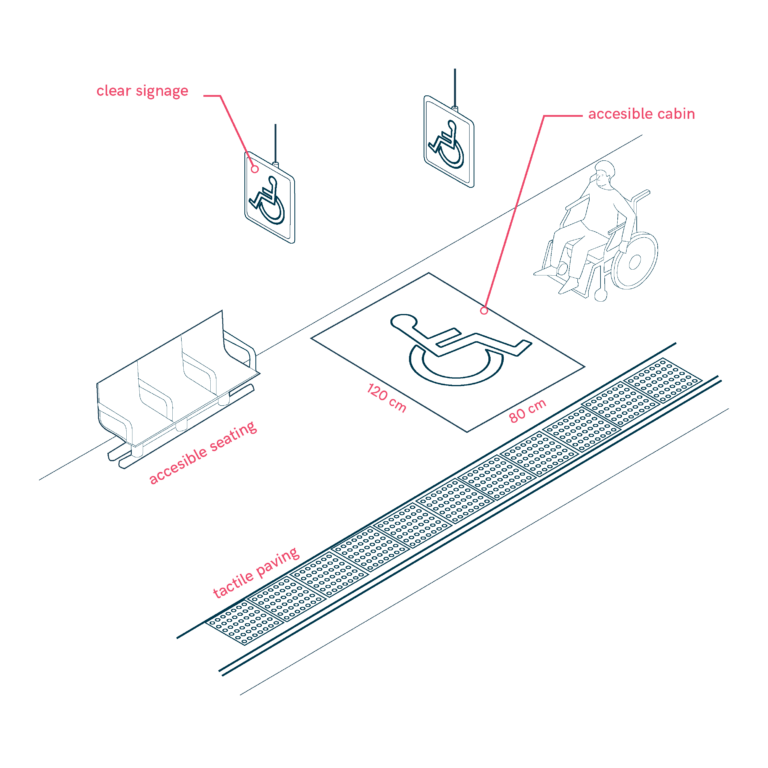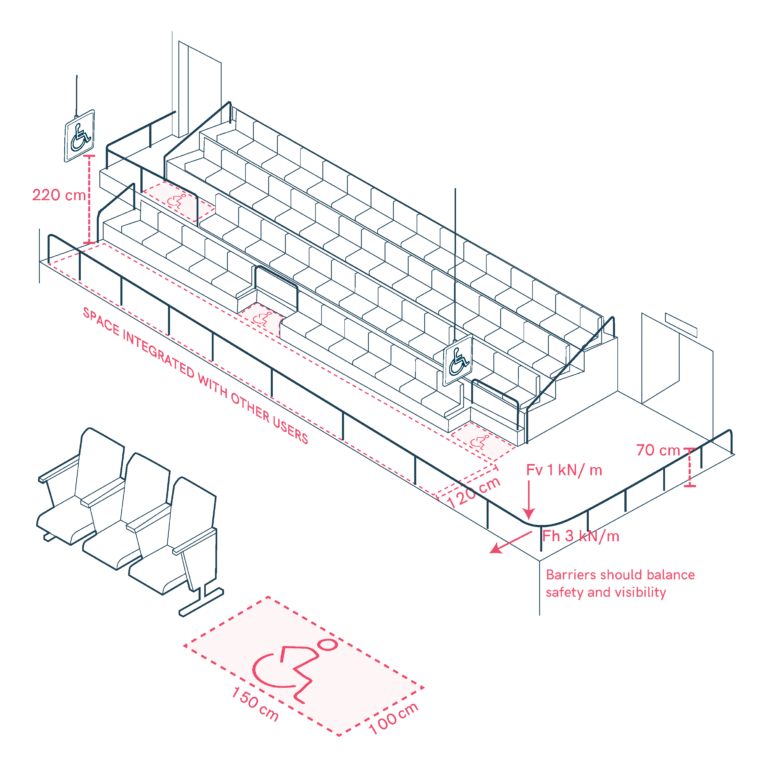
Hearing impairment
Spectrum of abilities
Hearing abilities are essential for communication and social interaction, involving sound perception, source identification, noise differentiation, frequency detection, and conversation. Auditory diversity ranges from mild loss to total deafness, impacting quality of life and participation.
Individuals born with profound deafness often struggle with reading and writing due to a lack of spoken language exposure. They must learn through reading alone, often without auditory reference. This highlights the need for clear, accessible writing. Simple structures and familiar vocabulary aid comprehension, benefiting not only those with hearing loss but also non-native speakers and individuals with cognitive-related reading difficulties.
Visual abilities allow individuals to perceive stimuli, distinguish details, judge distances, and focus on objects in various environments. These abilities include separating objects from the background, detecting color contrasts, and adapting to different light levels and motion. These capabilities vary widely, and their deterioration can significantly impact interaction with physical and digital environments, affecting daily and social activities.
Accesibility and inclusion actions
In the physical environment, inadequate acoustic design and the absence of visual notification systems create accessibility barriers, particularly in noisy spaces. Effective solutions include visual signage, noise reduction strategies, and assistive technologies such as hearing loops and real-time captioning. In digital spaces, tools like subtitles, transcriptions, and intuitive visual interfaces facilitate inclusion.
Beyond just providing access, written information (such as signage and public announcements) should avoid unnecessarily complex language. Clear, straightforward wording benefits individuals with hearing loss, particularly those who have learned to read without auditory references. It also improves accessibility for people who are not fluent in the local language, as well as individuals with cognitive or reading-related challenges.
Accessibility in physical spaces requires adequate lighting, braille signage, tactile guides, tactile paving, and audio orientation systems. Strong contrasts in visual signage are equally important, especially for mild to moderate visual impairments, which are more common than total blindness.
In the digital realm, interfaces must meet accessibility standards, including screen readers, high contrast, and voice navigation. Enhancements like large fonts and tactile technologies further support autonomy and social integration, fostering a more inclusive society.
Key beneficiary users
These accessibility measures support a broad range of individuals with hearing loss, including older adults, those who use sign language interpreters, cued speech, or cochlear implants, as well as individuals with deaf blindness or hearing loss due to prolonged noise exposure. They also assist people in noisy environments or with temporary auditory impairments.
Simplified written communication further aids non-native speakers, tourists, and individuals with cognitive or reading-related challenges. Beyond improving accessibility, these actions foster autonomy, inclusion, and awareness of auditory diversity.
People with visual impairments have diverse needs. Low vision affects daily life differently depending on whether it impacts central vision (e.g., macular degeneration), peripheral vision (e.g., retinitis pigmentosa), or causes blurred vision (e.g., high myopia). Scotomas (e.g., diabetic retinopathy) create blind spots, while hemianopsia (neurological conditions) reduces part of the visual field. Total blindness requires non-visual navigation methods.
Accessibility solutions include font size adjustments for nearsightedness, strong contrast and lighting for low vision, and tactile or auditory technologies like braille and screen readers for blind users. Pattern-based alternatives assist those with color blindness. These adaptations foster autonomy, inclusion, and awareness of visual diversity, contributing to a more accessible society.

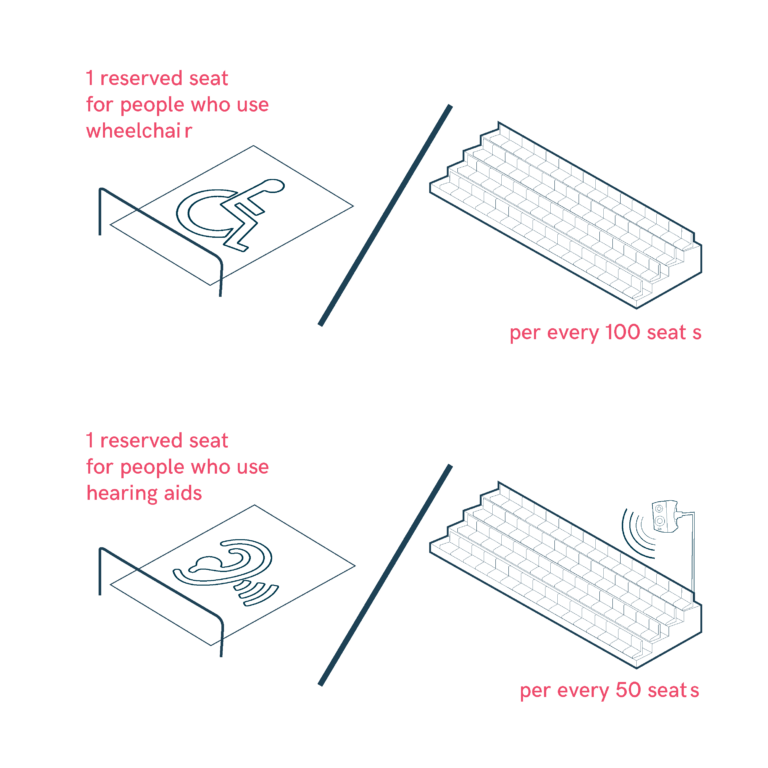
Accesible leisure
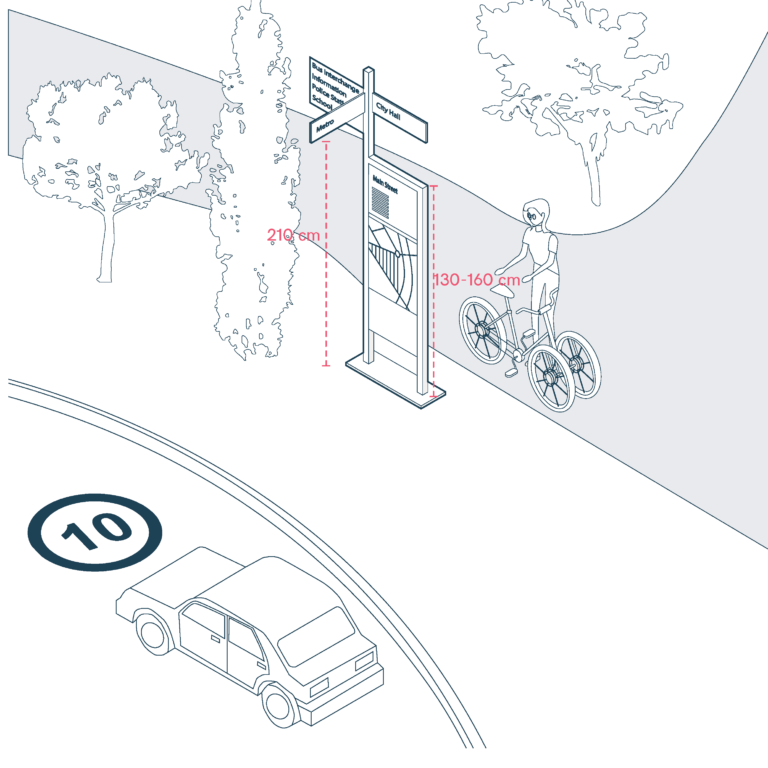
Access and Connectivity
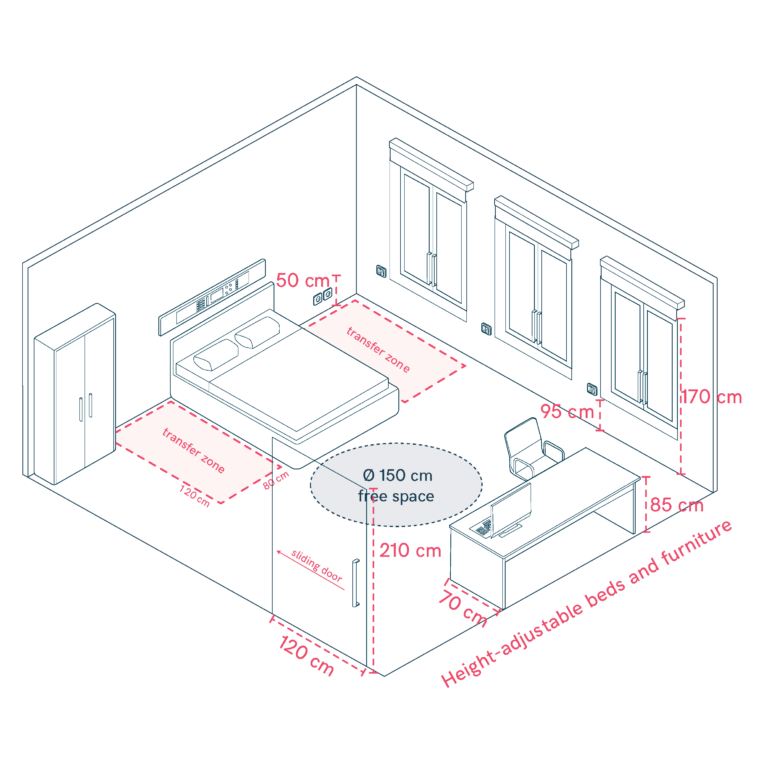
Accessible and Comfortable Bedrooms

Accessible and Ergonomic Kitchen
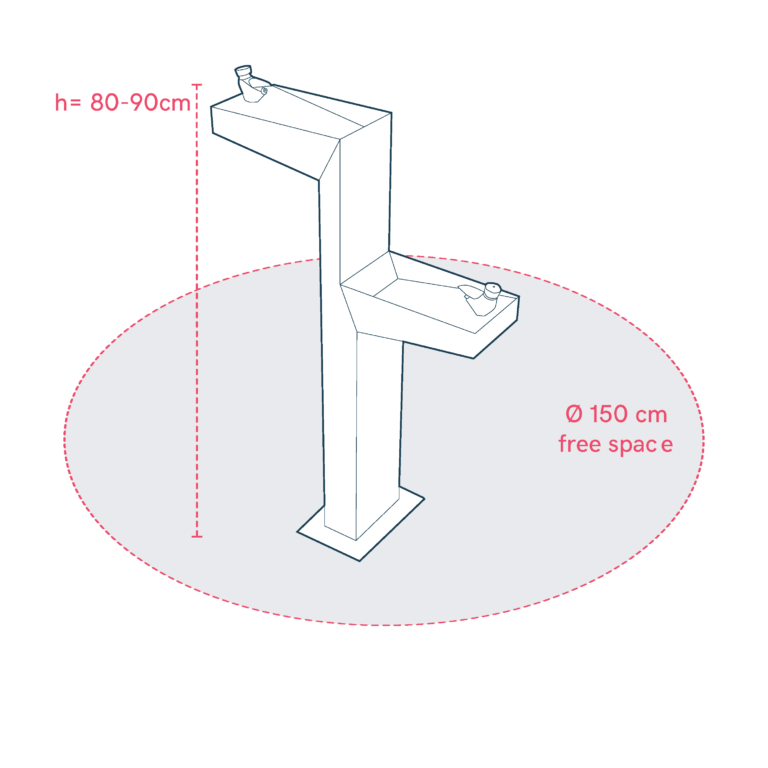
Accessible and Inclusive Drinking Fountains

Accessible and Well-Maintained Public Spaces
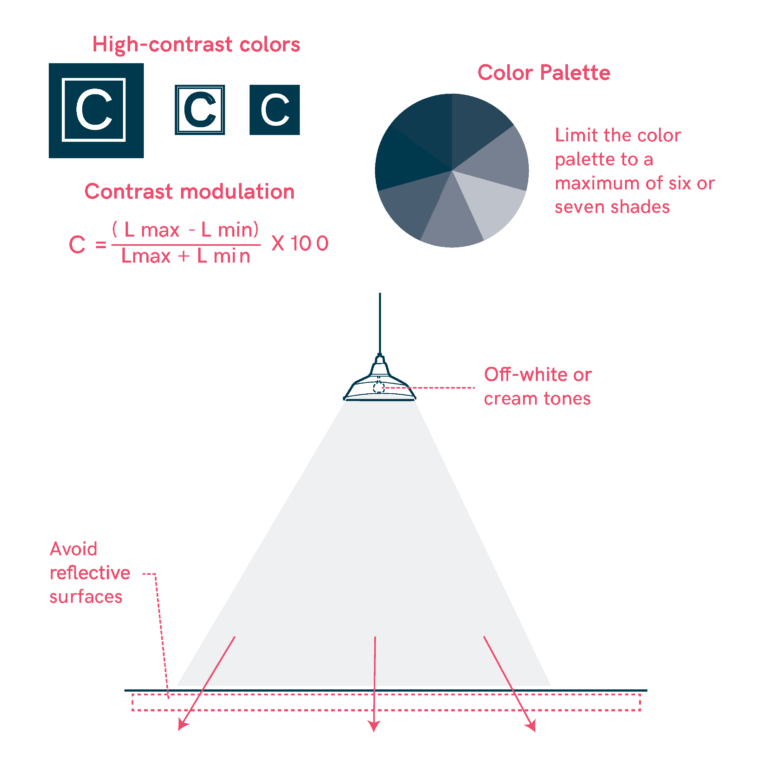
Accessible Colors and Contrast
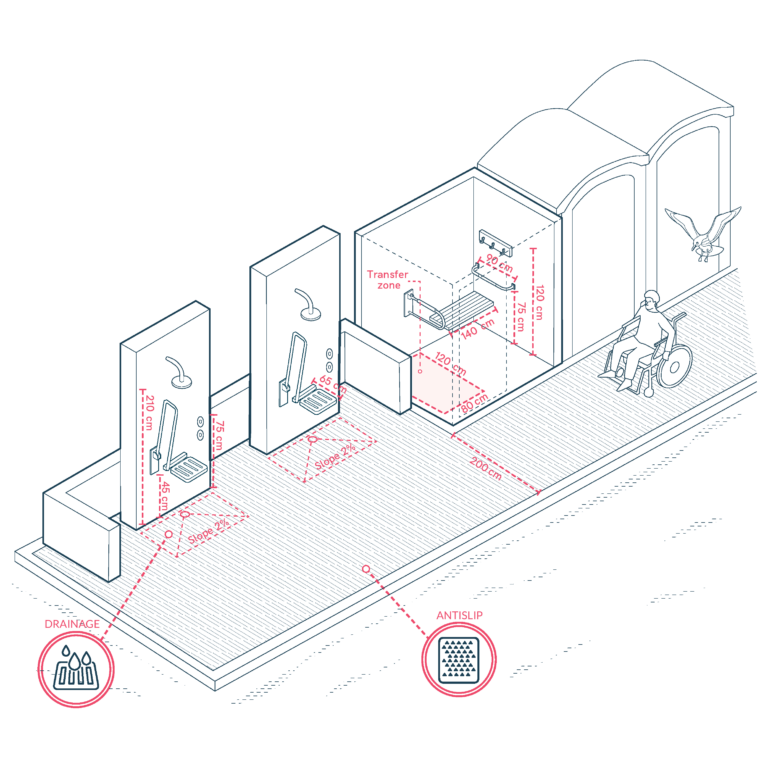
Accessible Dressing Rooms and Showers

Accessible Entrance and Gates

Accessible Gangways for Vessel Access
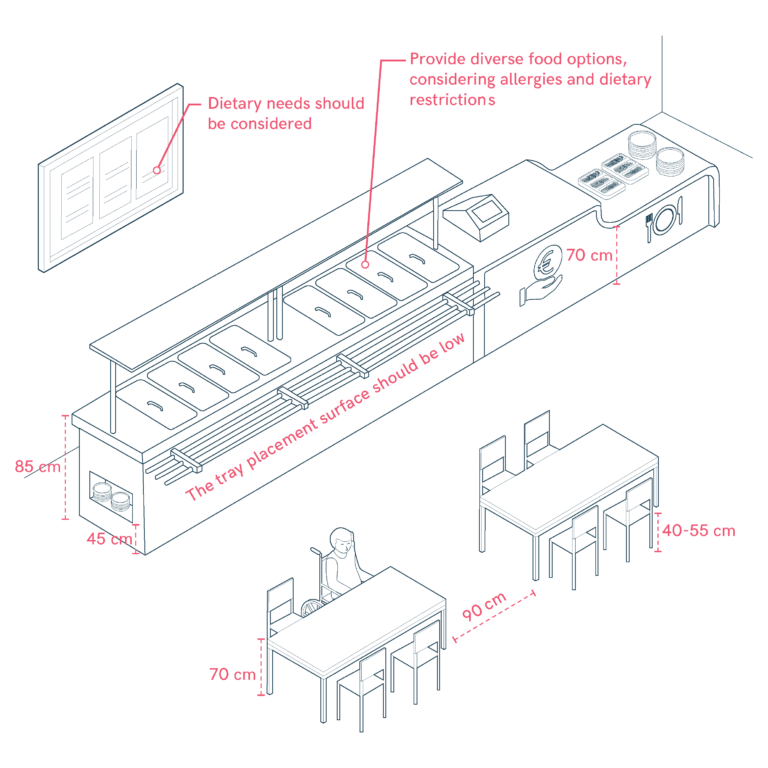
Accessible Lunch Counters and Tables
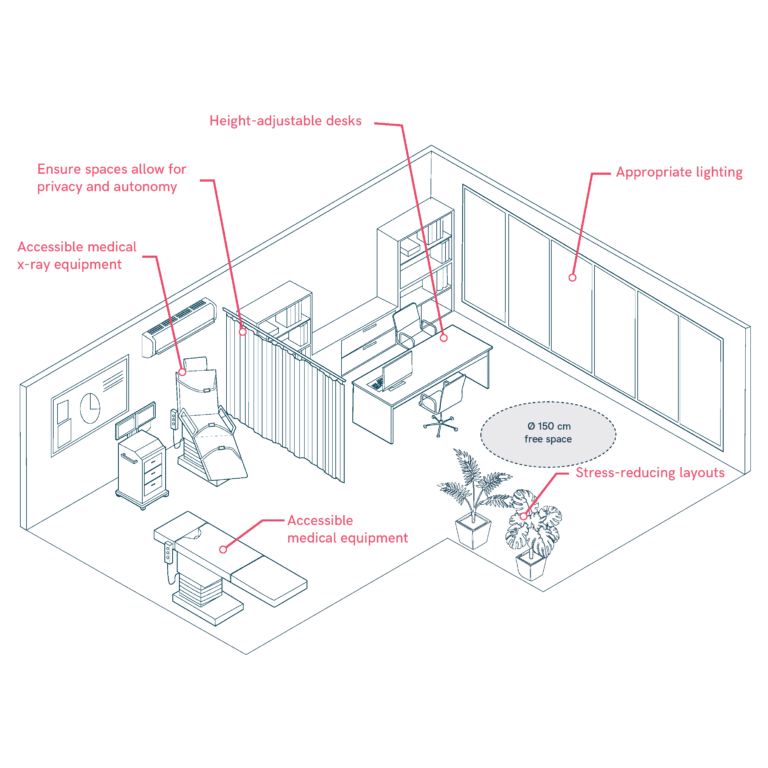
Accessible Medical Consultations
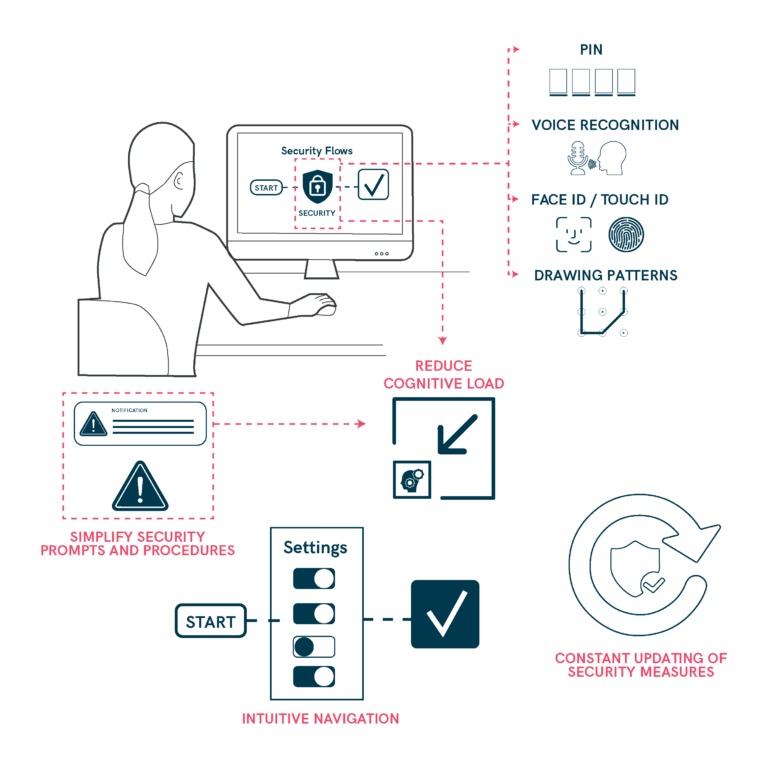
Accessible Navigation
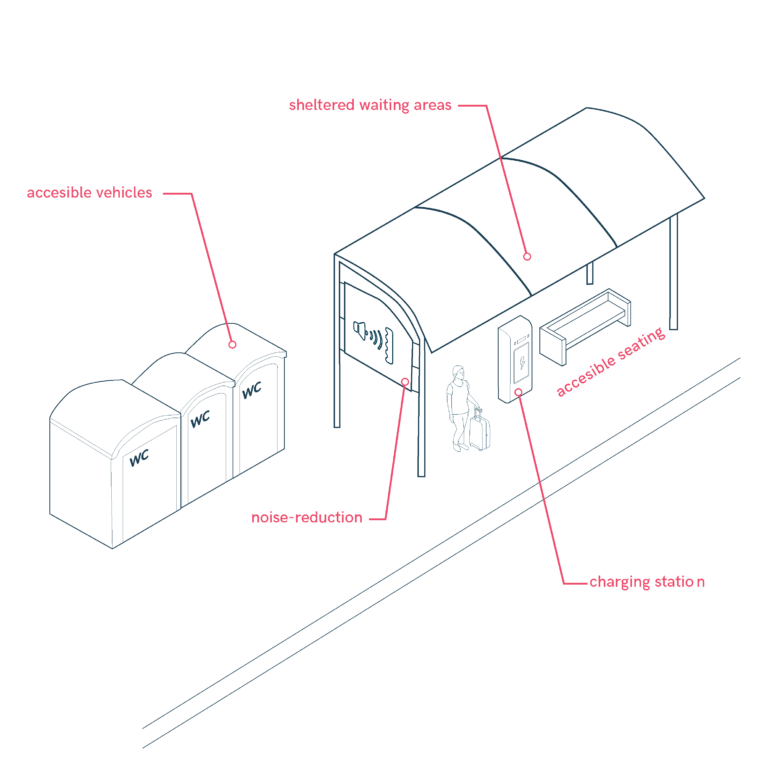
Accessible Waiting Areas and Station Facilities at Mobility Hubs
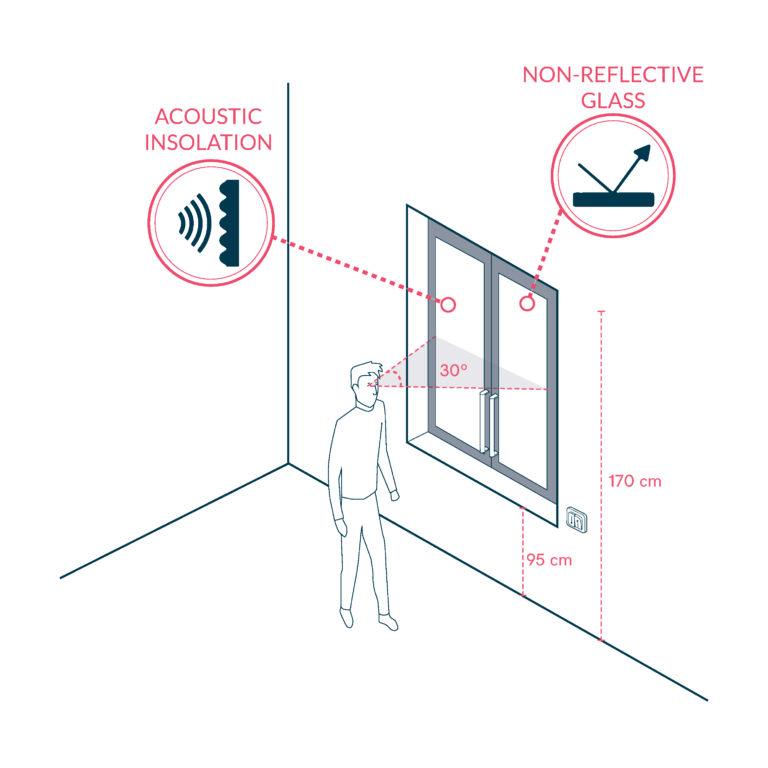
Accessible Windows
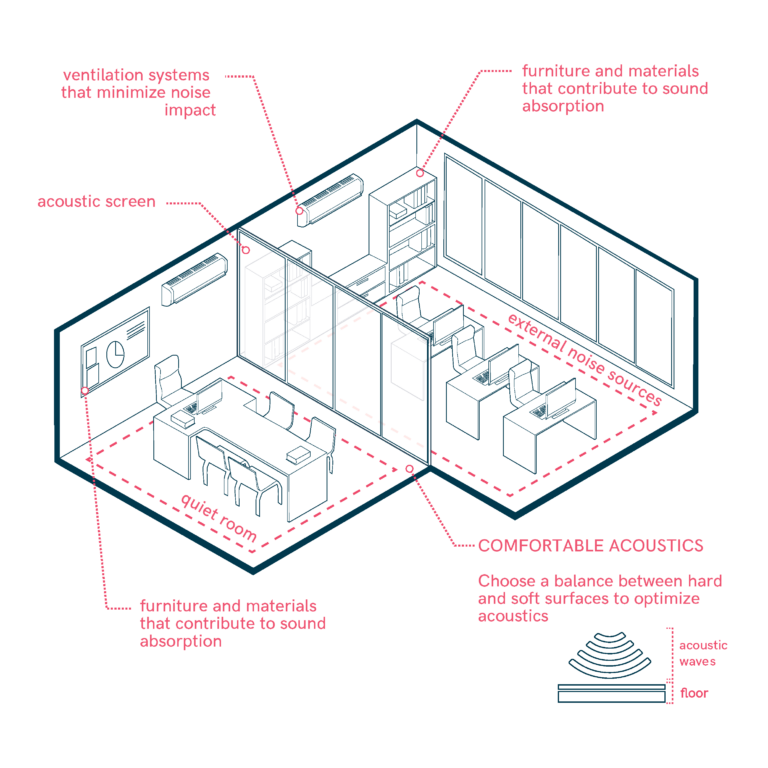
Acoustic Design
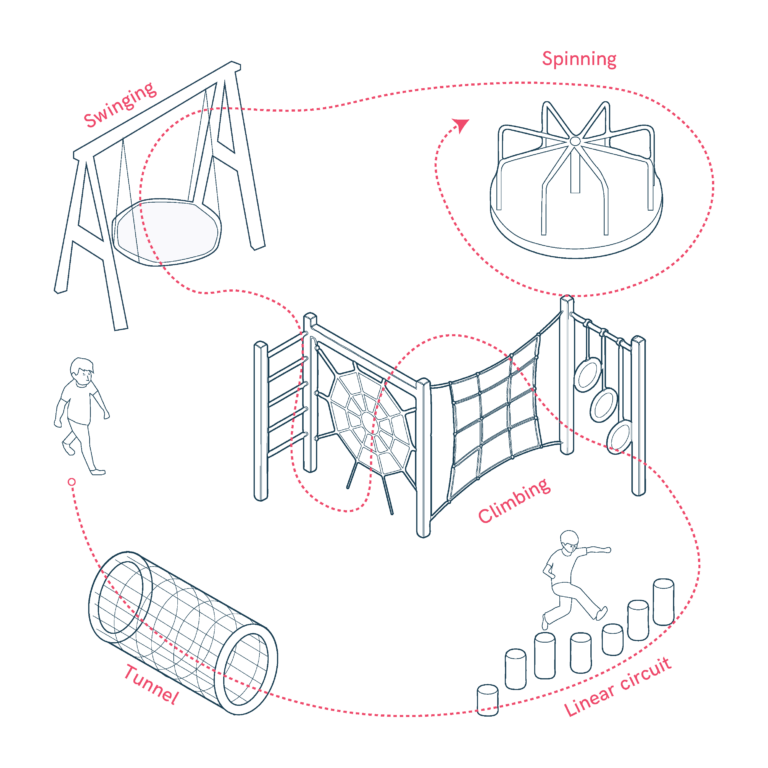
Adapt Motor Stimulation Play Opportunities
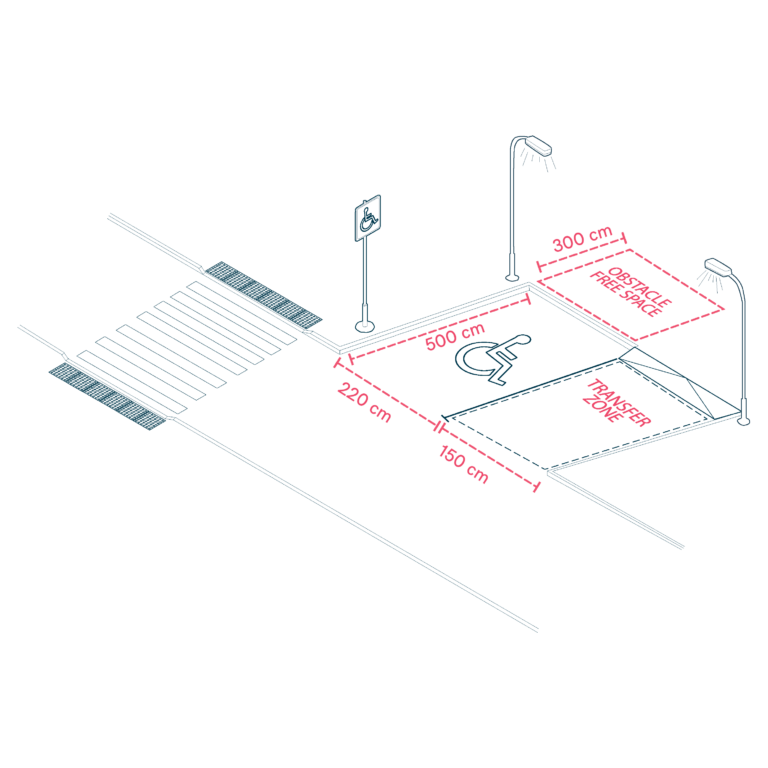
Angled Accessible Parking
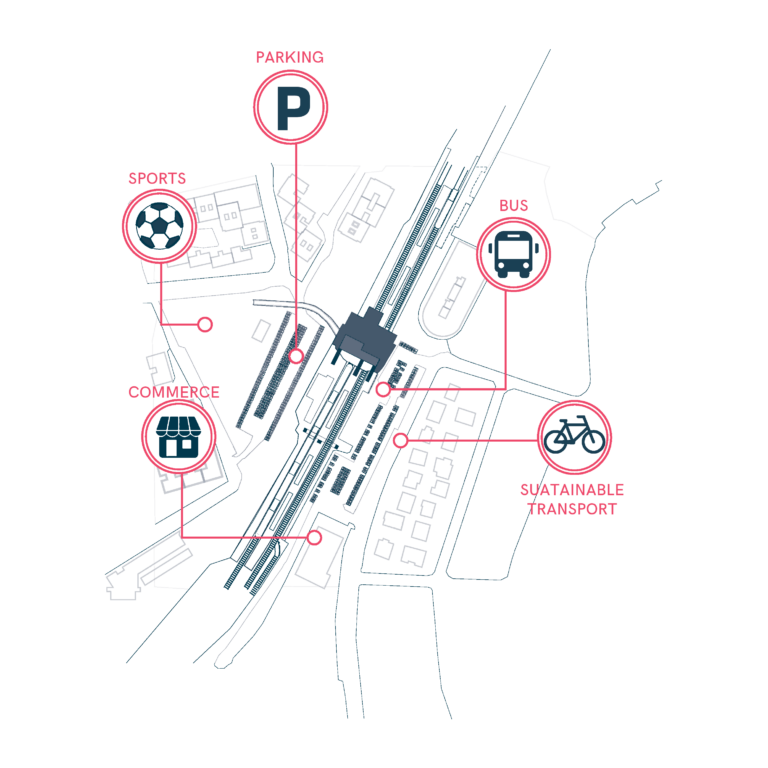
Approach to the station: Welcoming and Accessible Entrances
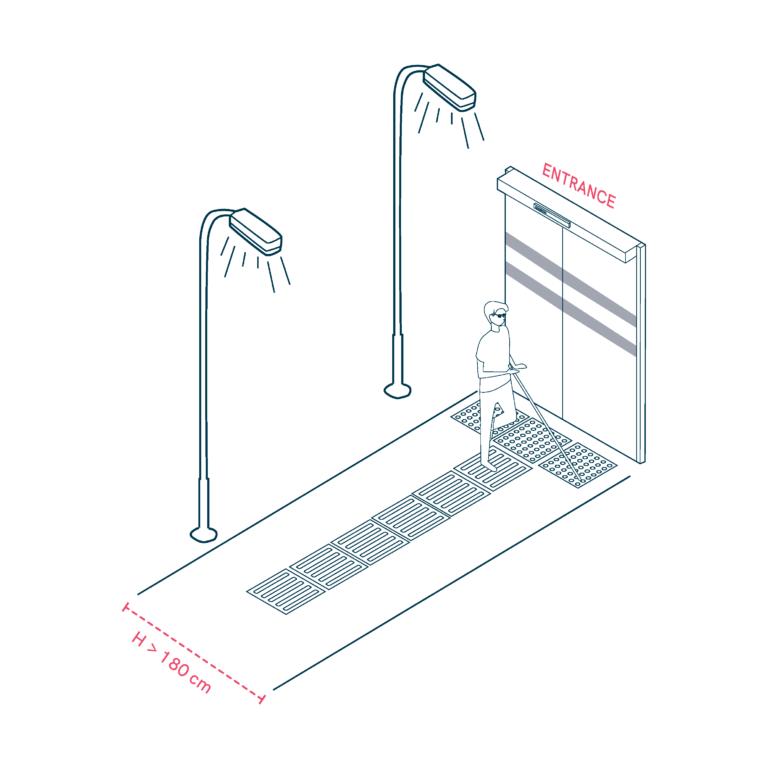
Around the Mobility Hub
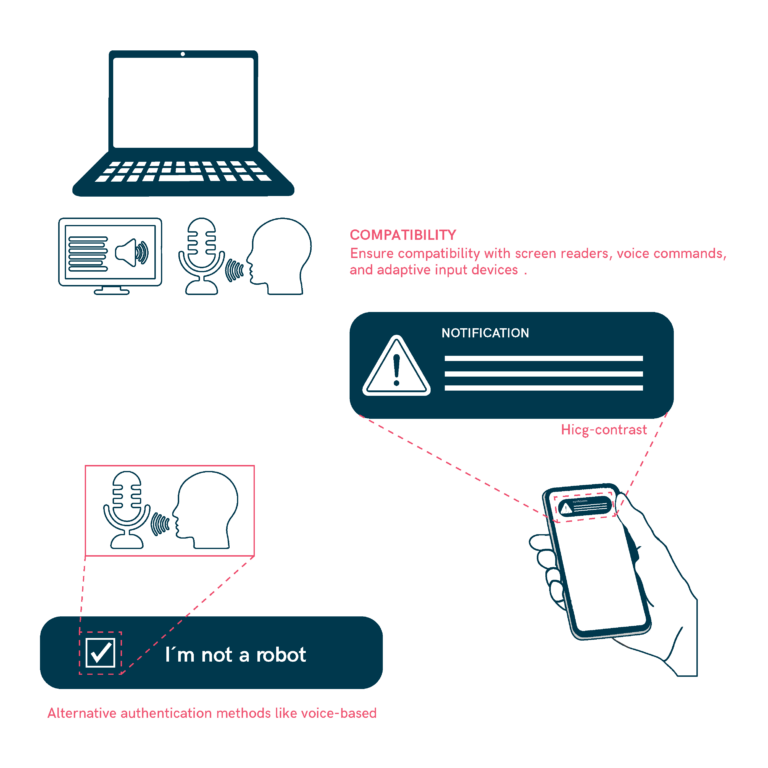
Assistive Technology Integration
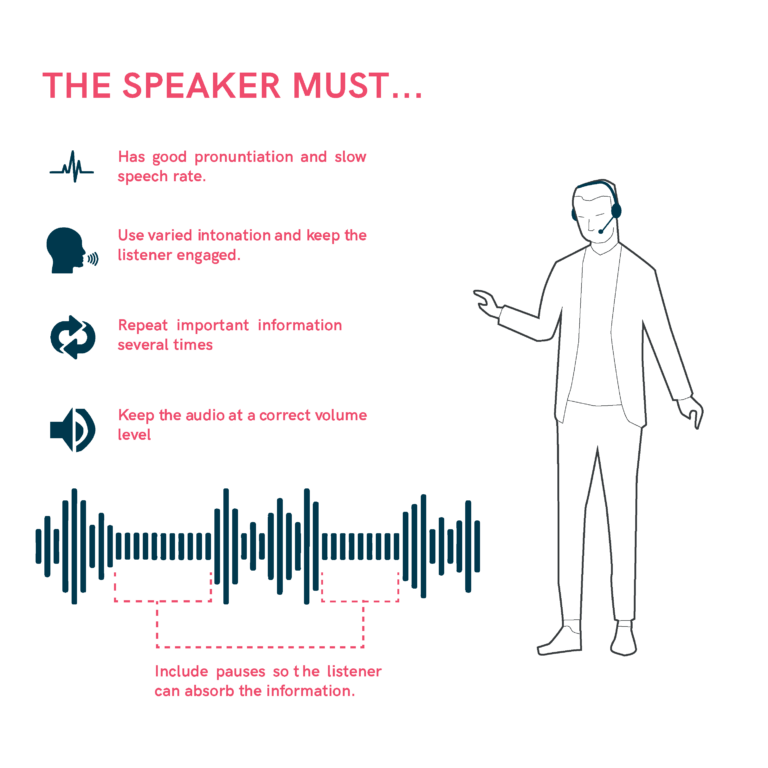
Audio Information
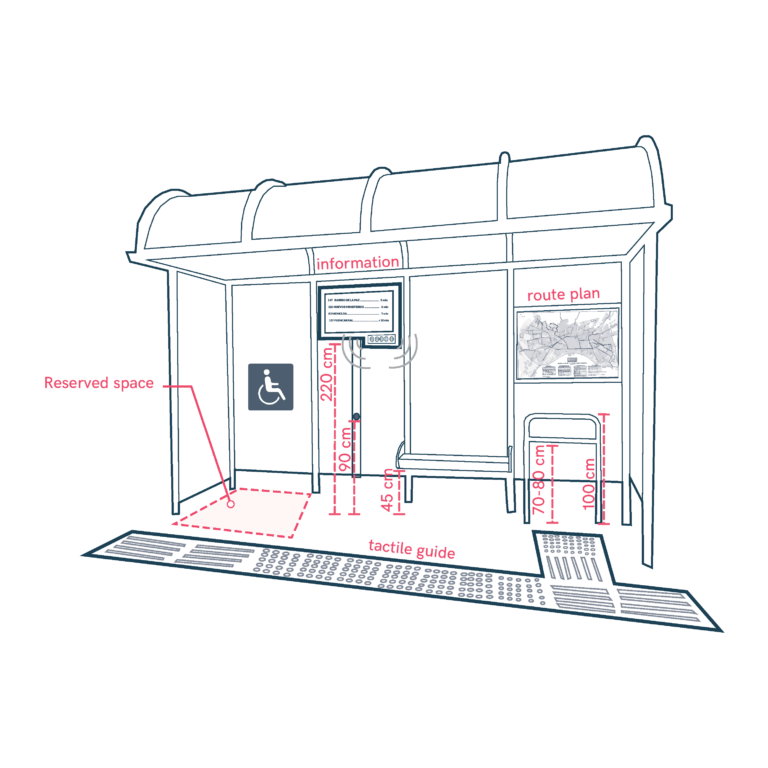
Bus Stop Design
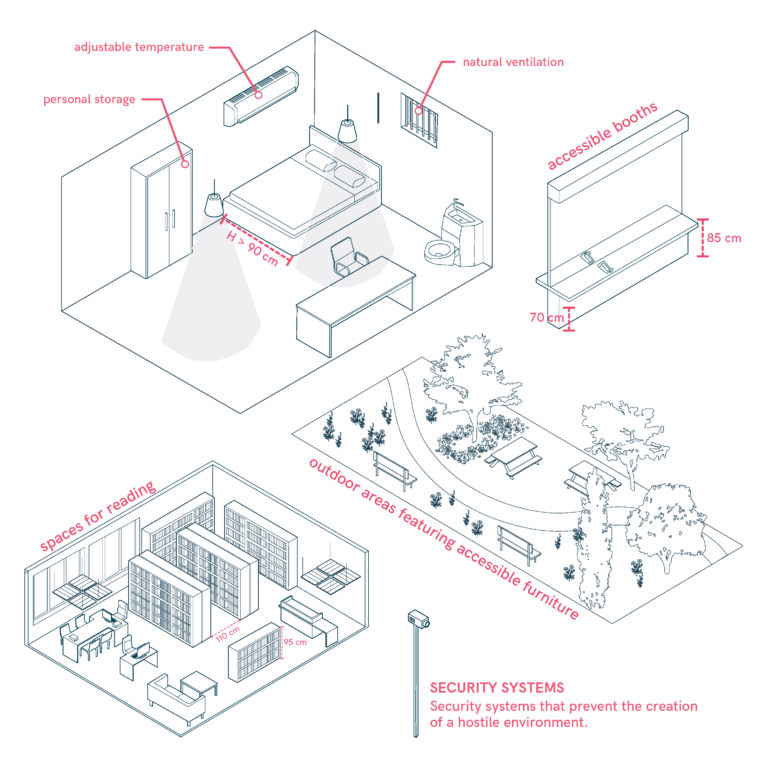
Cells and Detention Spaces
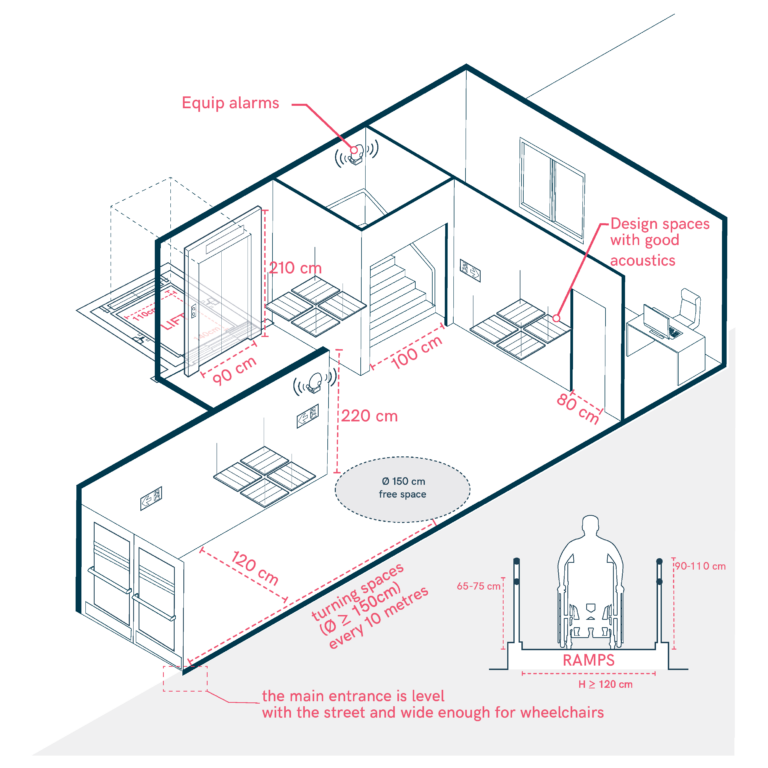
Circulation Within Educational Centers
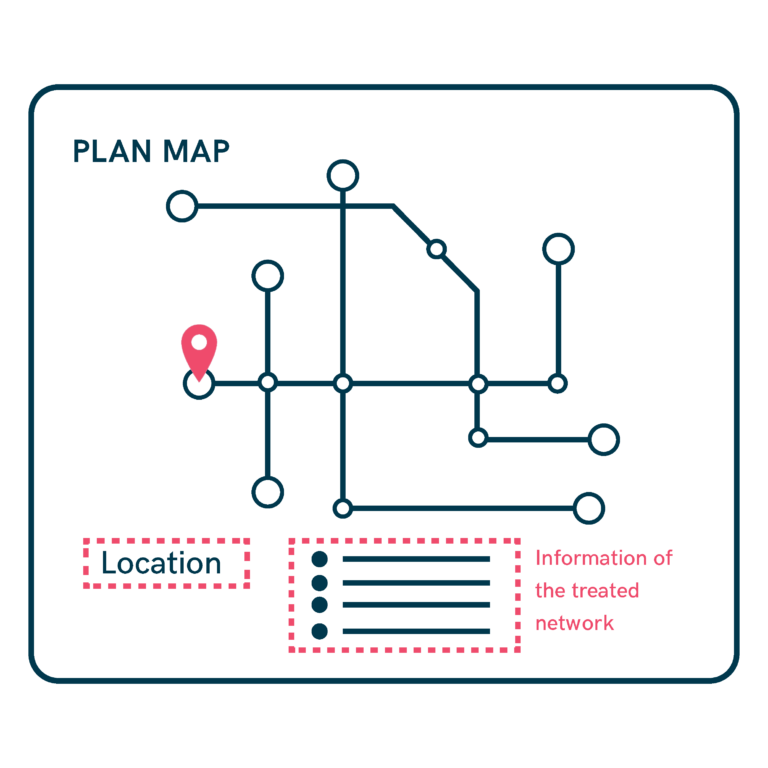
Clear Maps and Plans

Clear Signage and Orientation
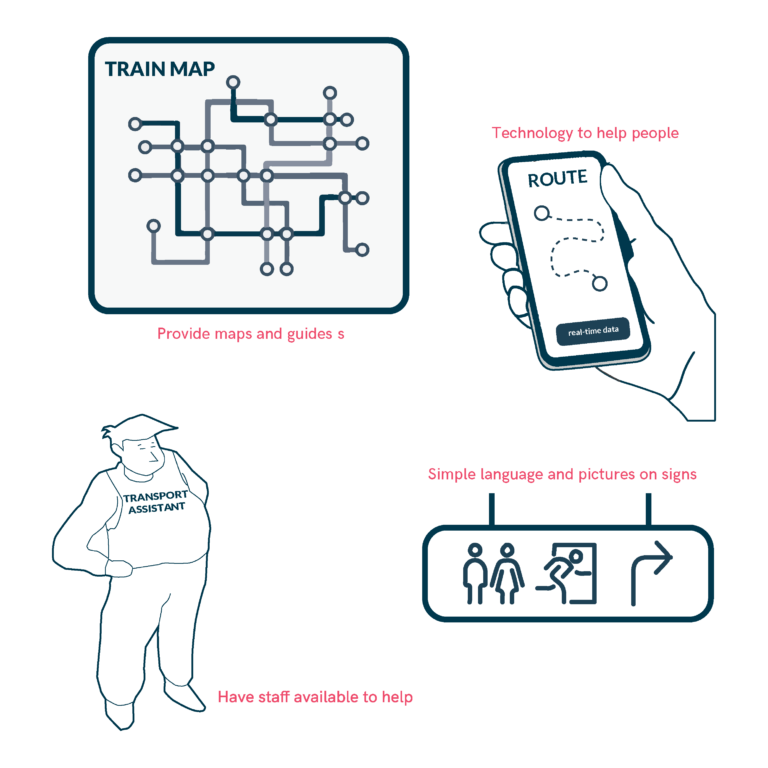
Cognitive-Friendly Design
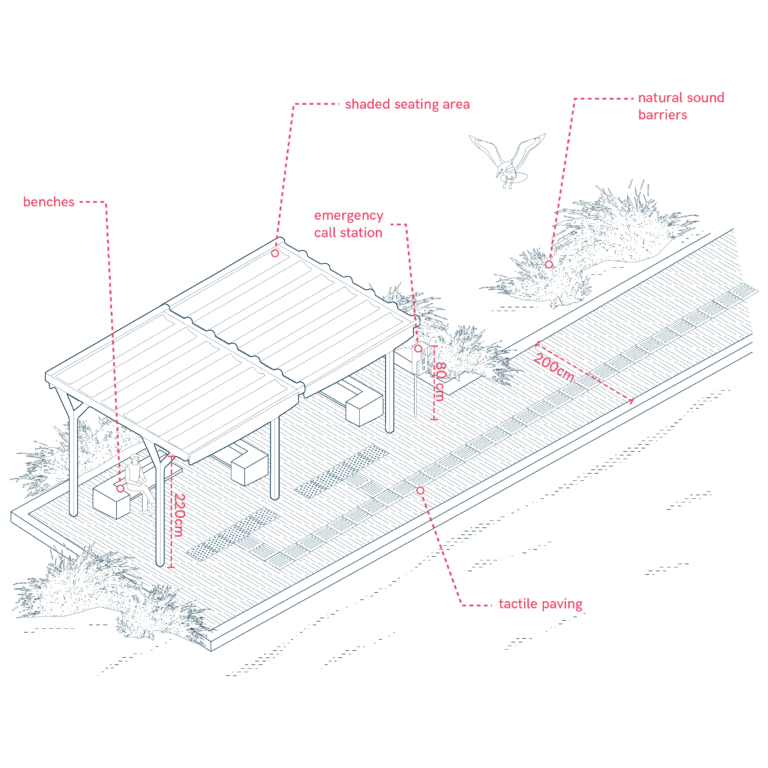
Comfort and Safety Enhancements
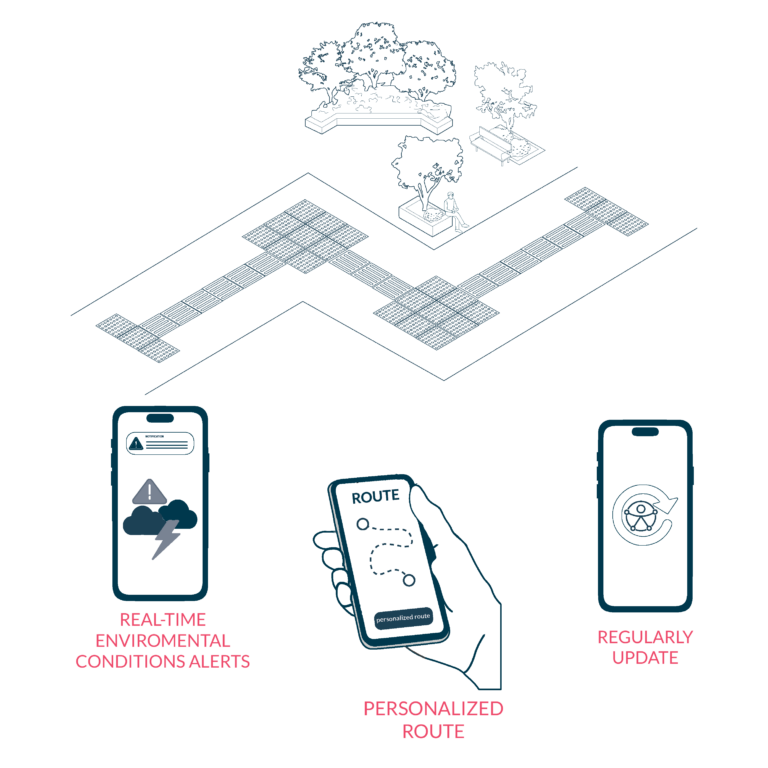
Comfort-Based Mobility Assistance
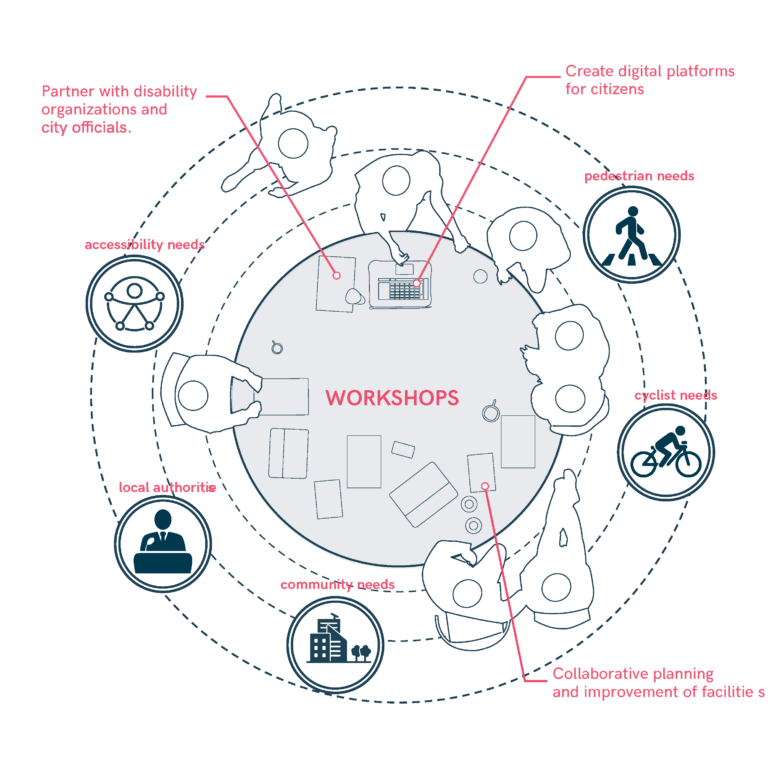
Community Engagement and Collaboration
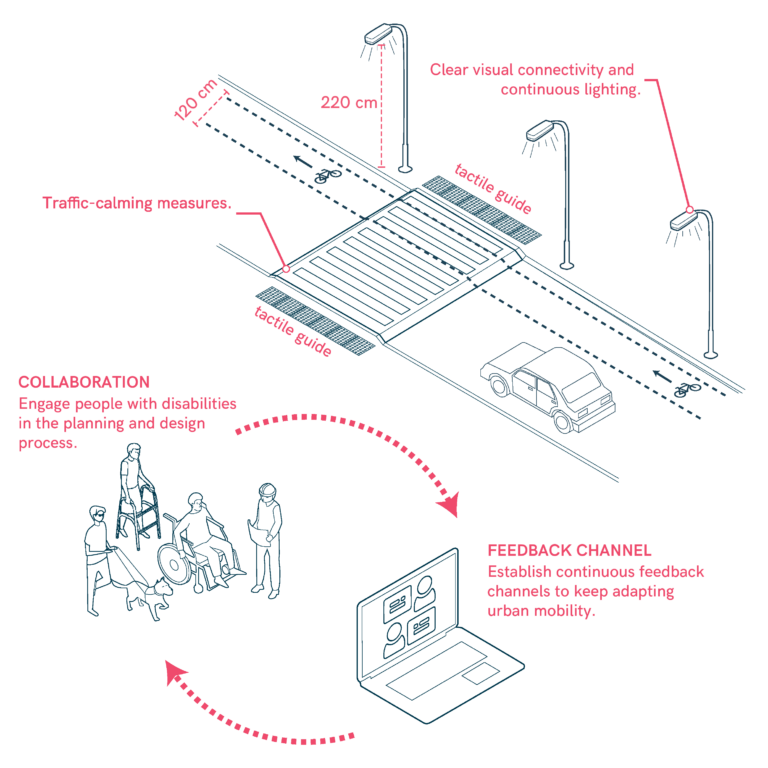
Community Engagement and Feedback
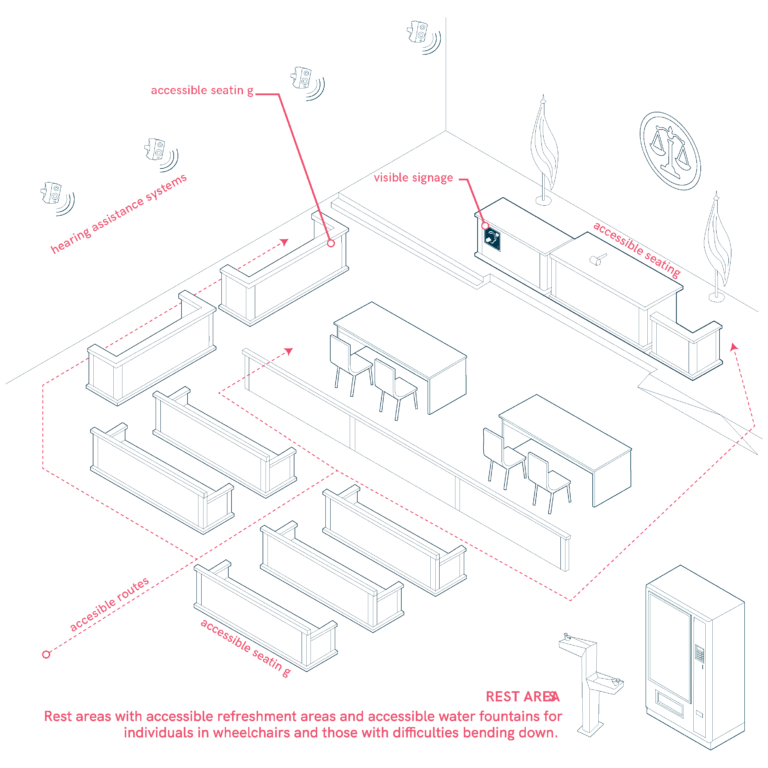
Courtrooms
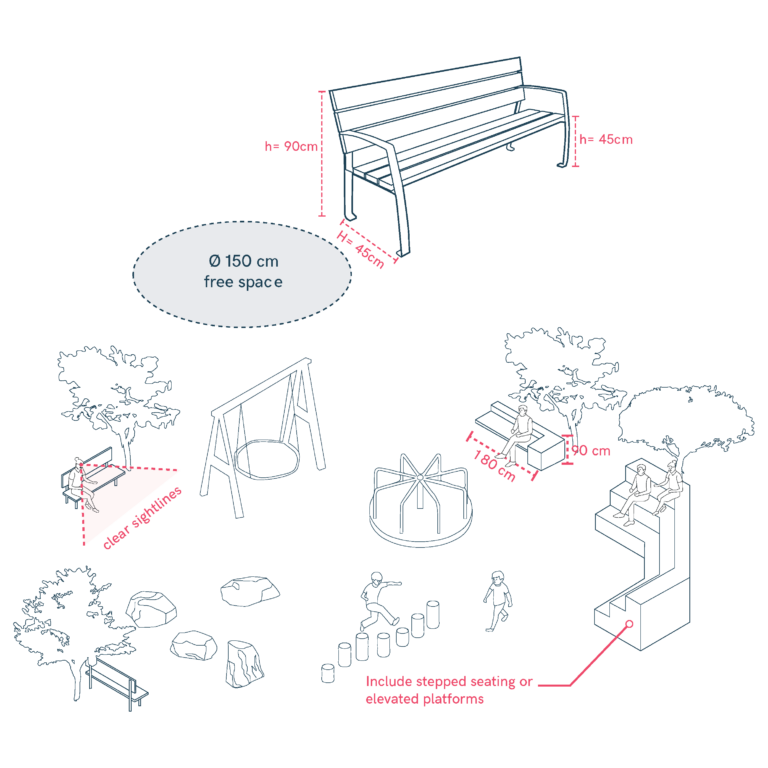
Create Comfortable Surveillance and Rest Areas
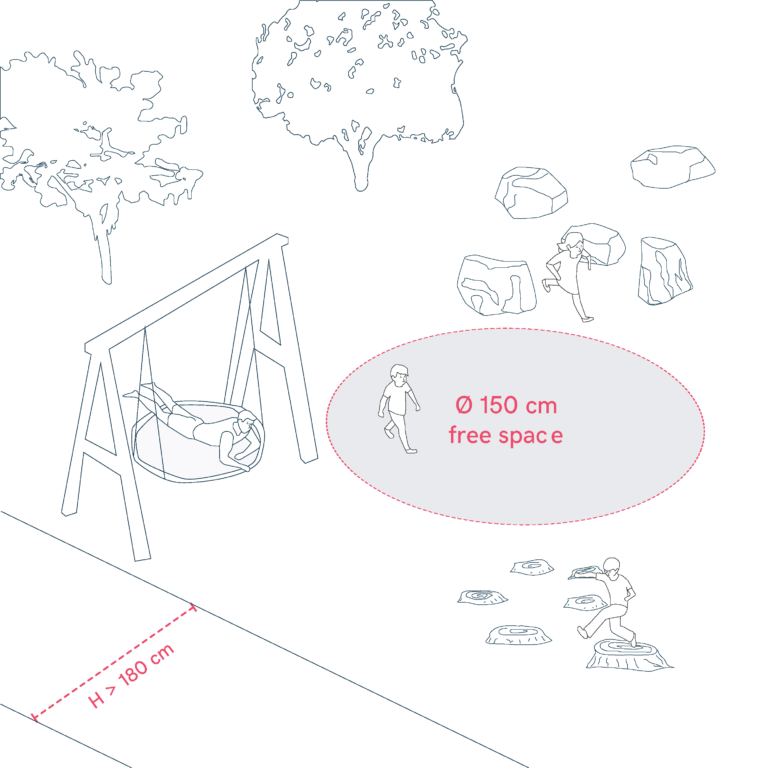
Design Accessible Play Areas
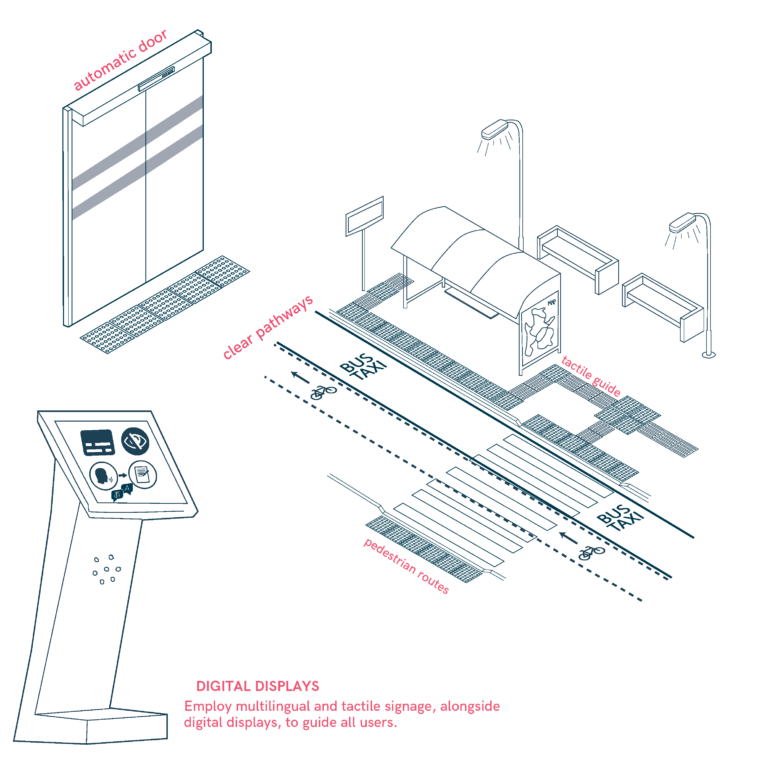
Design for Everyone’s Journey
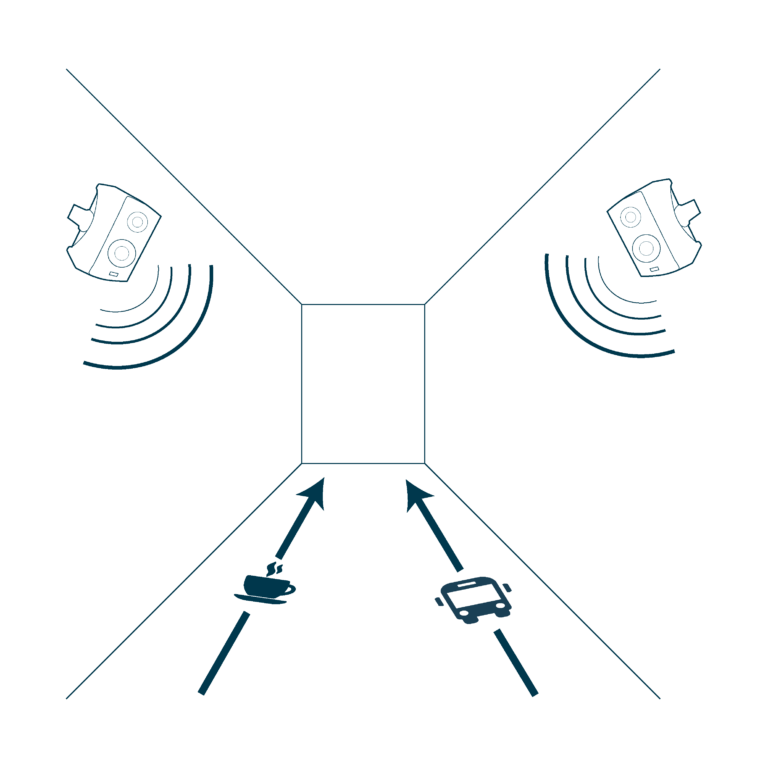
Designing Hallways on Passenger Vessels
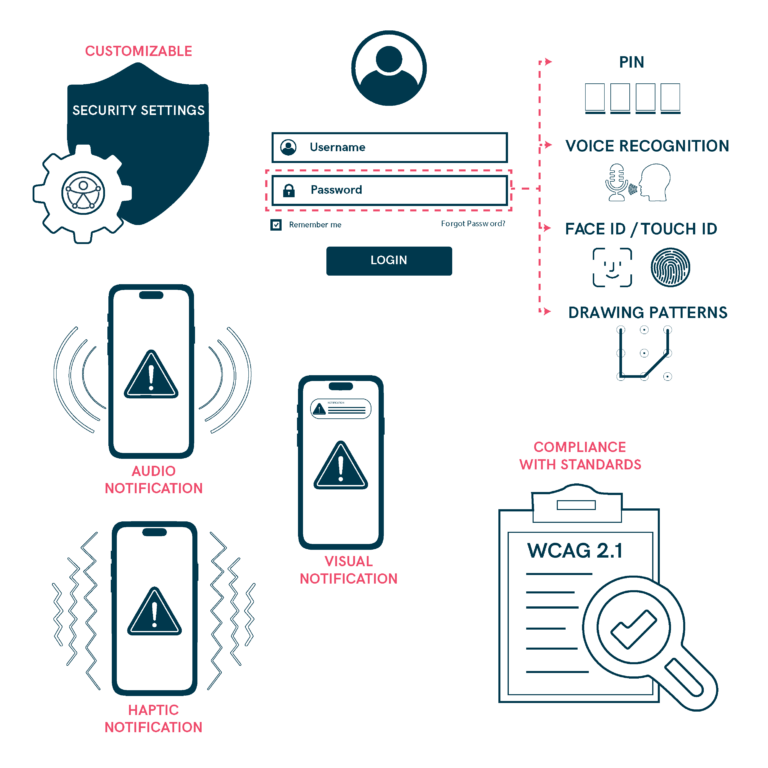
Develop Digital Interfaces
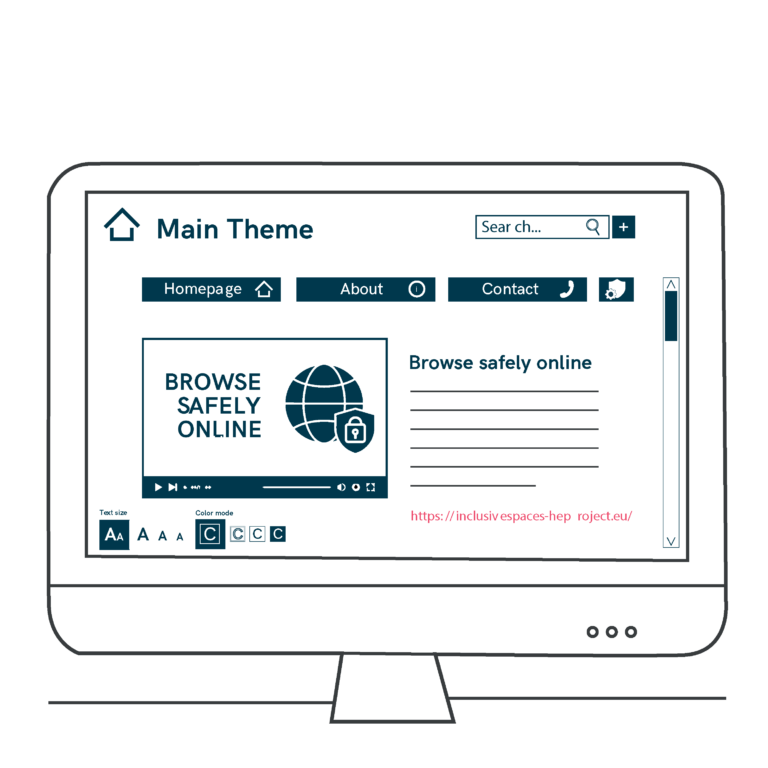
Digital Content for Clarity
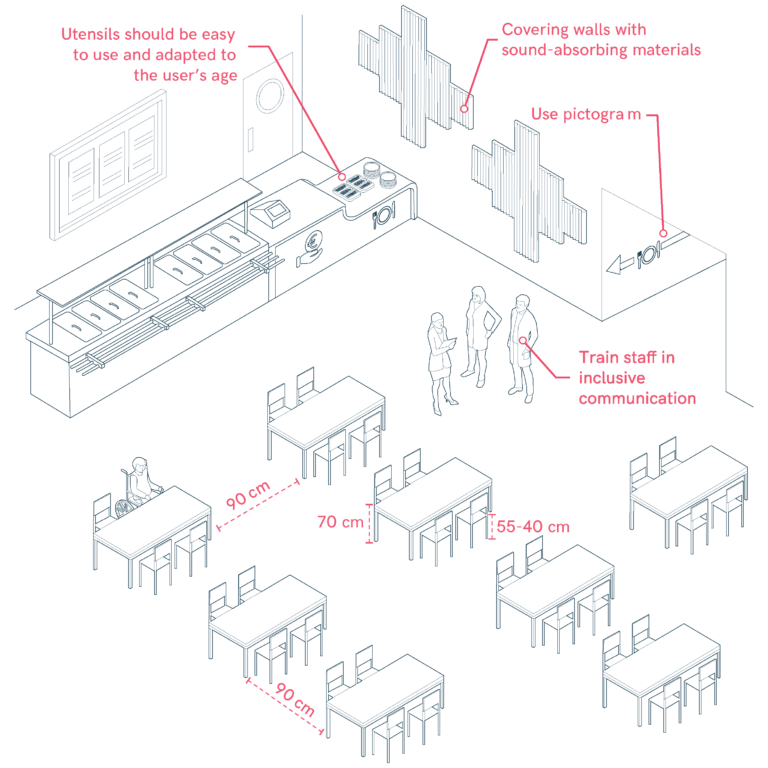
Dining Room Accessibility
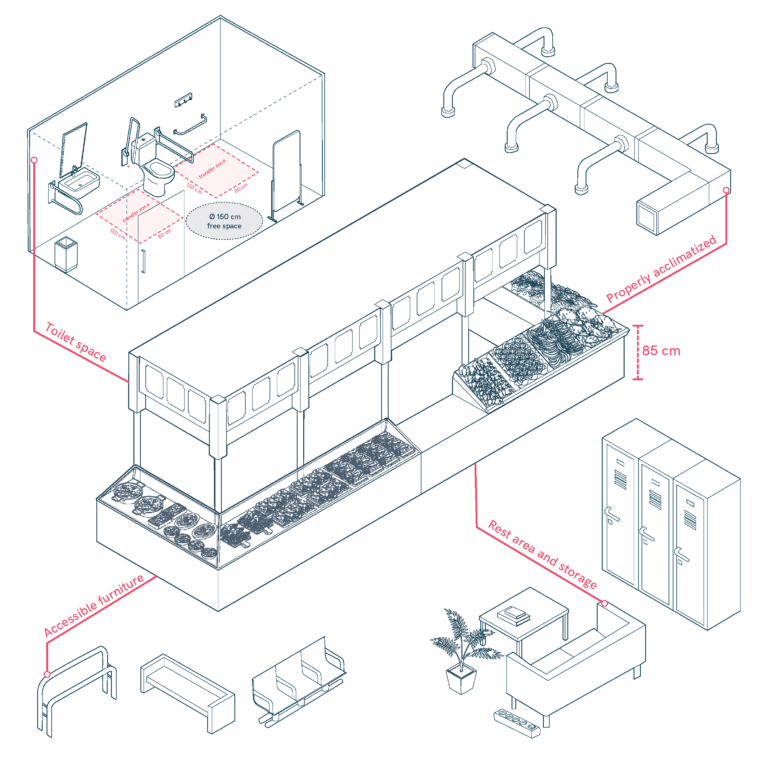
Diverse furniture and Market Stalls
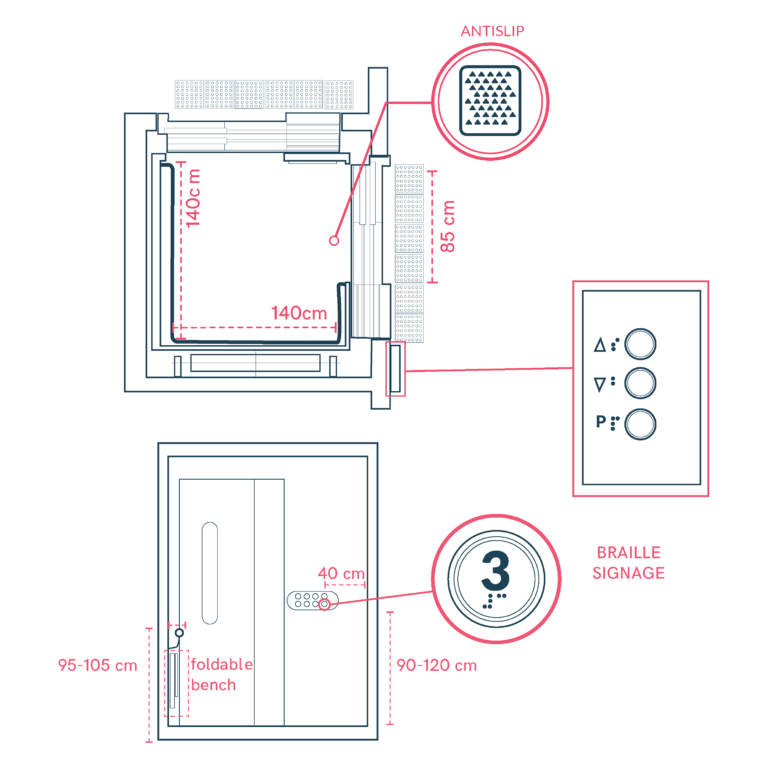
Elevator Cabin Design
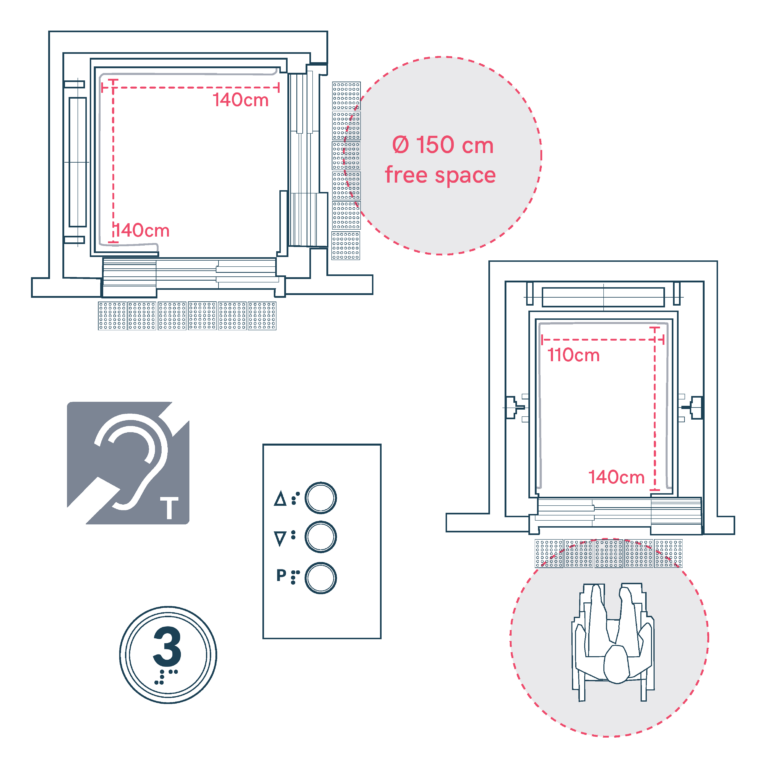
Elevator Design for Accessibility

Emotional Accessibility
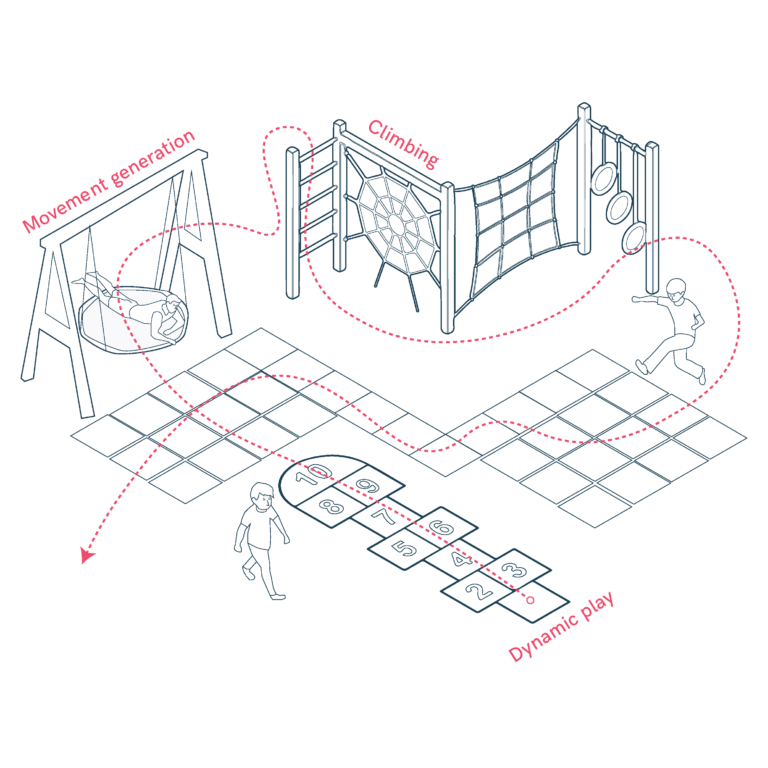
Encourage Mixed-Use Play Areas
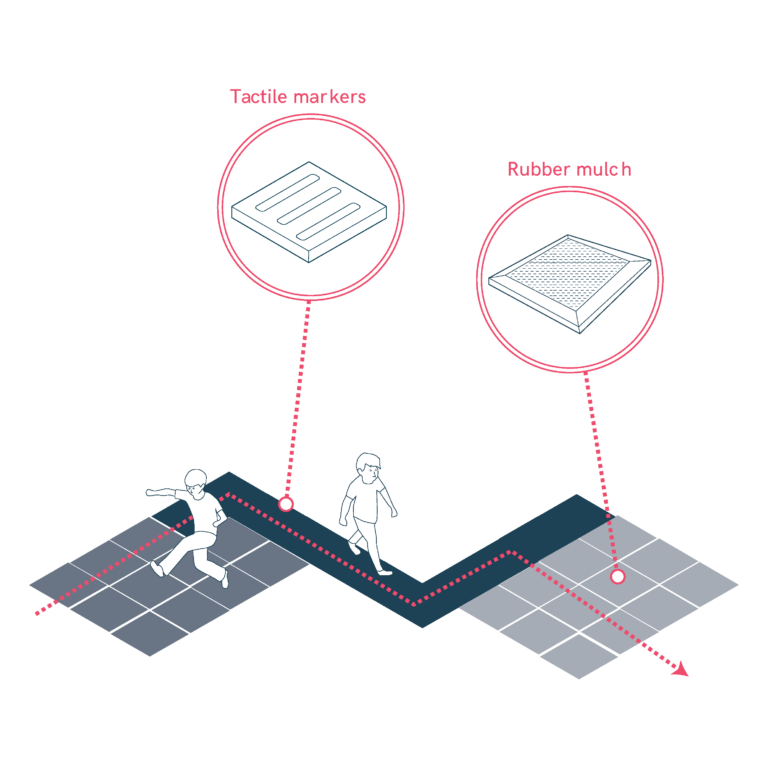
Ensure Accessible Ground Design
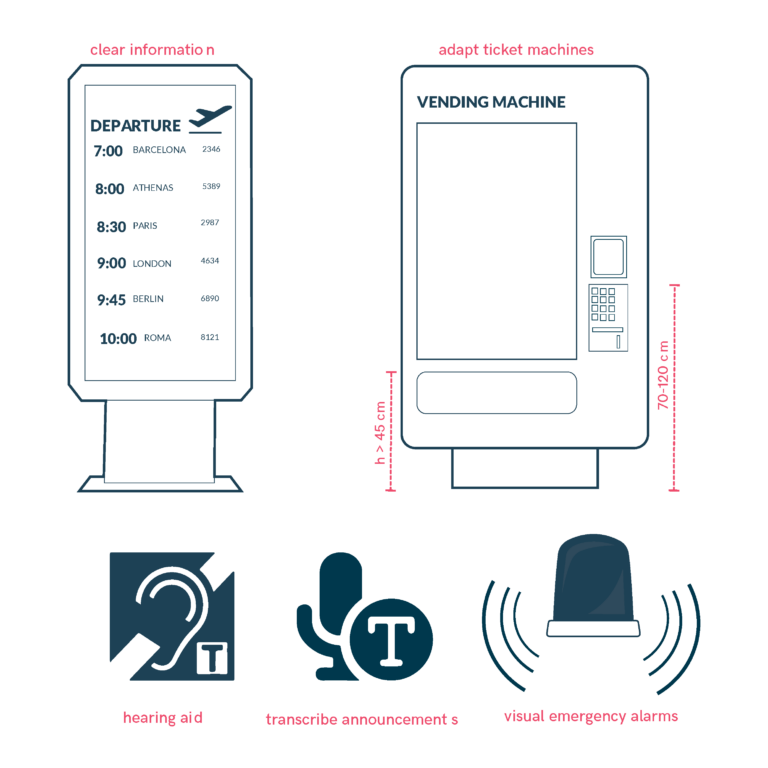
Ensuring Accessibility at Airports
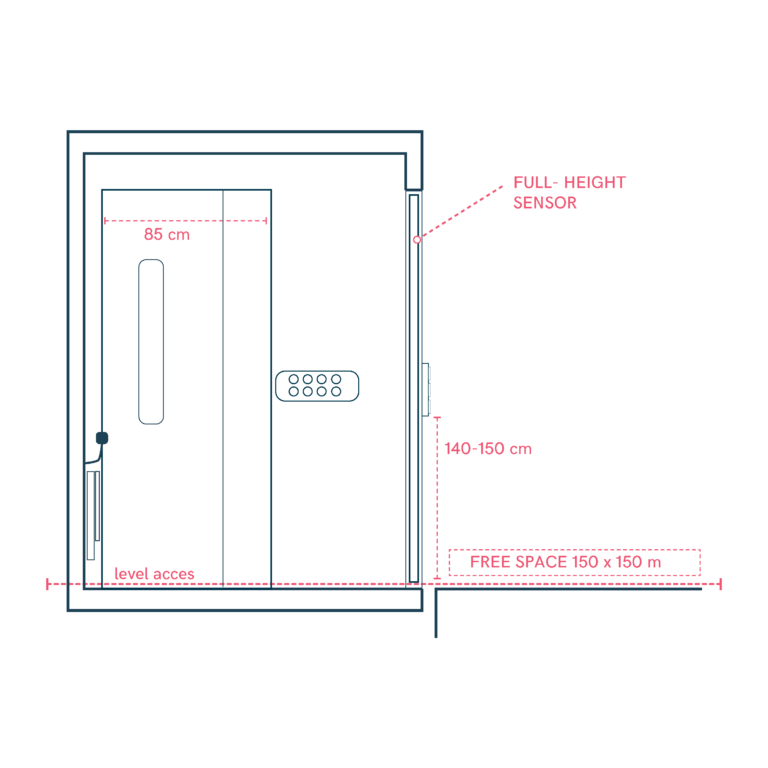
Entry, Door, and Safety Features in Elevators
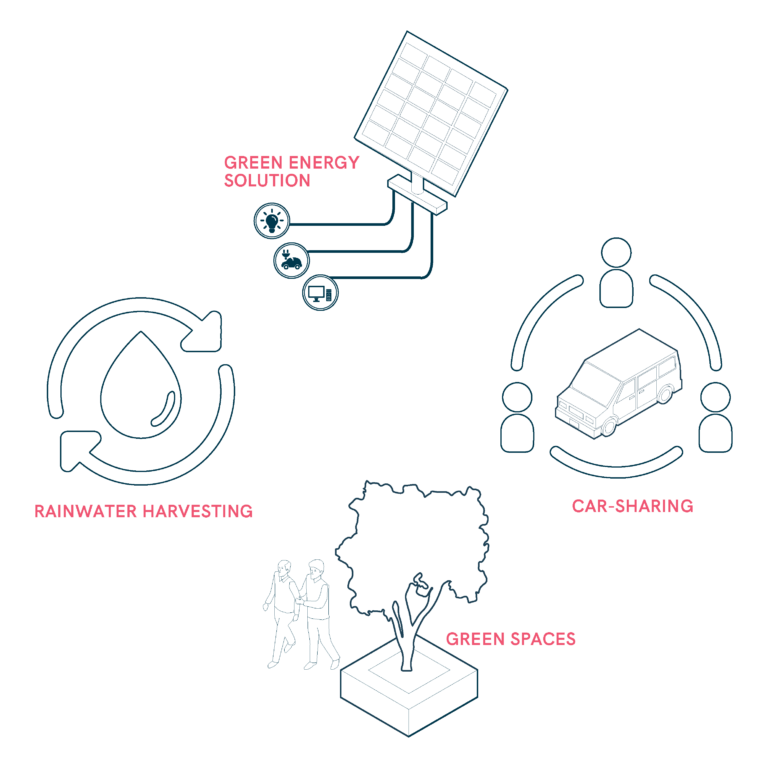
Environmental Sustainability at Mobility Hubs
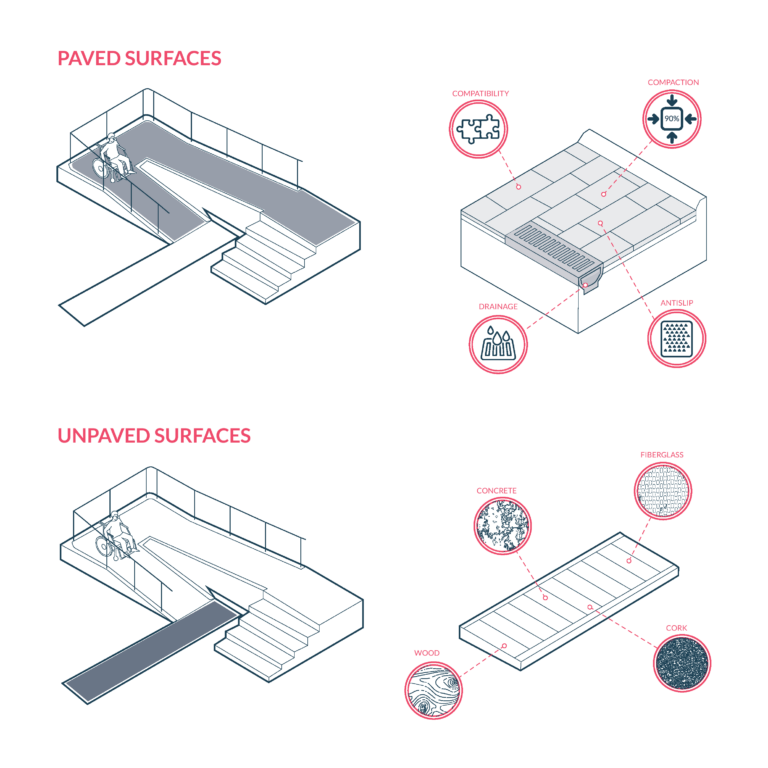
Equip Accessible Points with Essential Amenities

Ergonomic and Inclusive Furniture
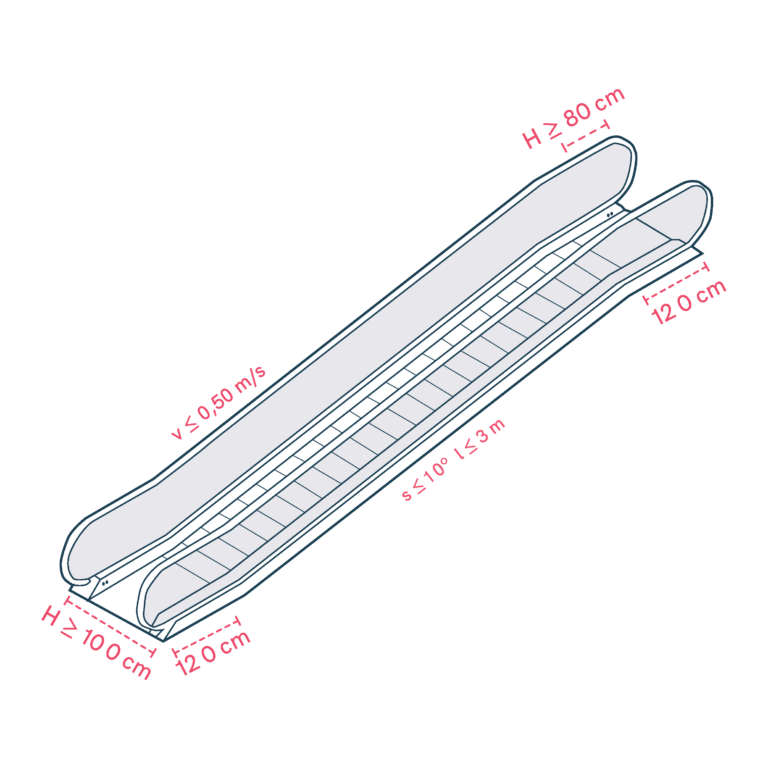
Escalators and Moving Walkways
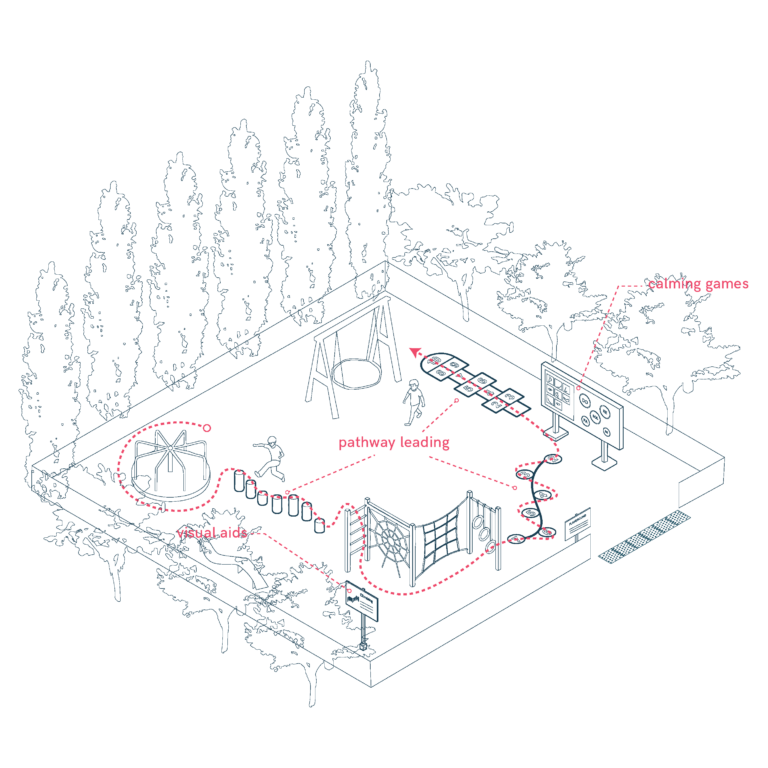
Facilitate Transitions and Waiting Times
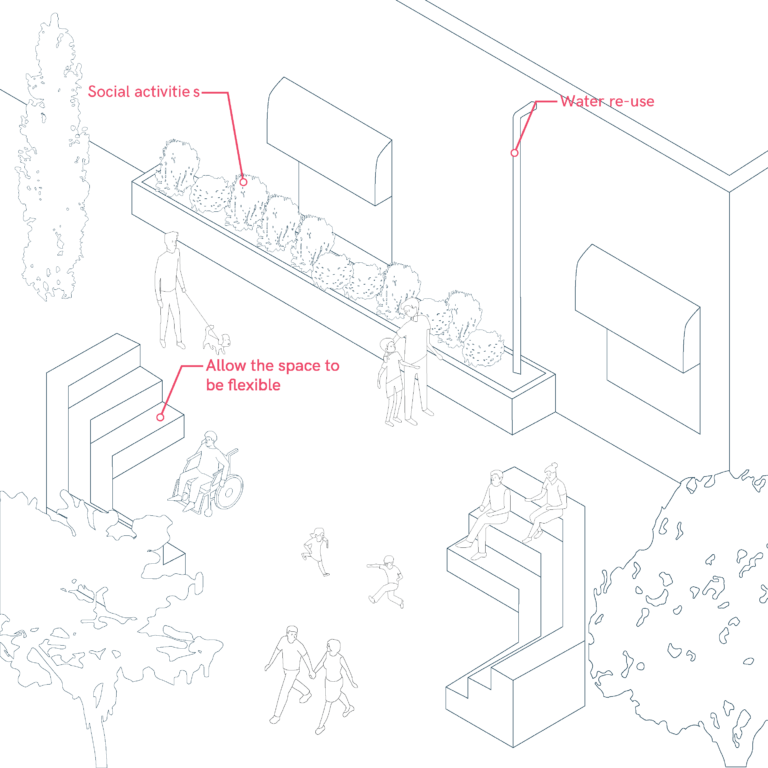
Flexible Use and Community Engagement
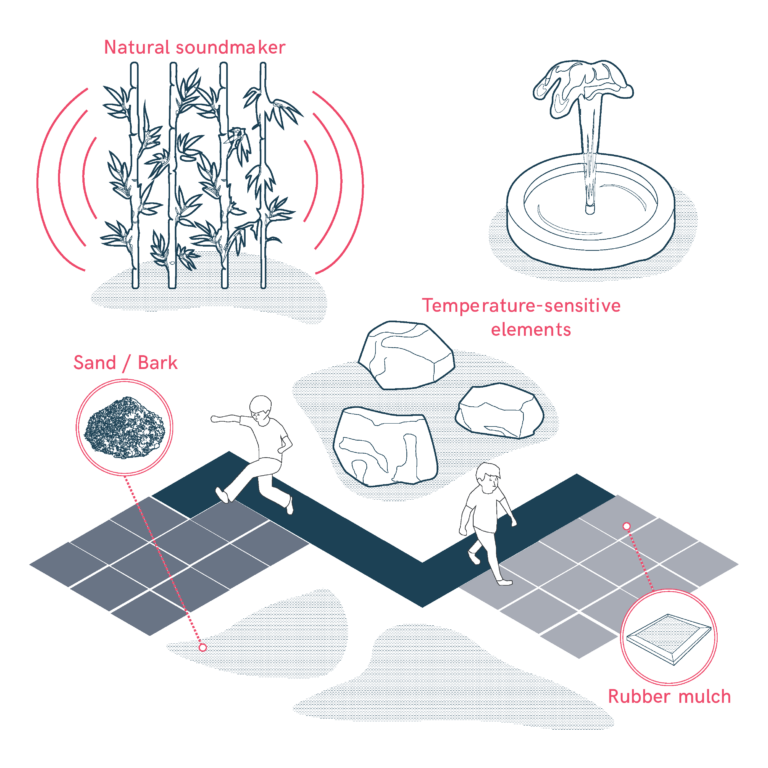
Foster Sensory Play Opportunities
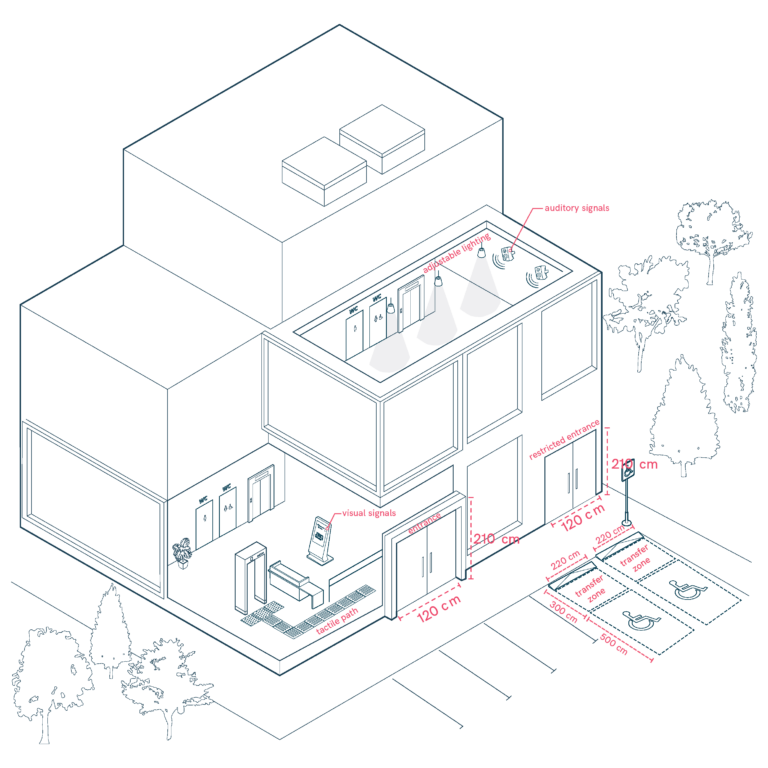
General Aspects of State Buildings

General-Use Stairs
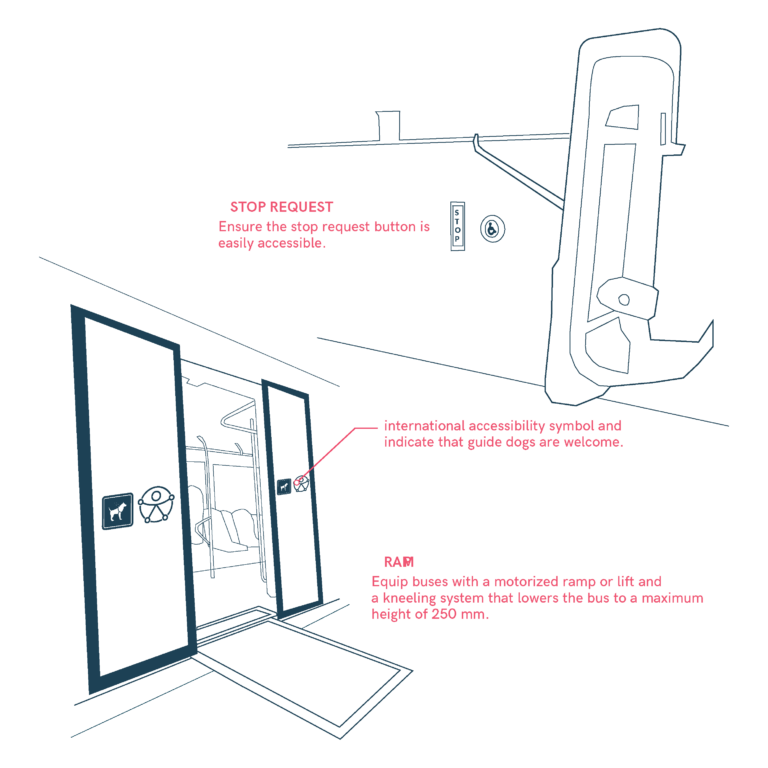
Getting On and Off the Bus
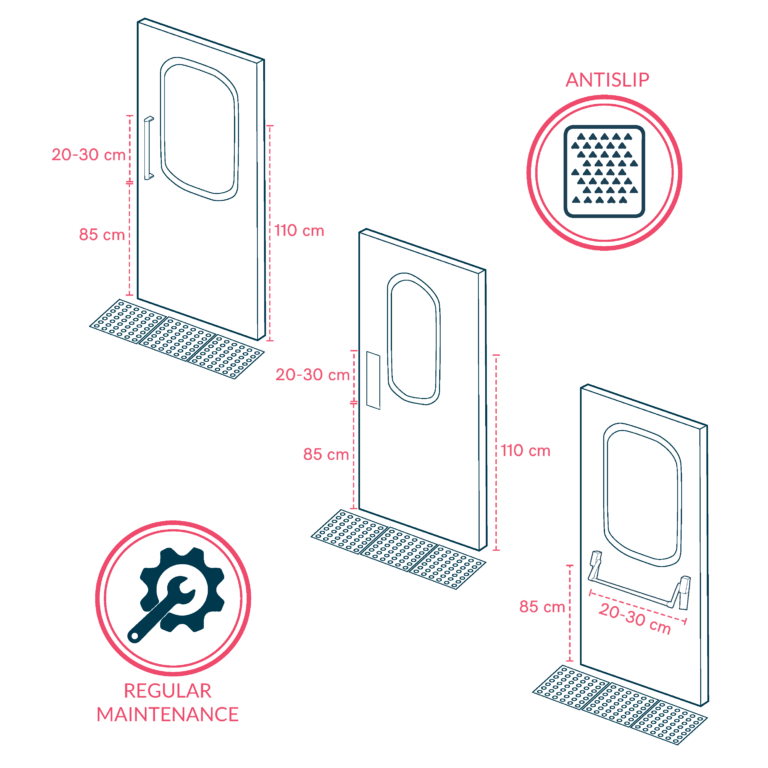
Handles, Pulls, and Latches for Inclusive Design
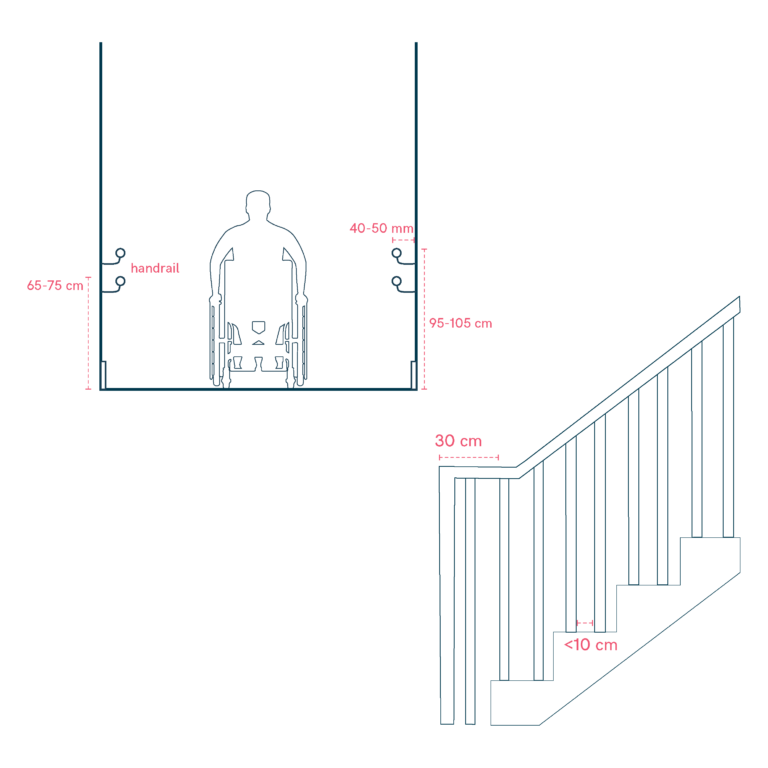
Handrails
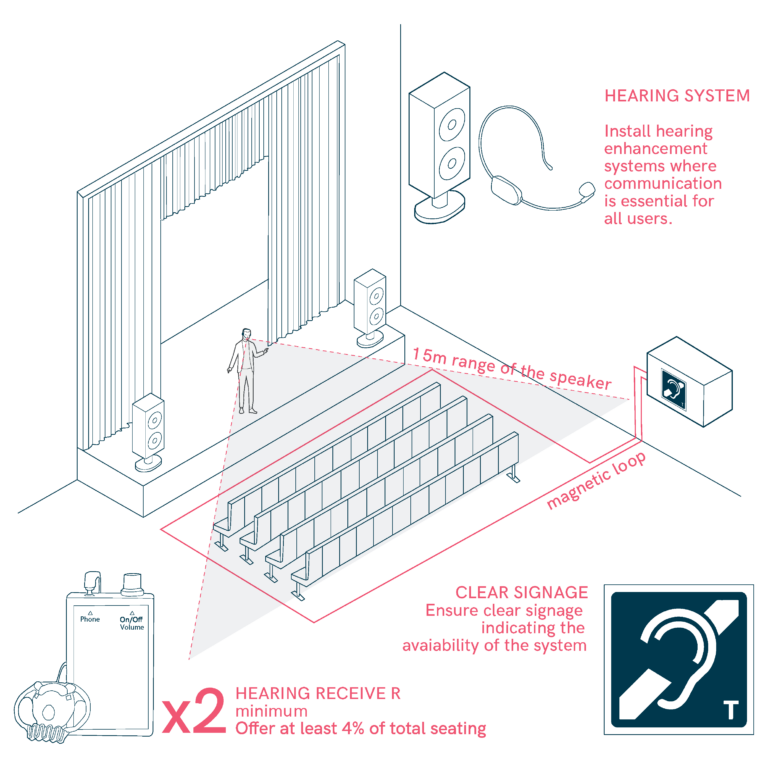
Hearing Enhancement Systems
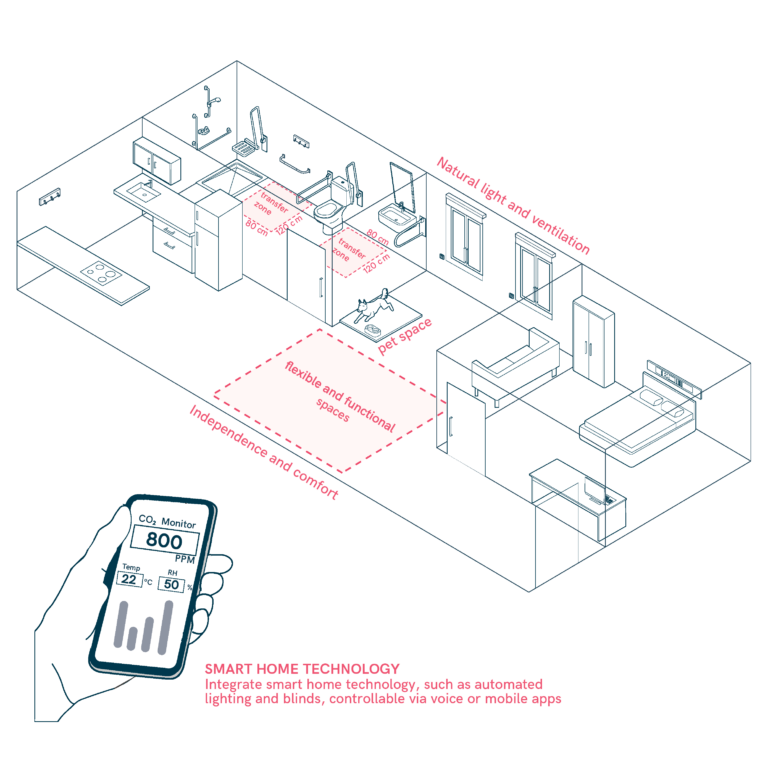
Home
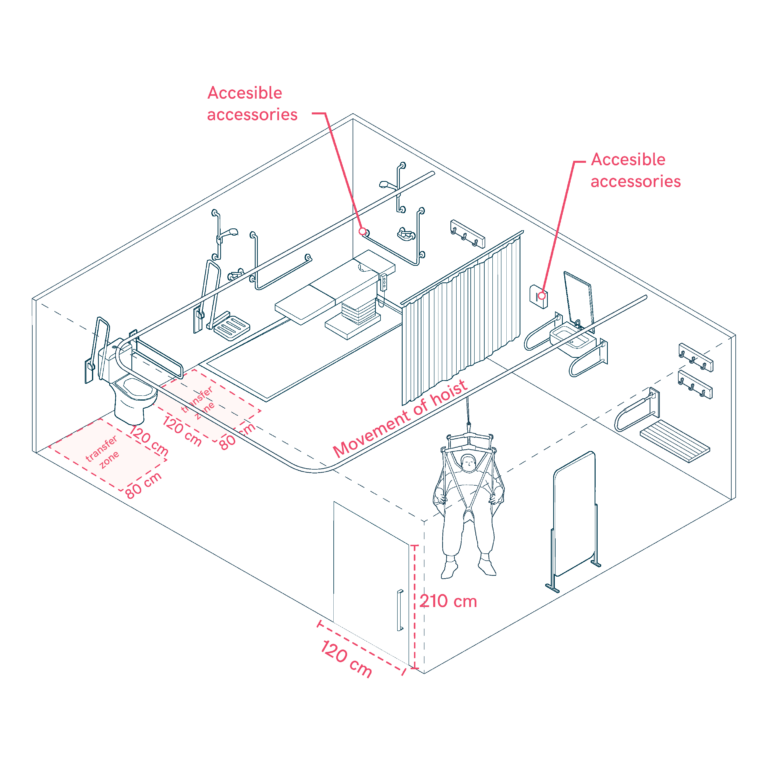
Hospital Bathrooms
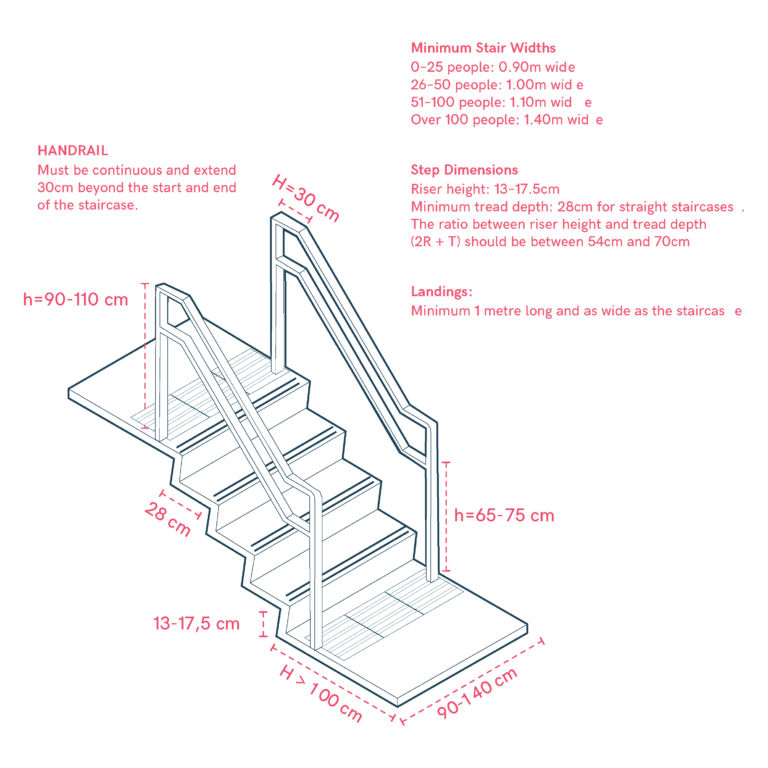
Hospital Staircases
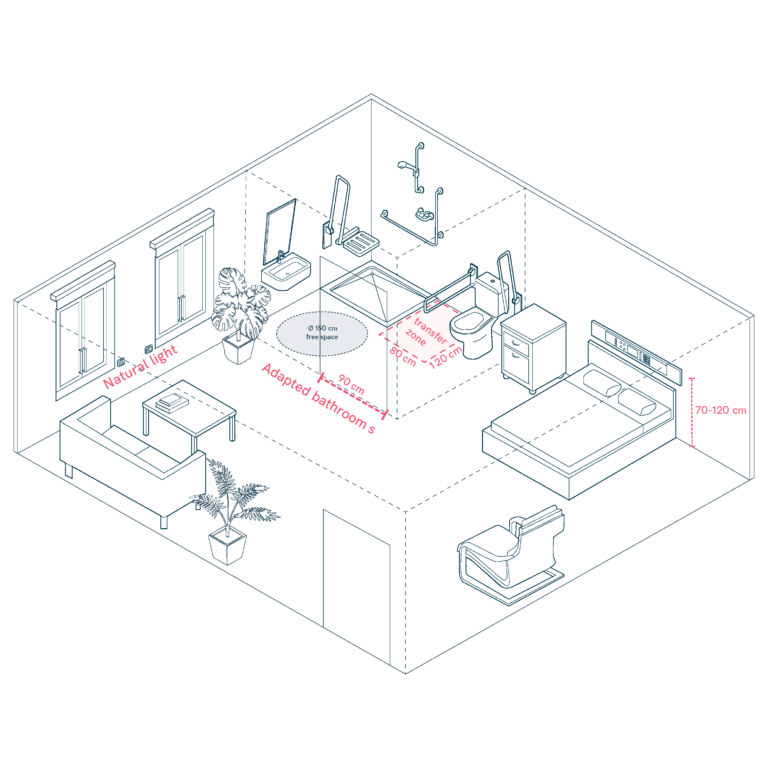
Humanised Patient Rooms
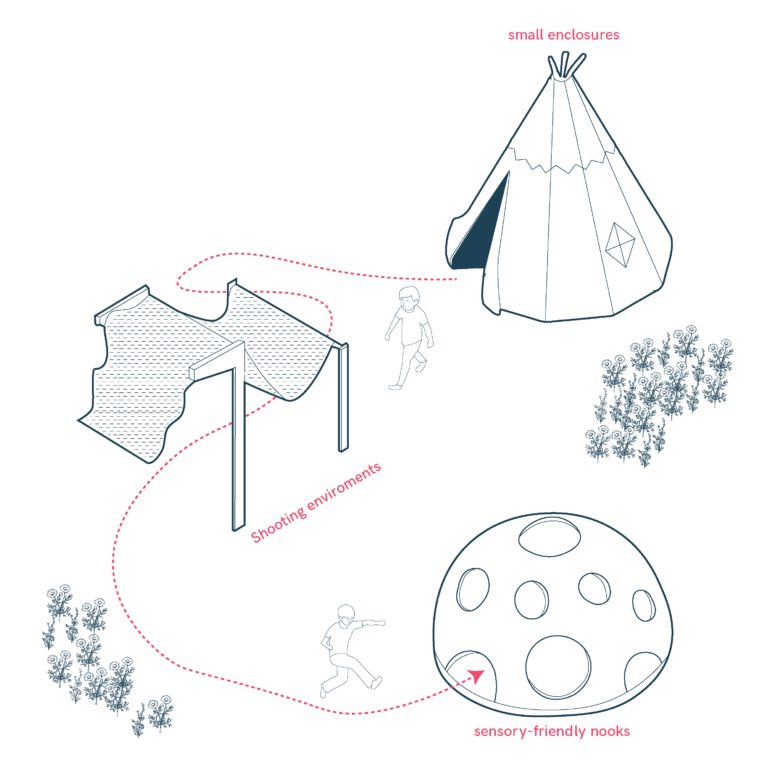
Include Calm/Haven Spaces
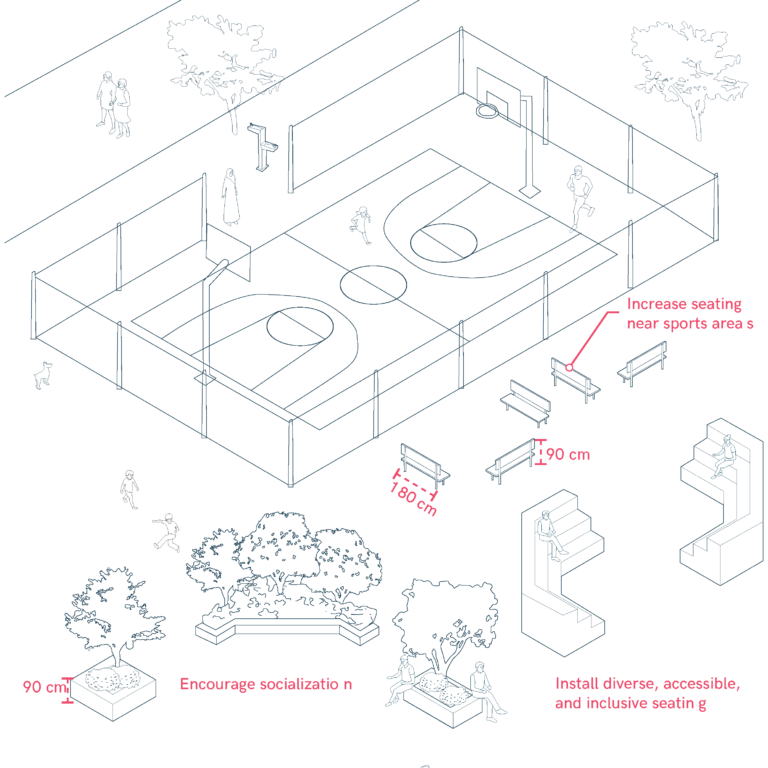
Inclusive and Comfortable Seating
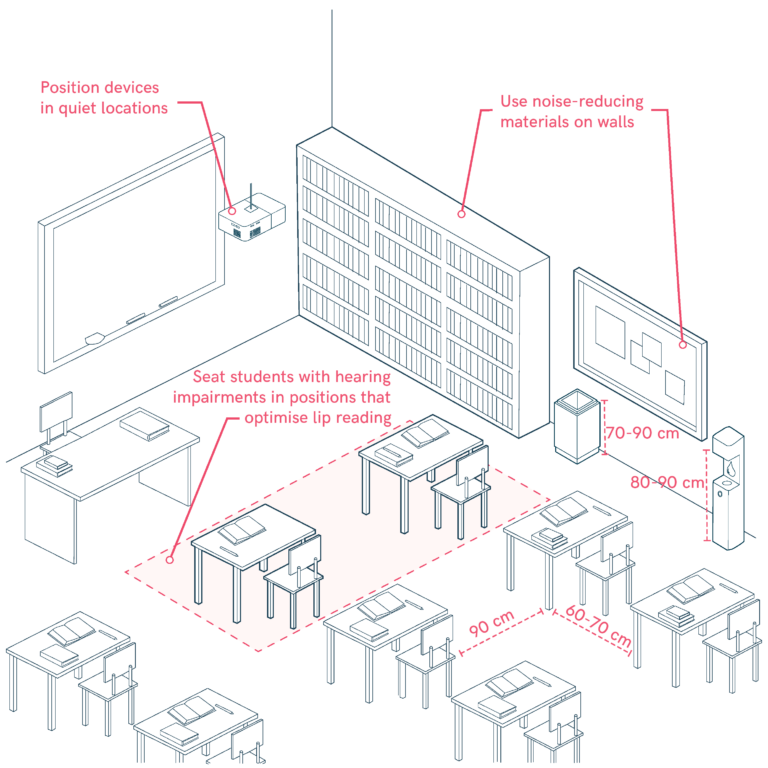
Inclusive Classroom Design

Inclusive Digital Experience
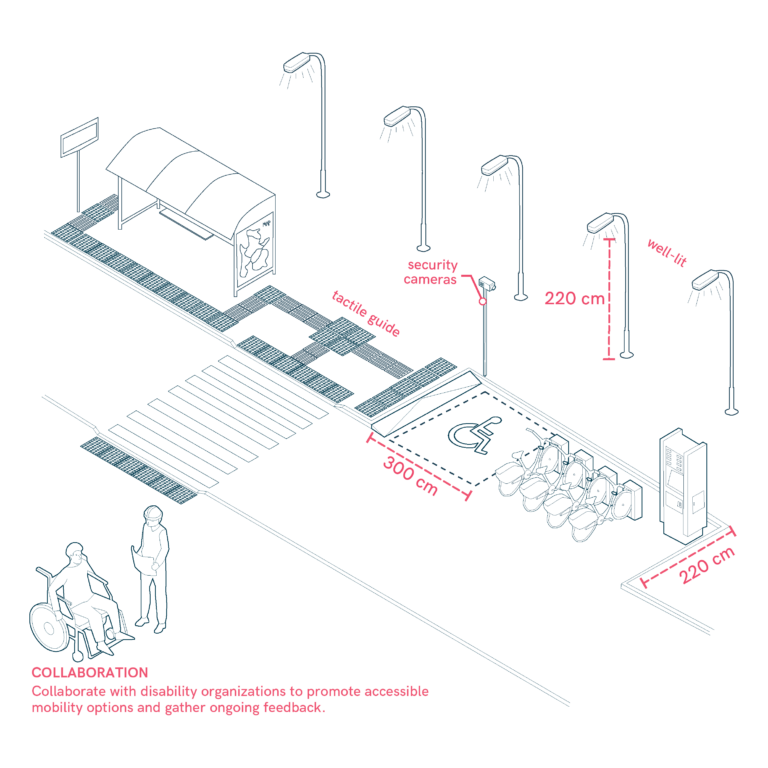
Inclusive Mobility for People with Disabilities
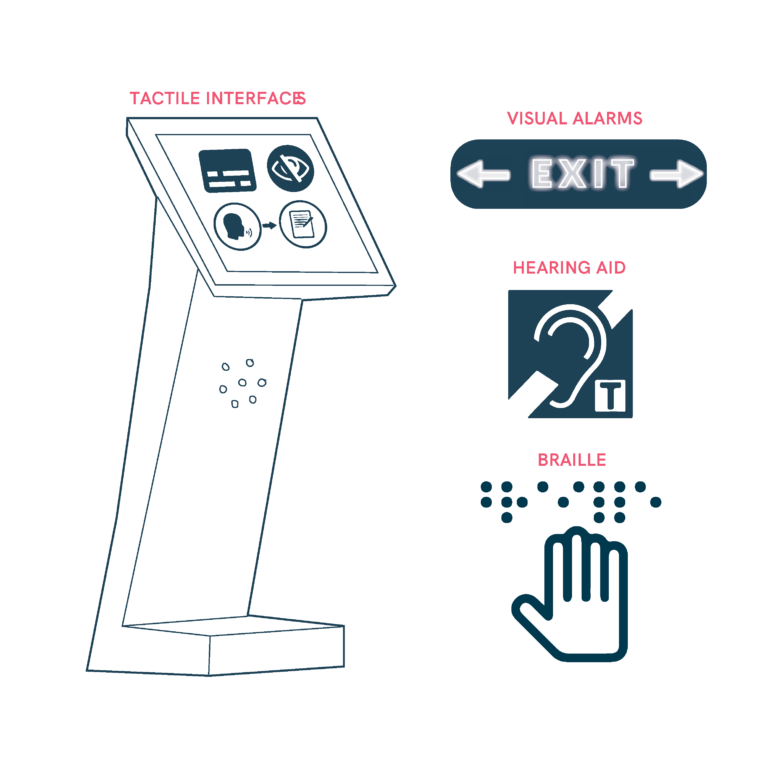
Inclusive Ticketing and Fare Systems at Mobility Hubs
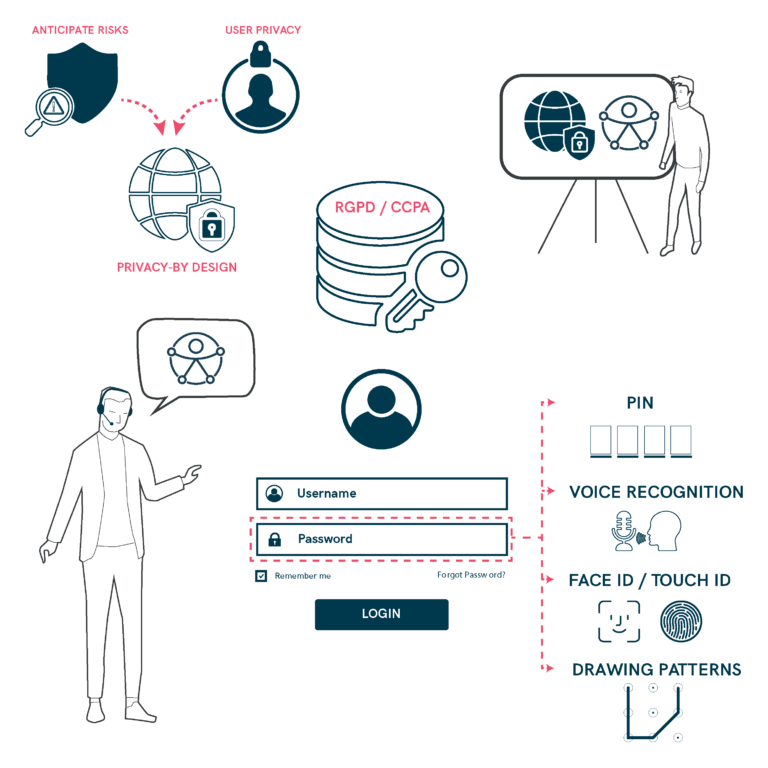
Inclusive Web Environments
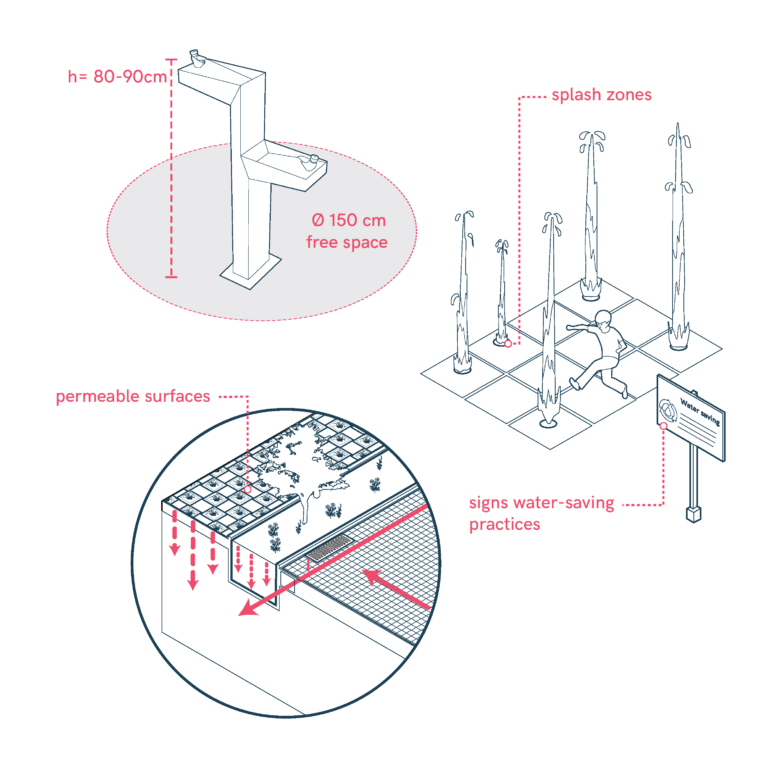
Incorporate Fountains and Water Features
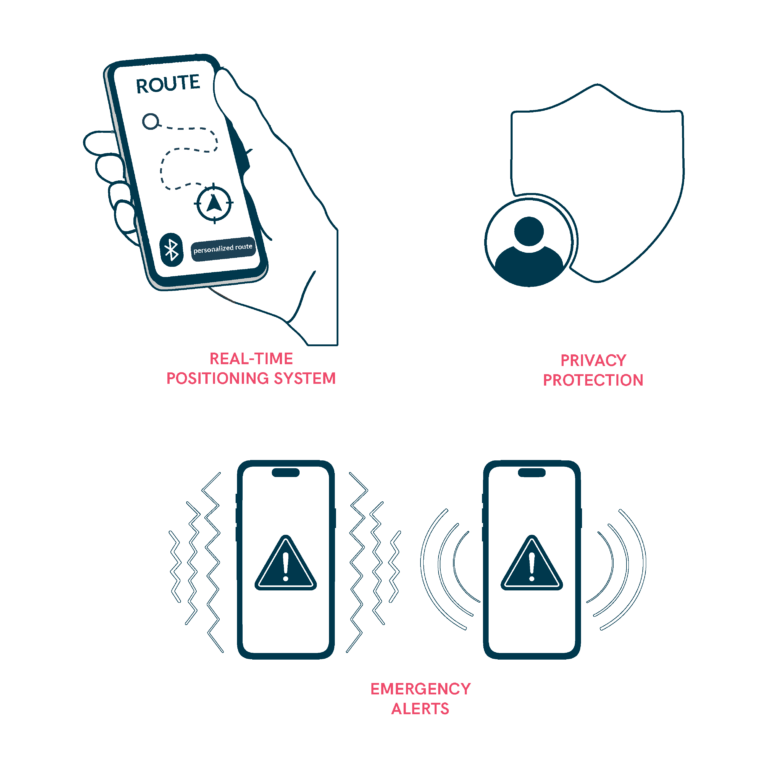
Indoor Assistive Technologies
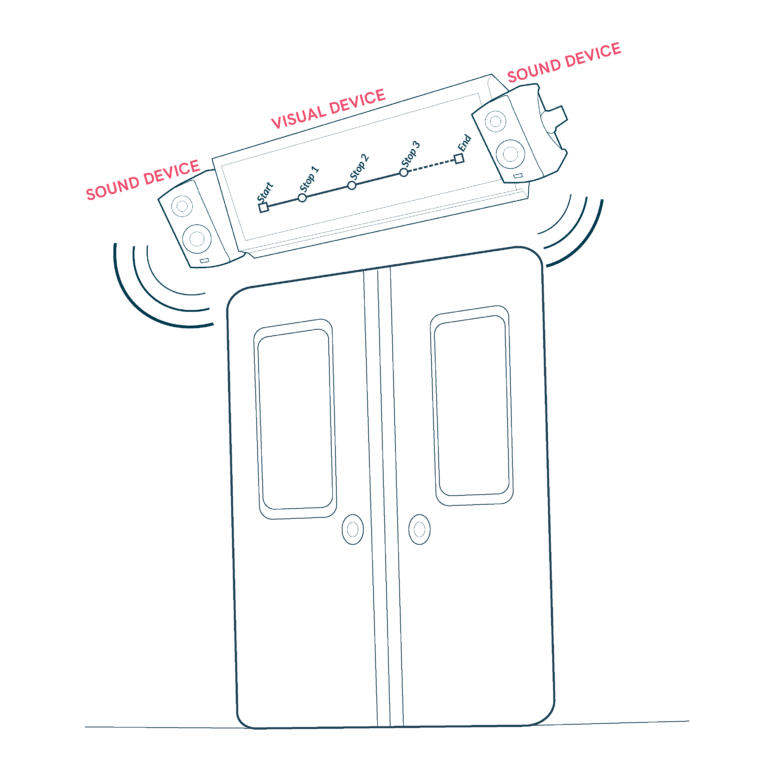
Information Systems in Metro and Trams
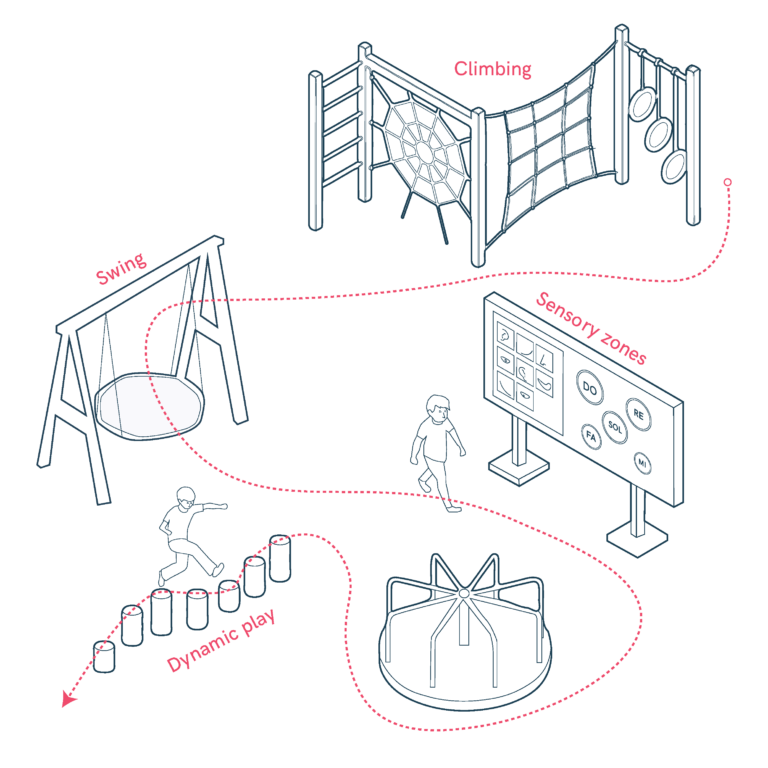
Install Diverse and Inclusive Play Equipment
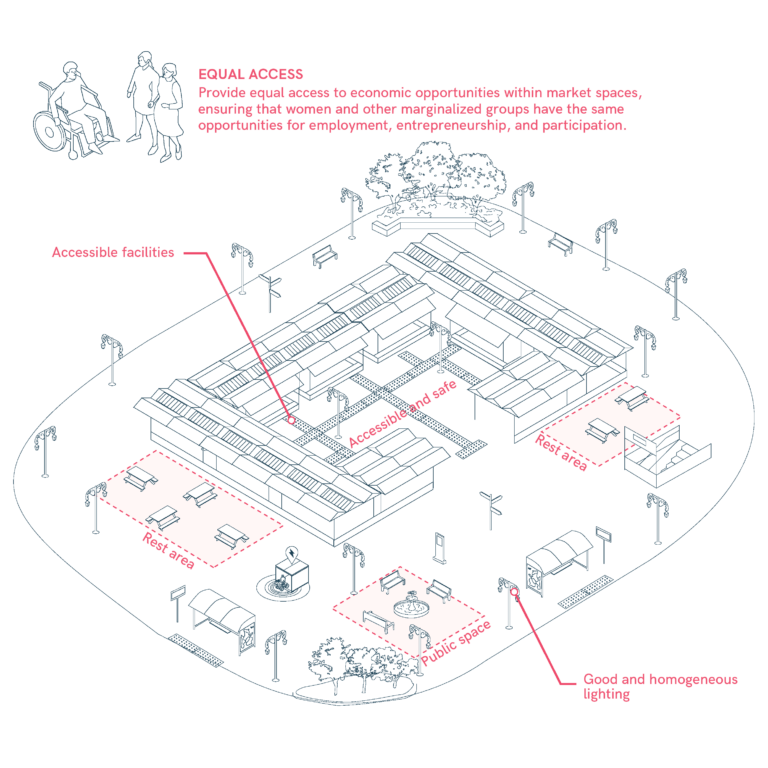
Integrate Markets a Gender Perspective
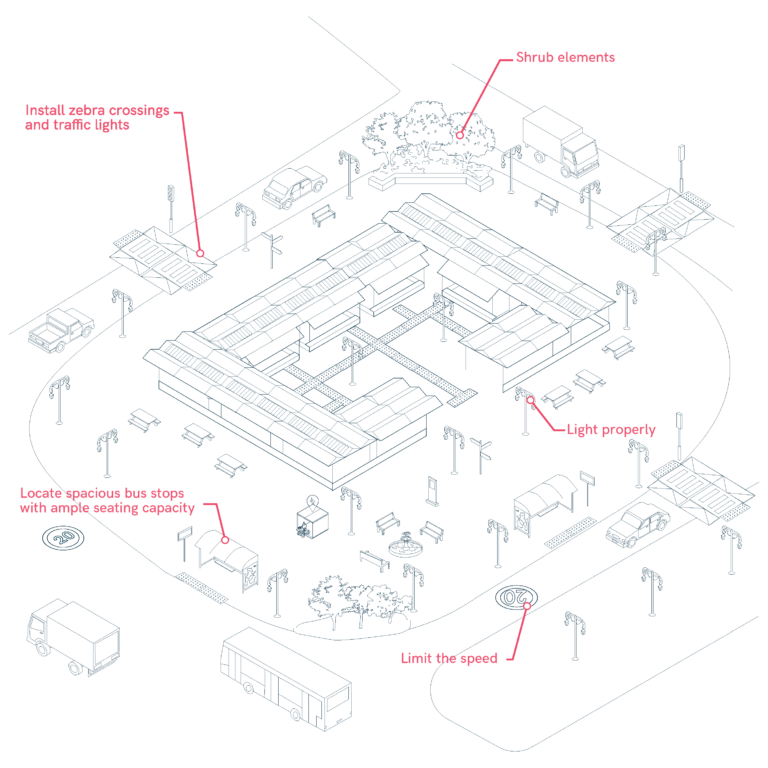
Intensify neighborhood circulation near markets
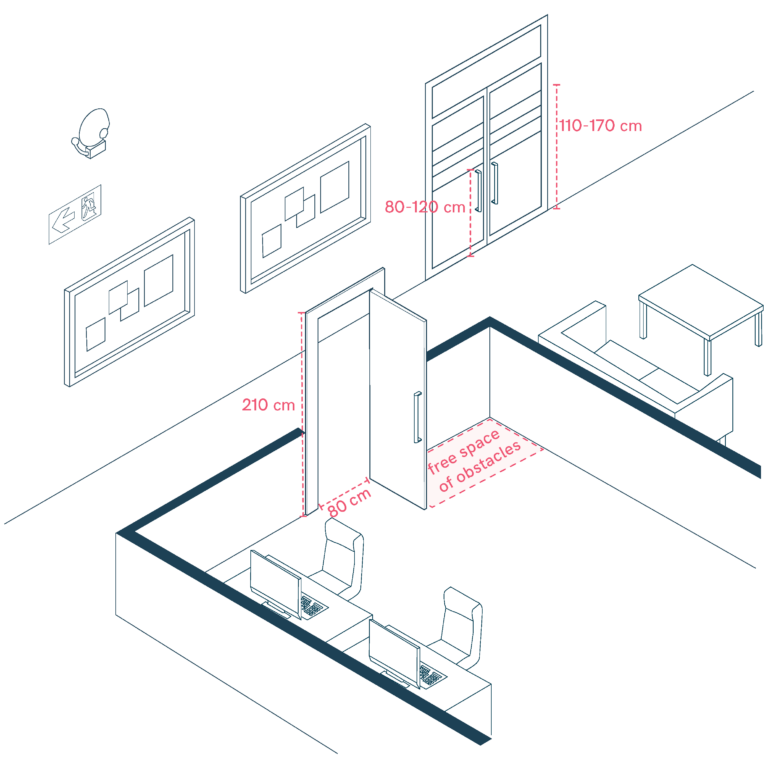
Interior Doors
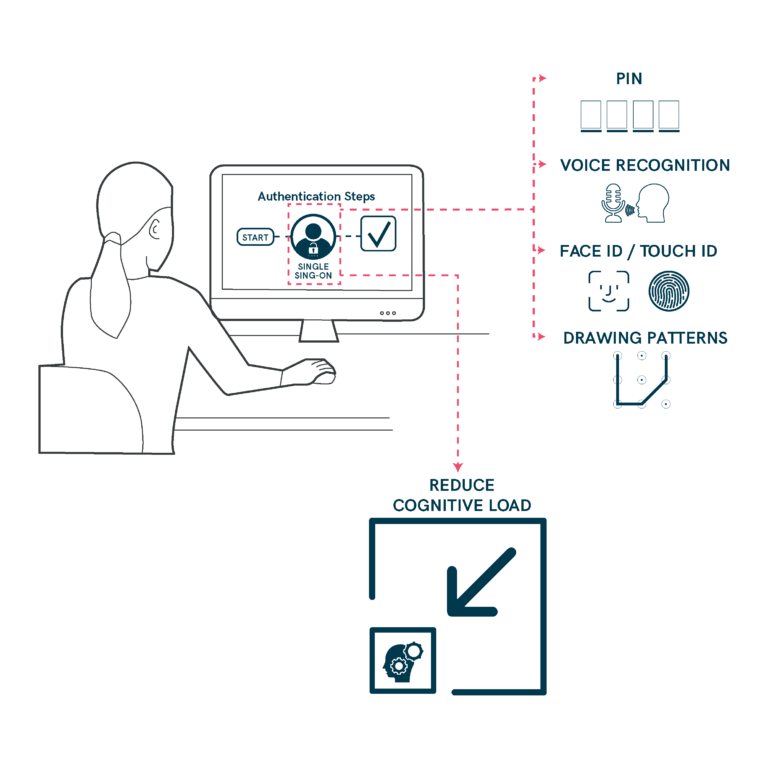
Intuitive Virtual Navigation Flows
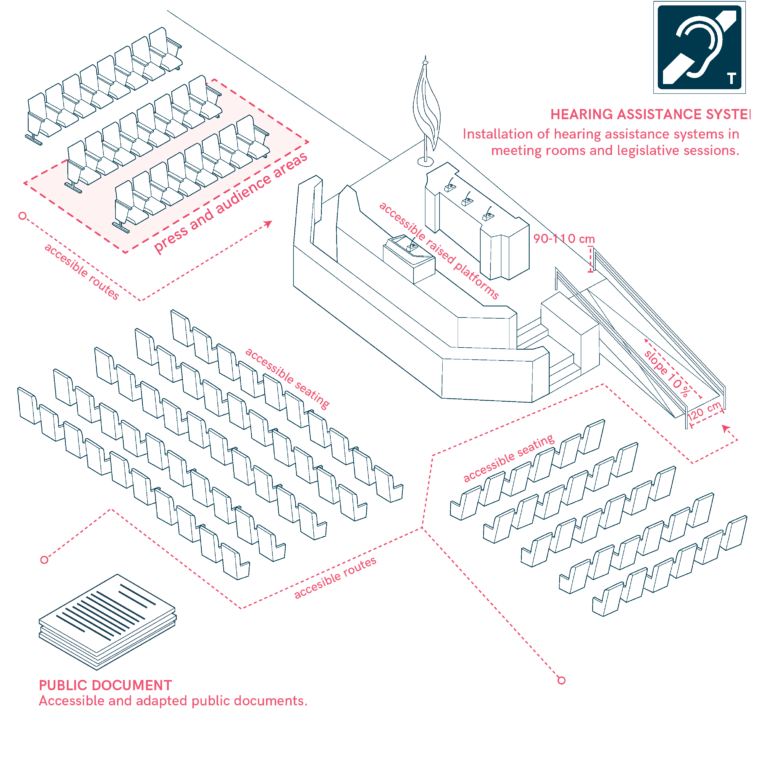
Legislative Buildings
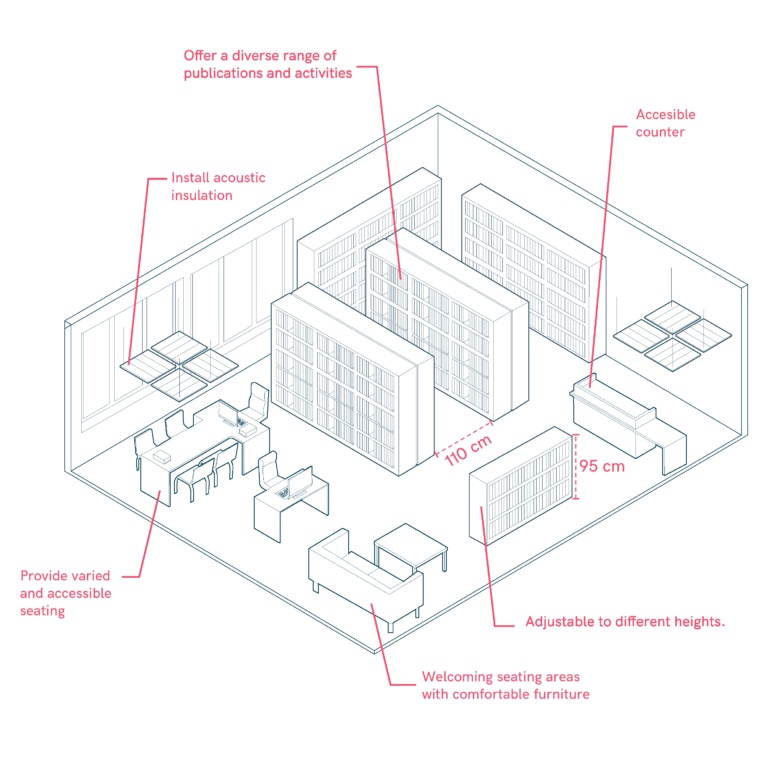
Libraries
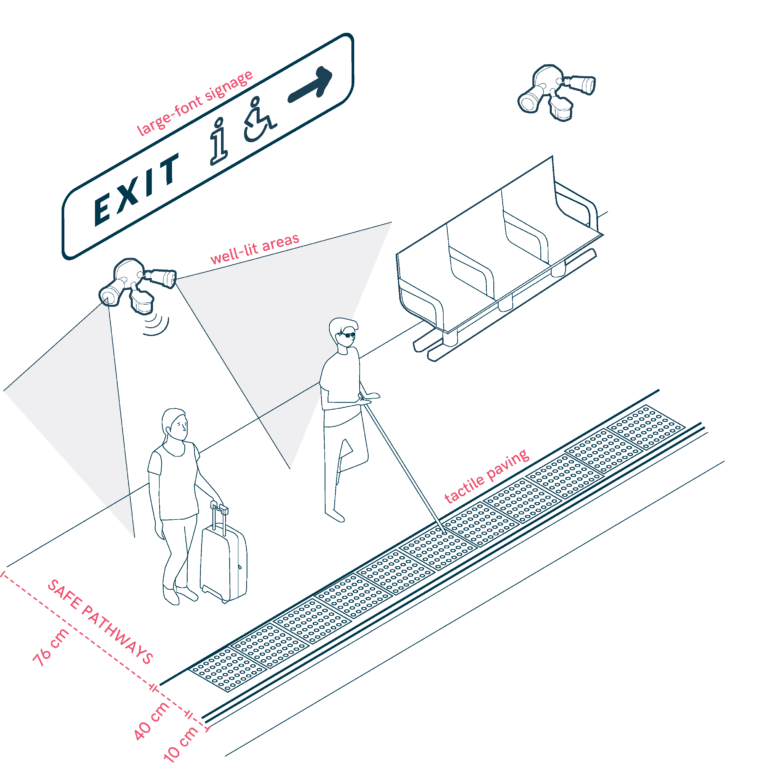
Lighting and Visibility Enhancements
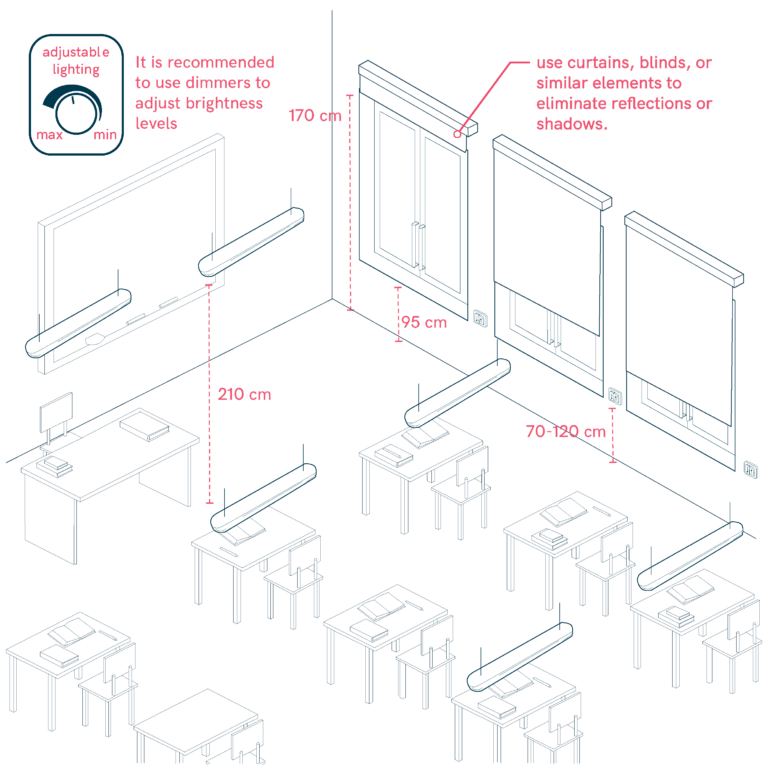
Lighting Considerations
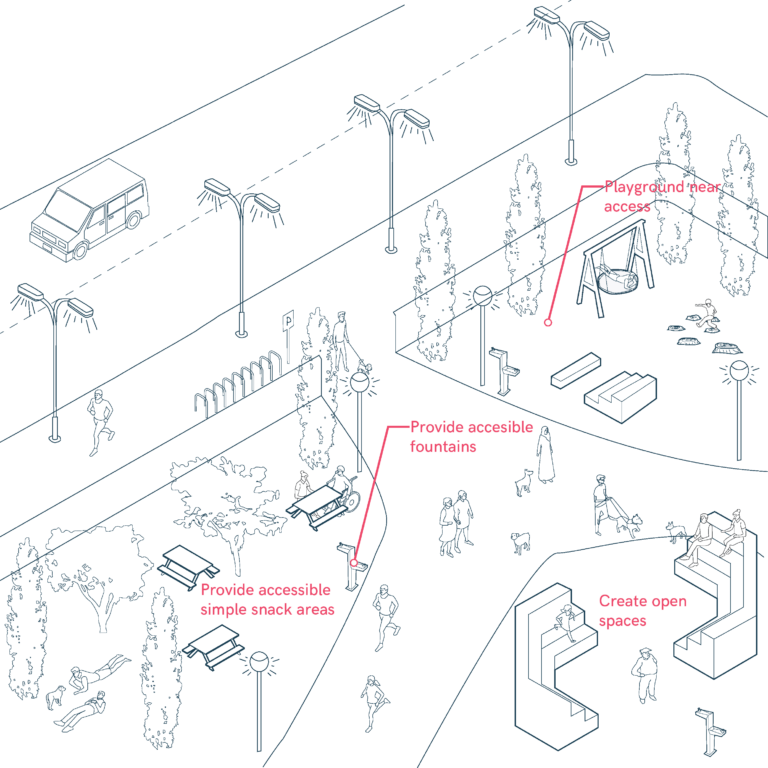
Meeting and Play Spaces
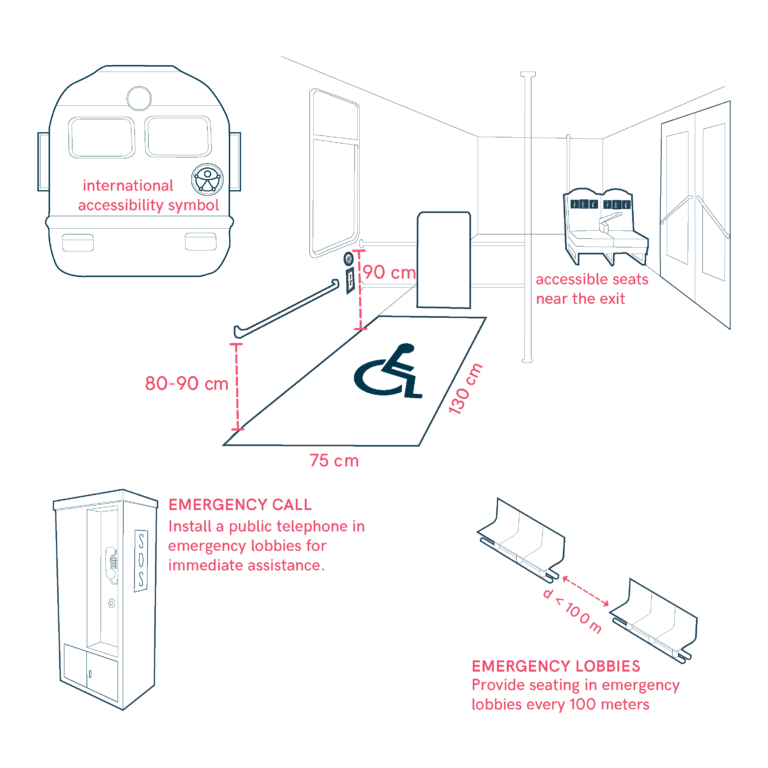
Metro and Tram Interior

Mitigate Spontaneous Escapes
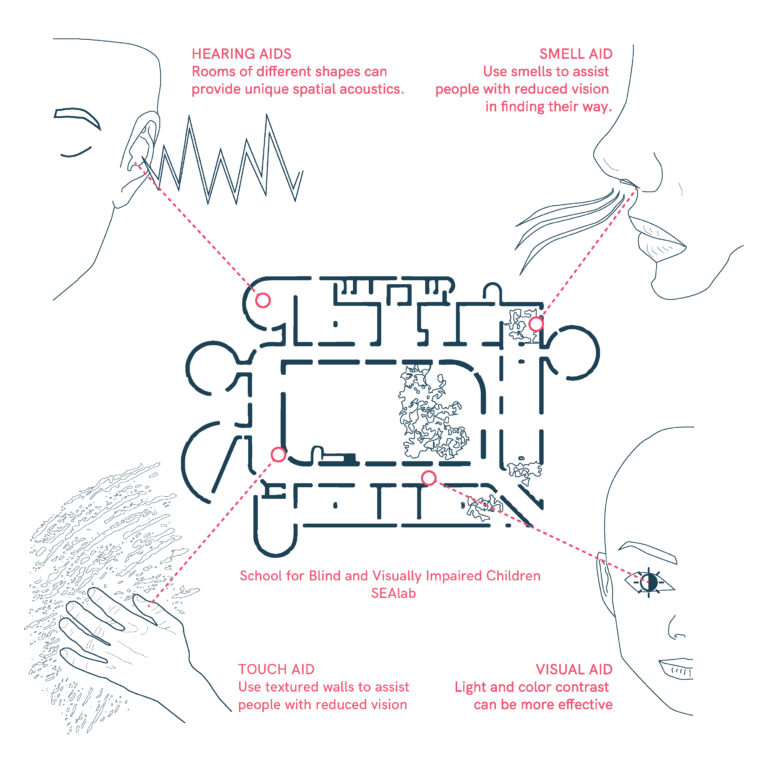
Multisensory Navigation and Spatial Orientation
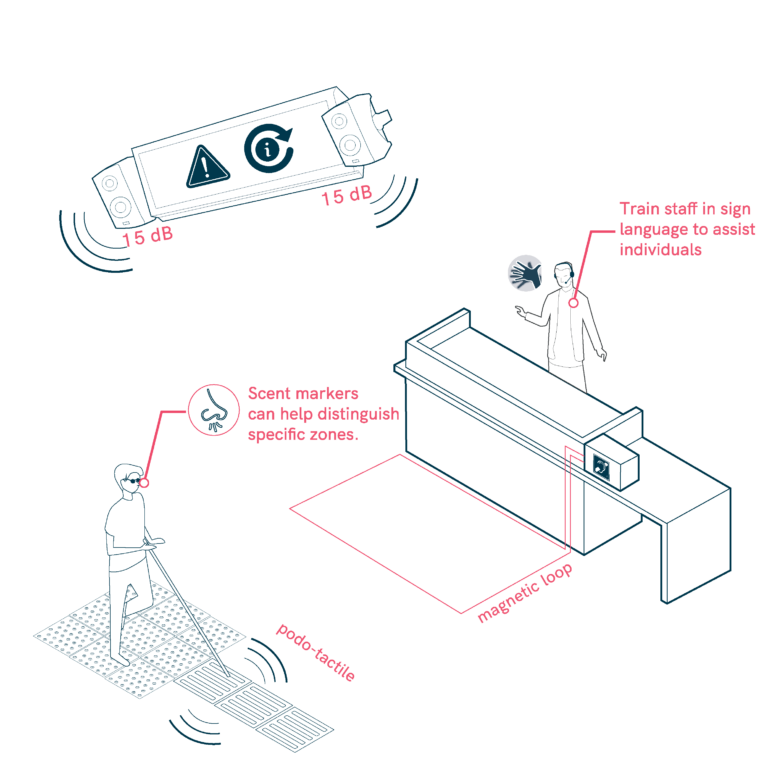
Multisensory Wayfinding
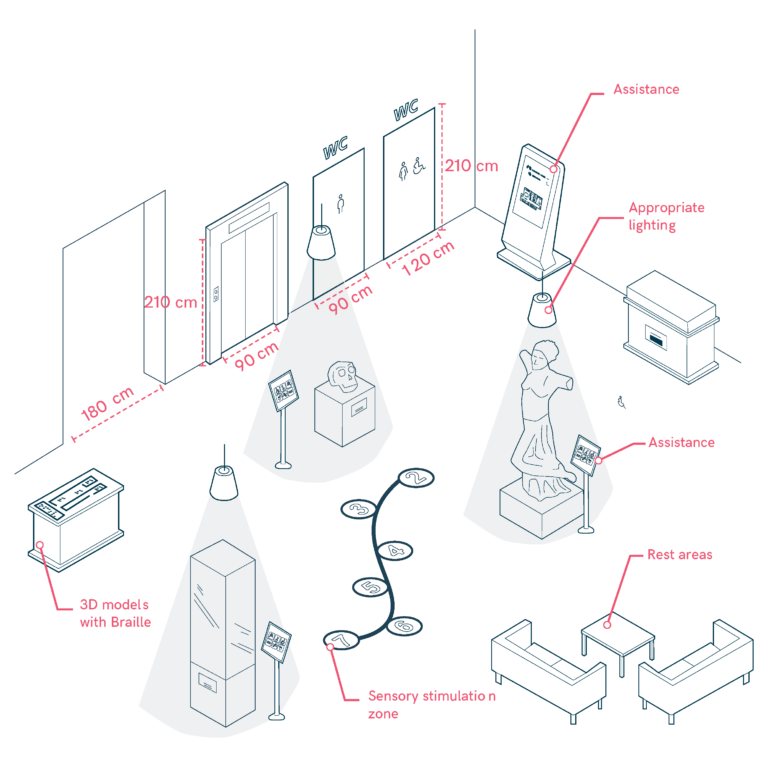
Museums and Heritage Sites
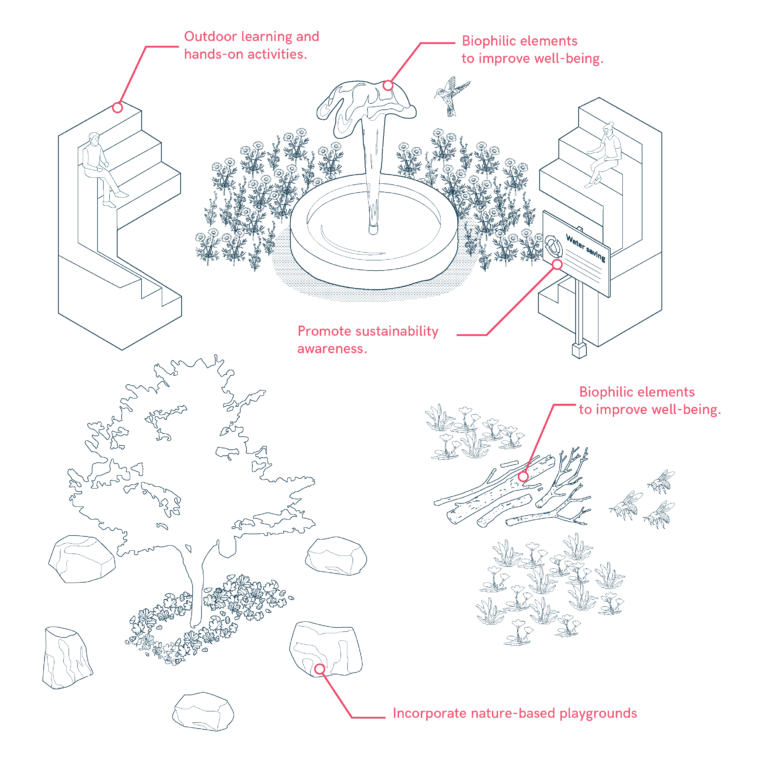
Natural Elements and Outdoor Learning
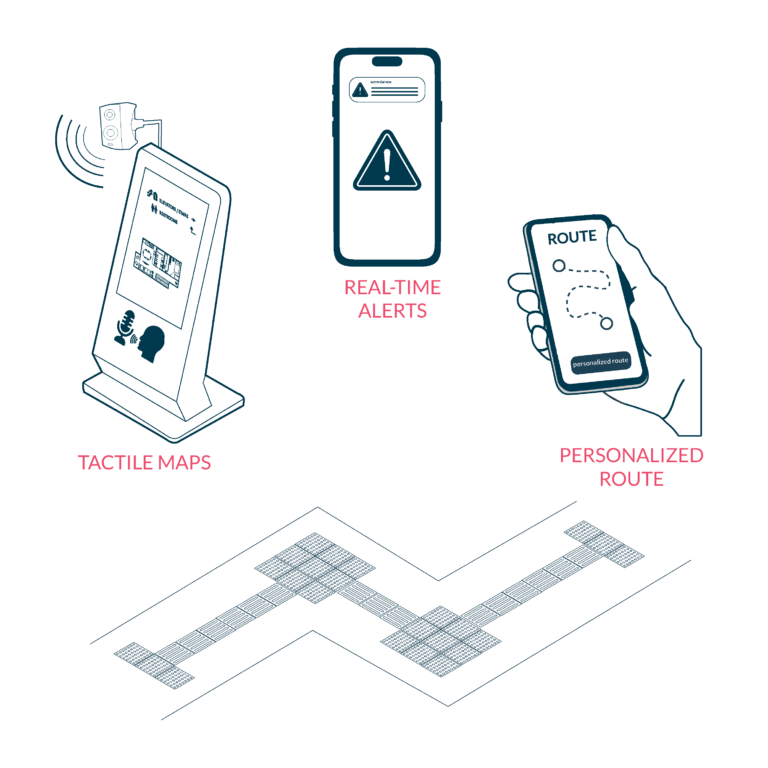
Navigation Assistance
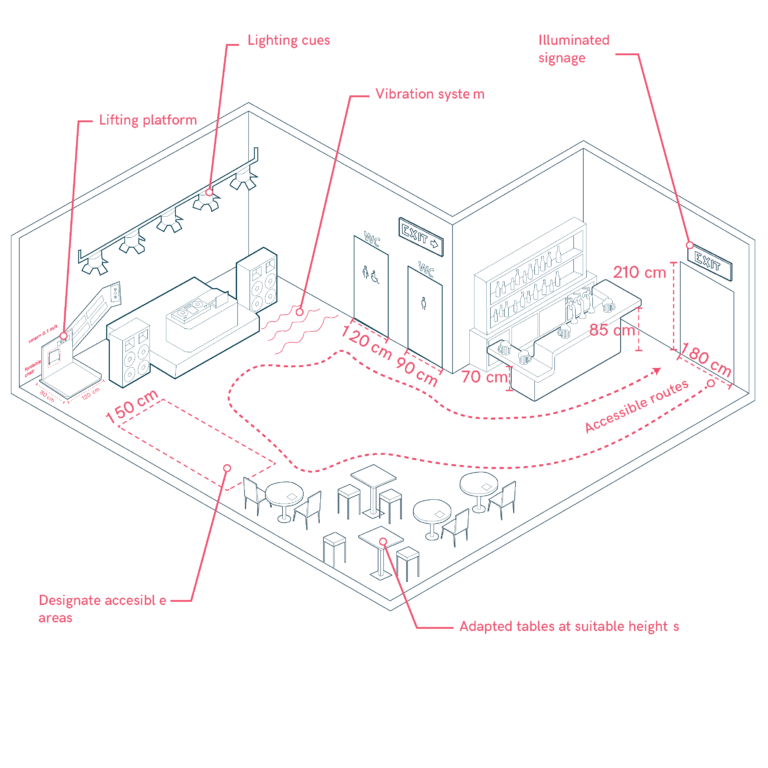
Nightclubs and Dance Venues
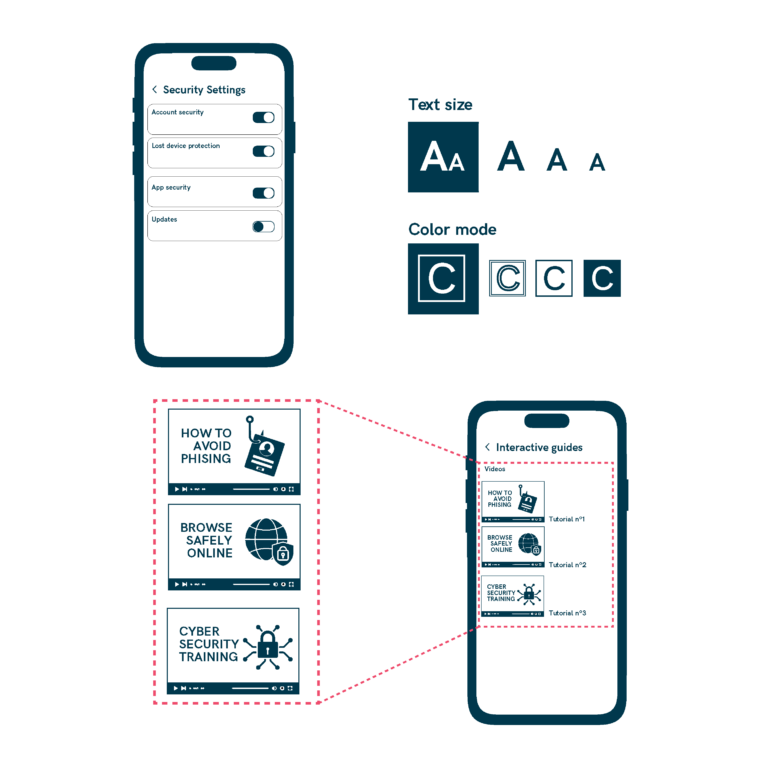
Optimize Digital Content

Outdoor Assistive Technologies

Parallel Accessible Parking
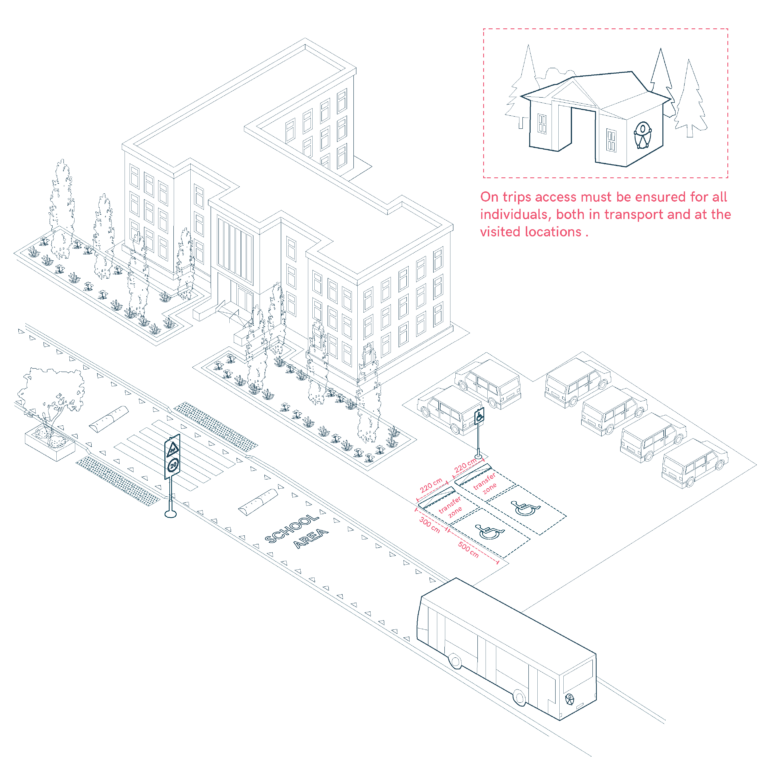
Parking and School Bus Accessibility
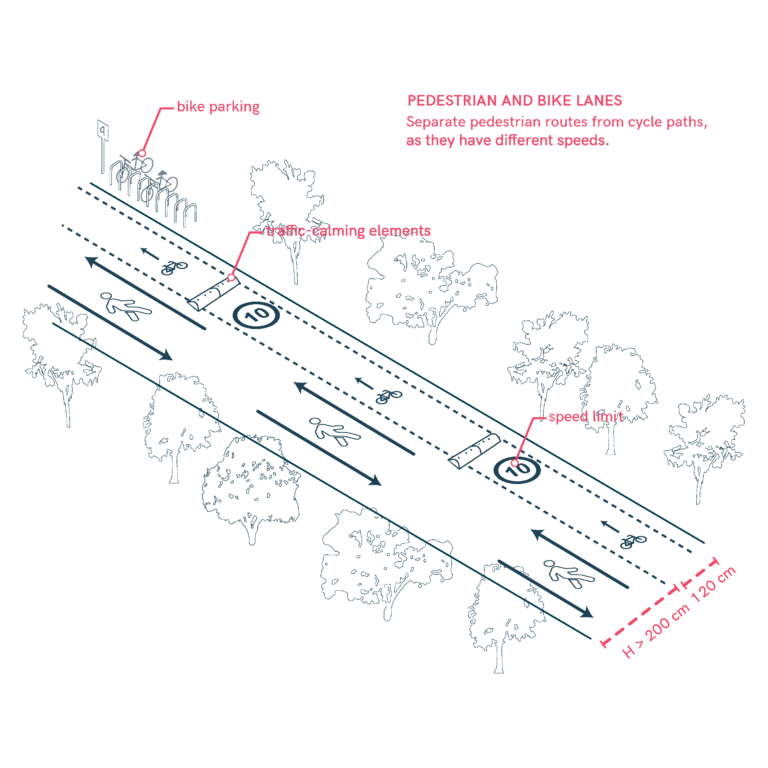
Pedestrian and Bicycle Paths
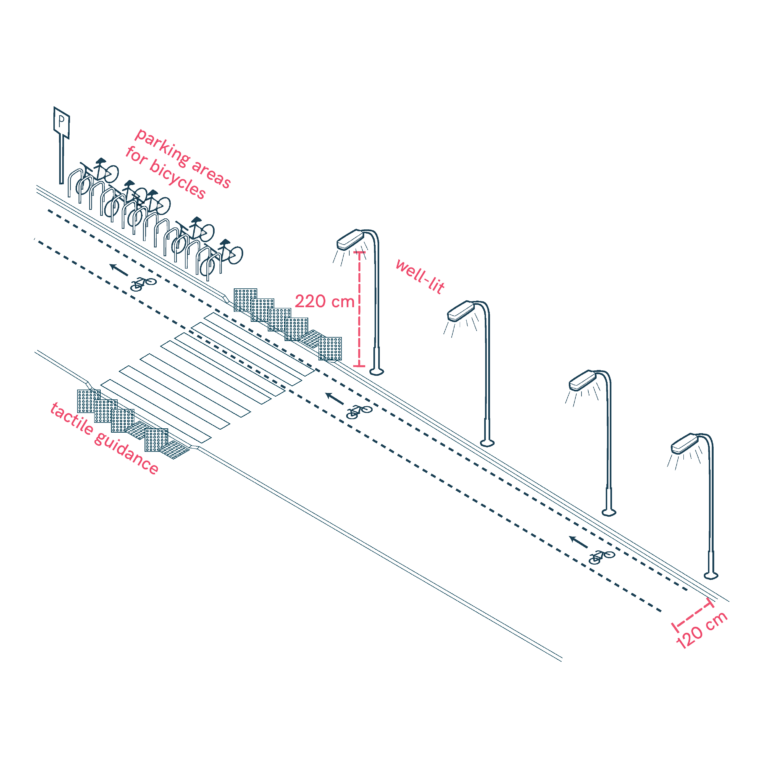
Pedestrian and Mobility-Friendly Spaces
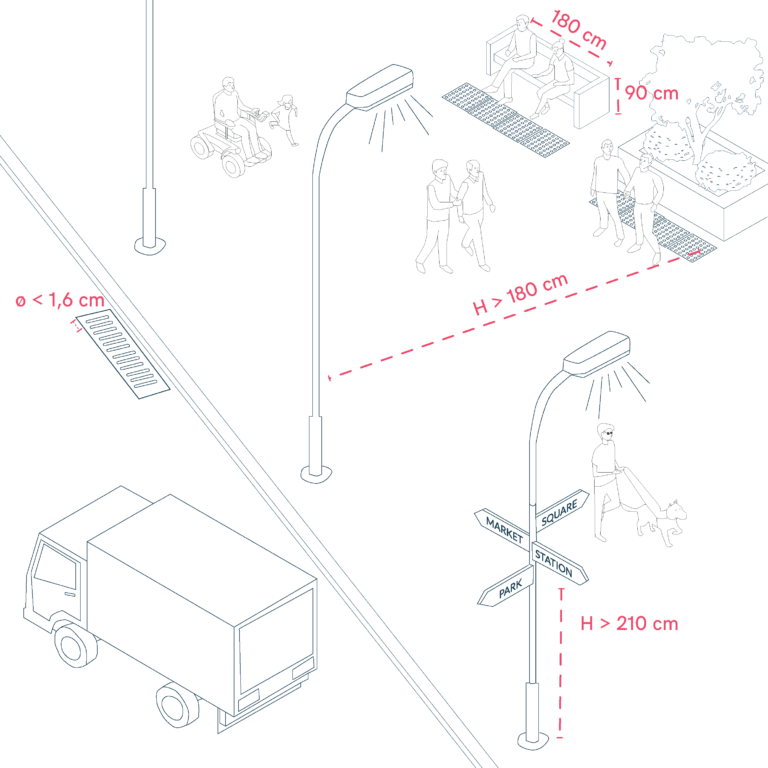
Pedestrian Routes
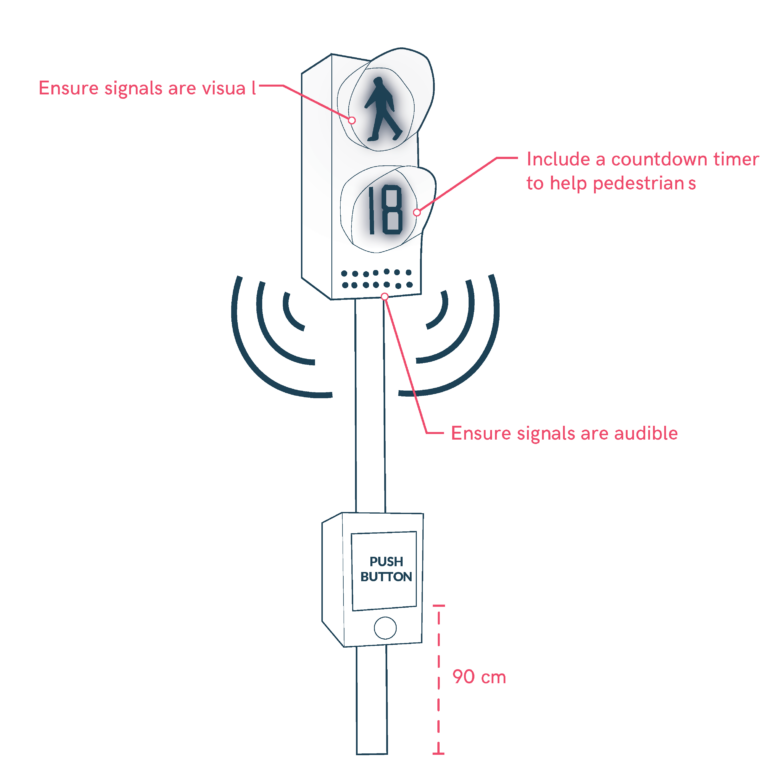
Pedestrian Traffic Signals
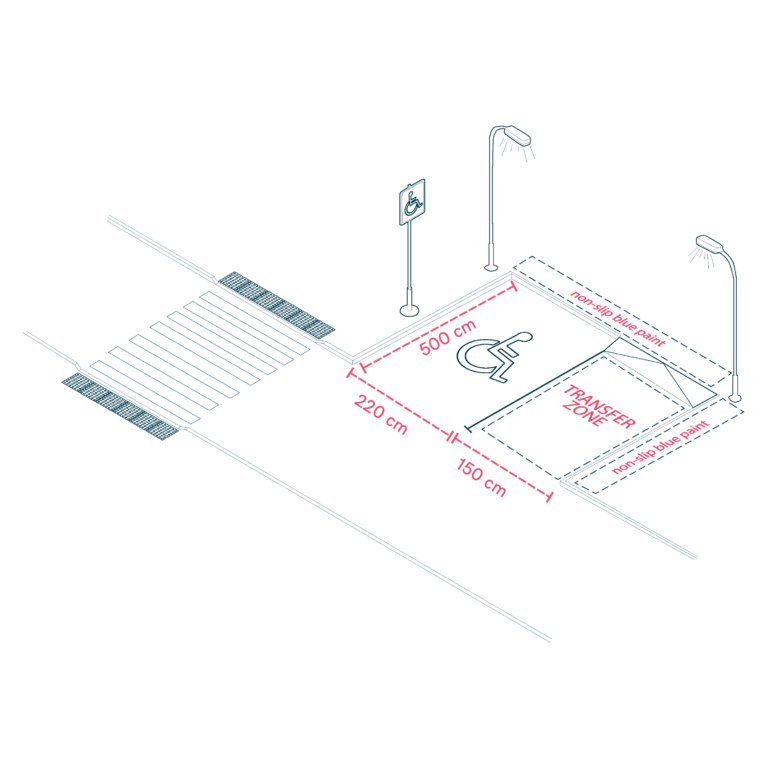
Perpendicular Accessible Parking
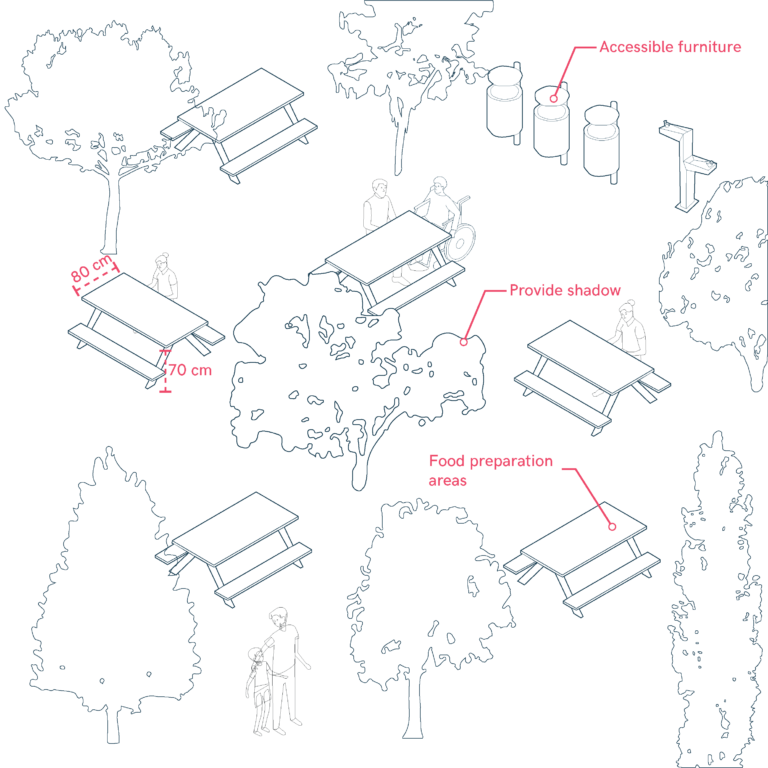
Picnic and Rest Areas
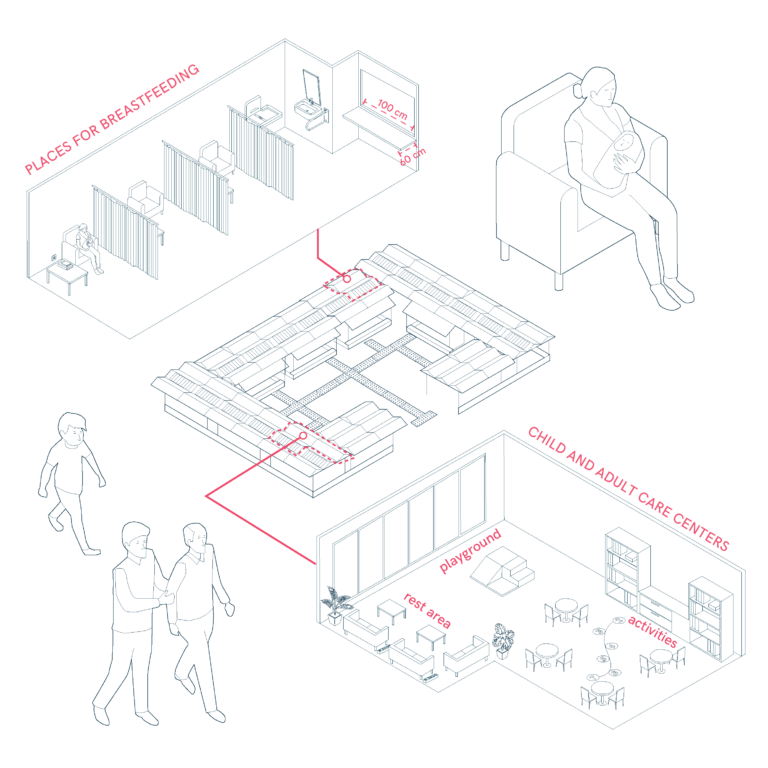
Places for people caring for users
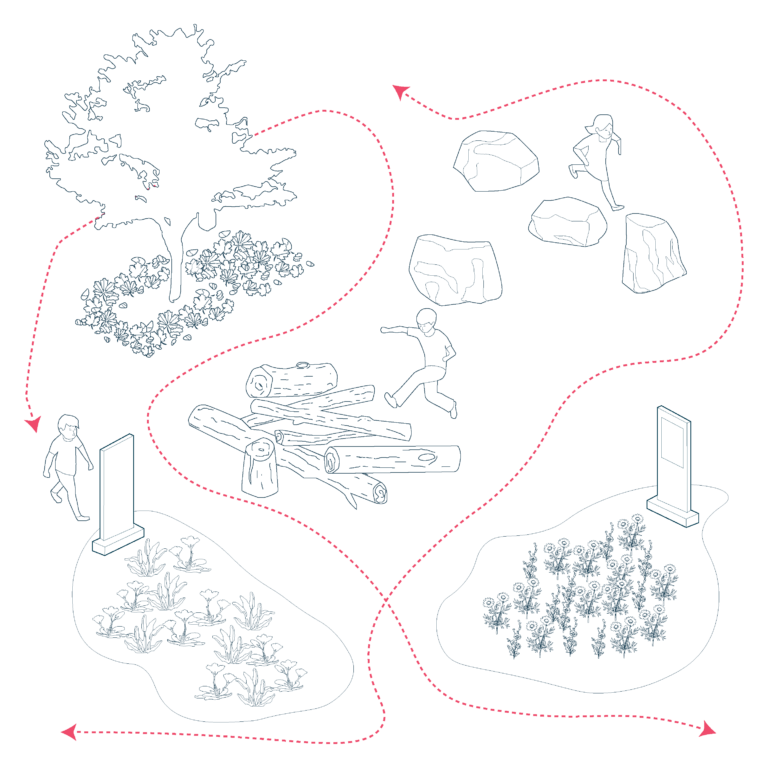
Promote Biophilic and Sustainable Design
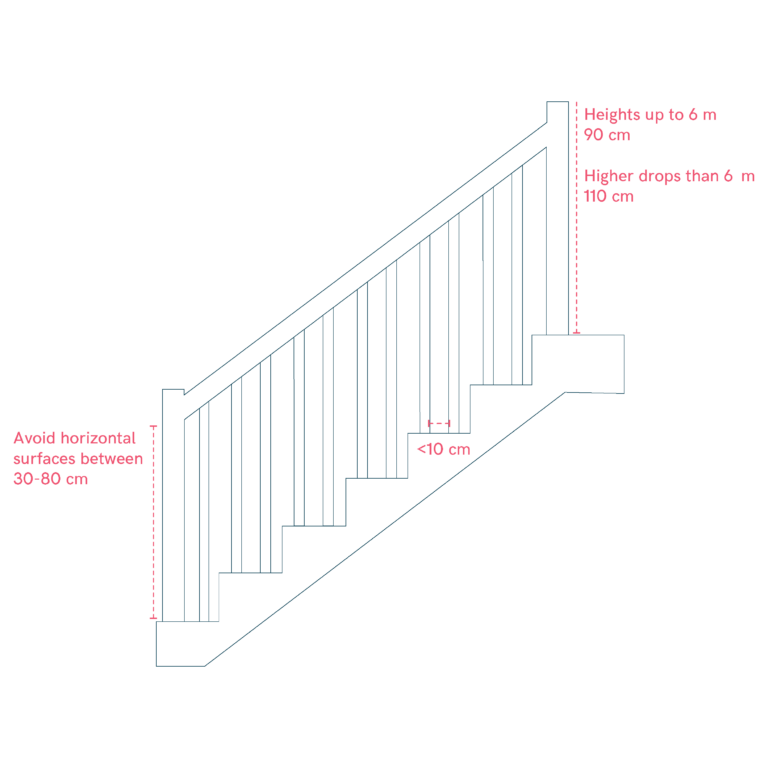
Protection Barriers
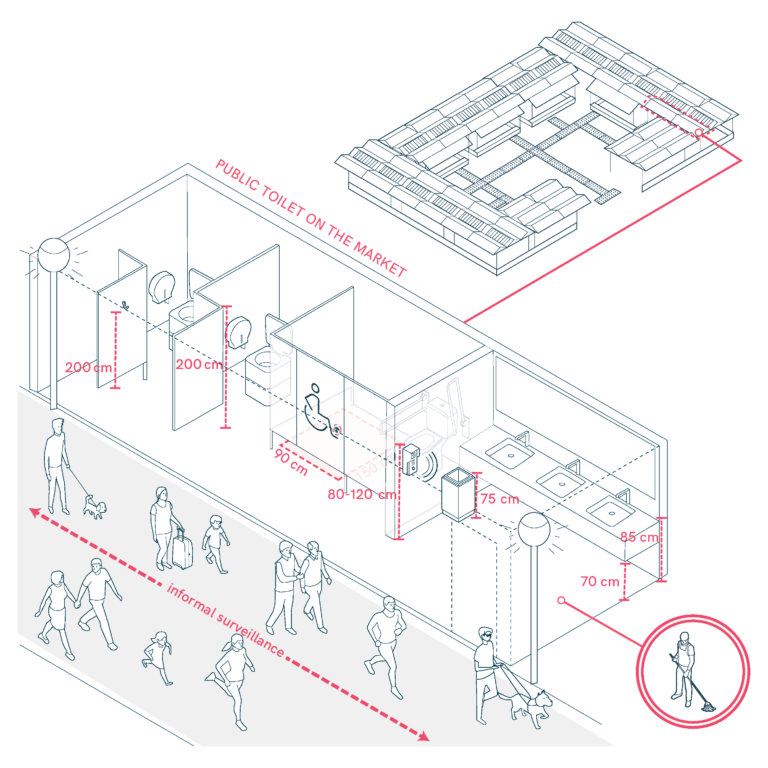
Put public toilets on the market
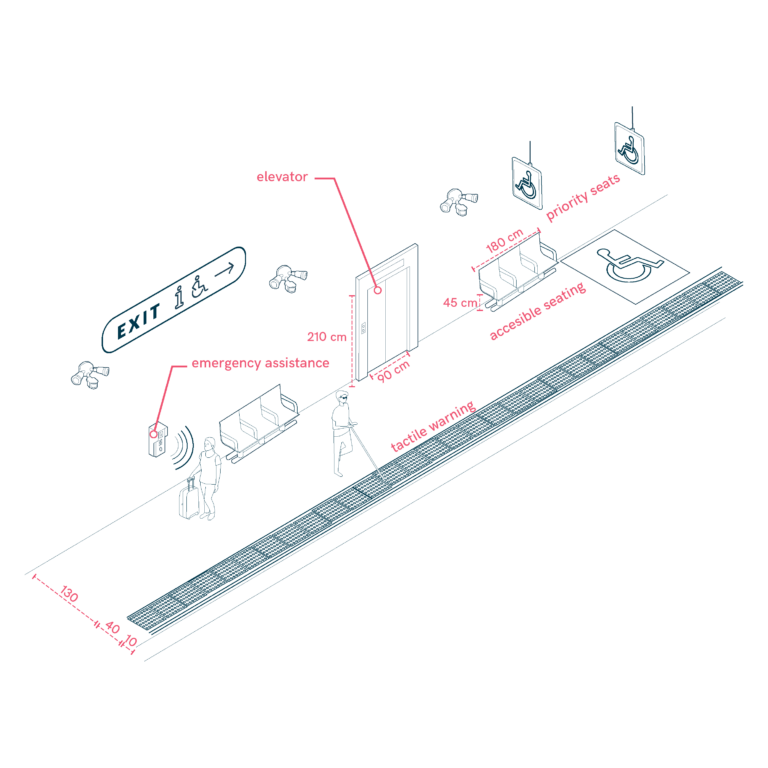
Railway and Metro Infrastructure
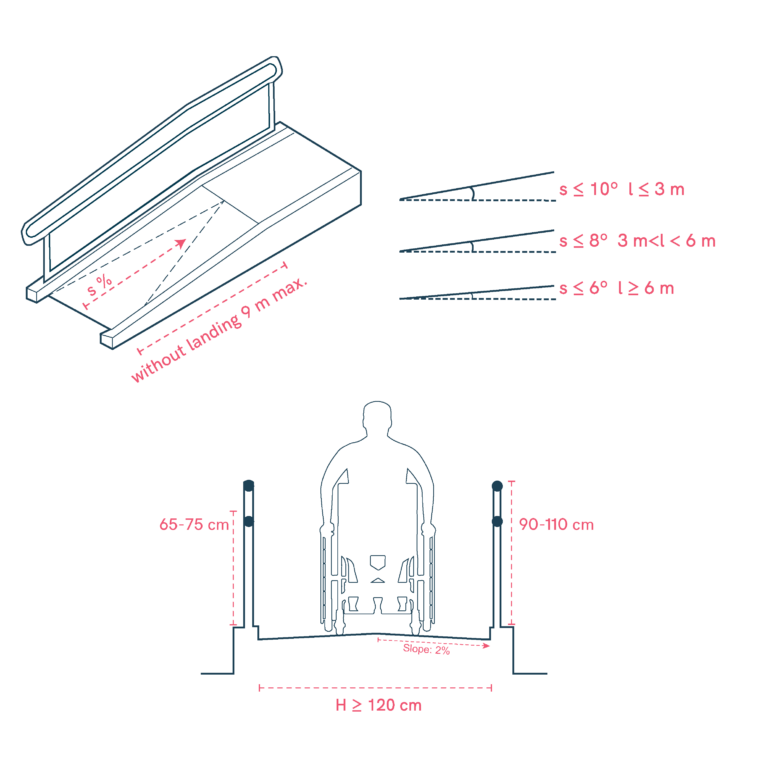
Ramp Requirements
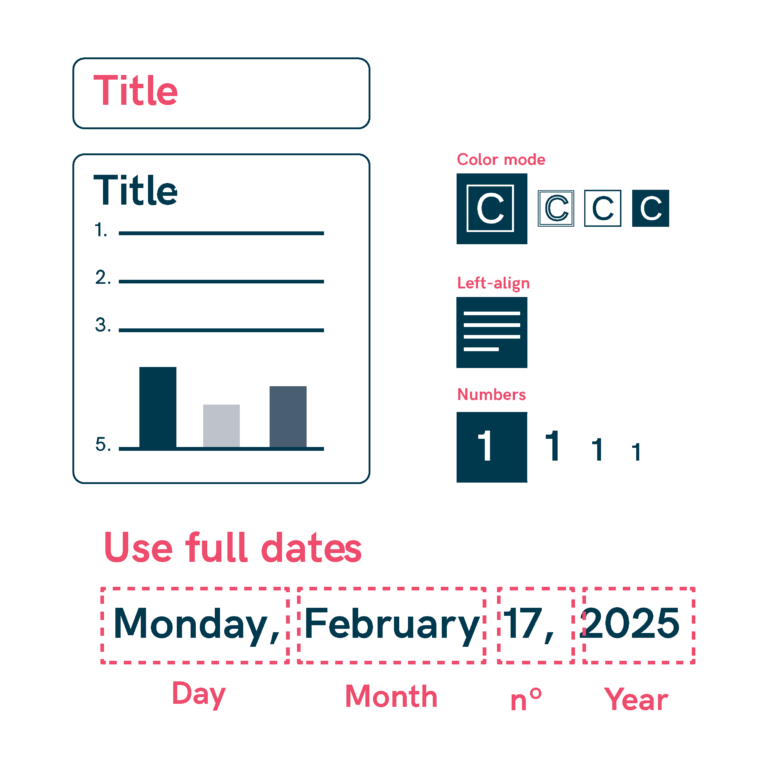
Readable Text
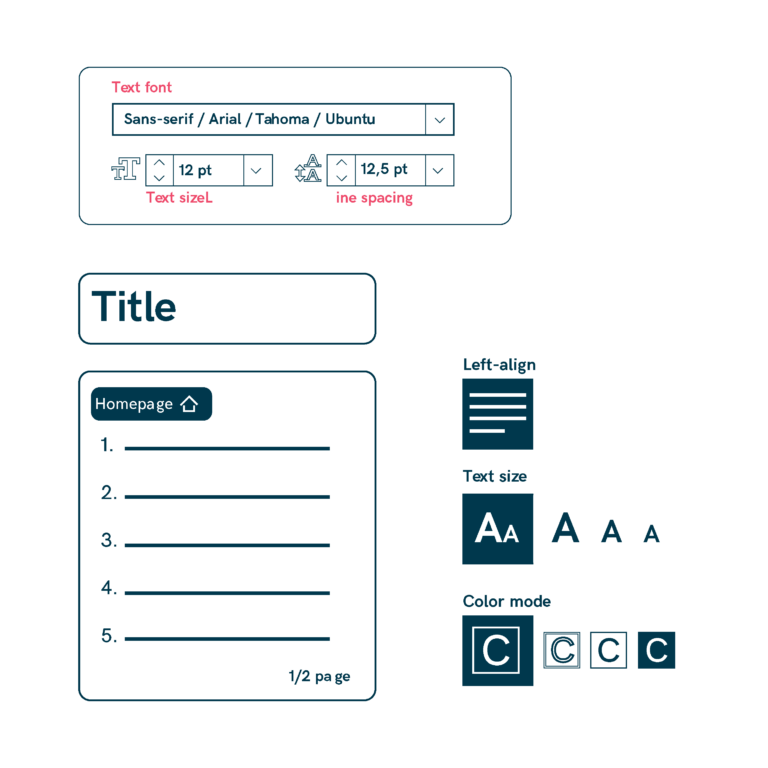
Readable Text
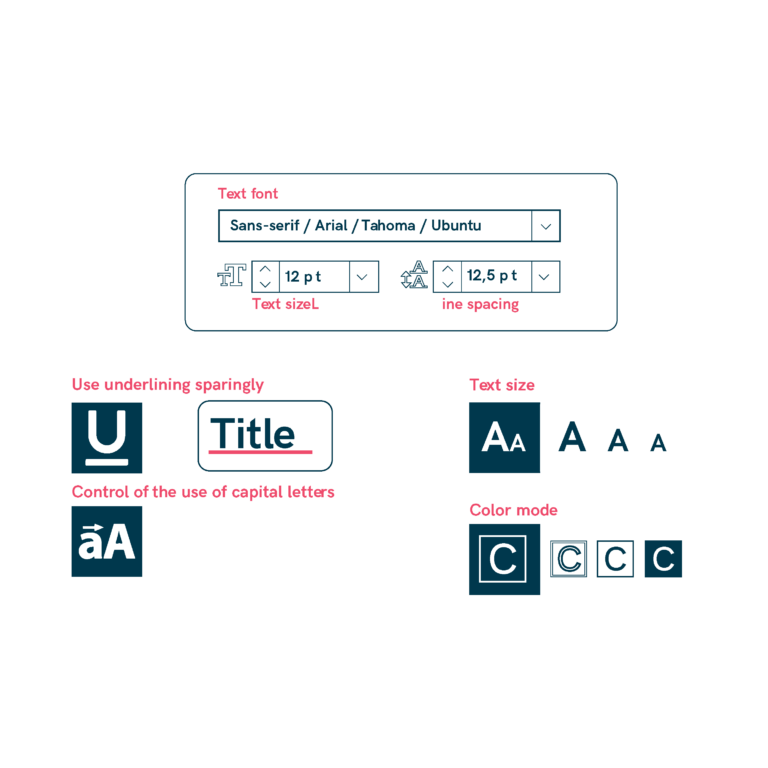
Readable Typography

Recognizable Symbols
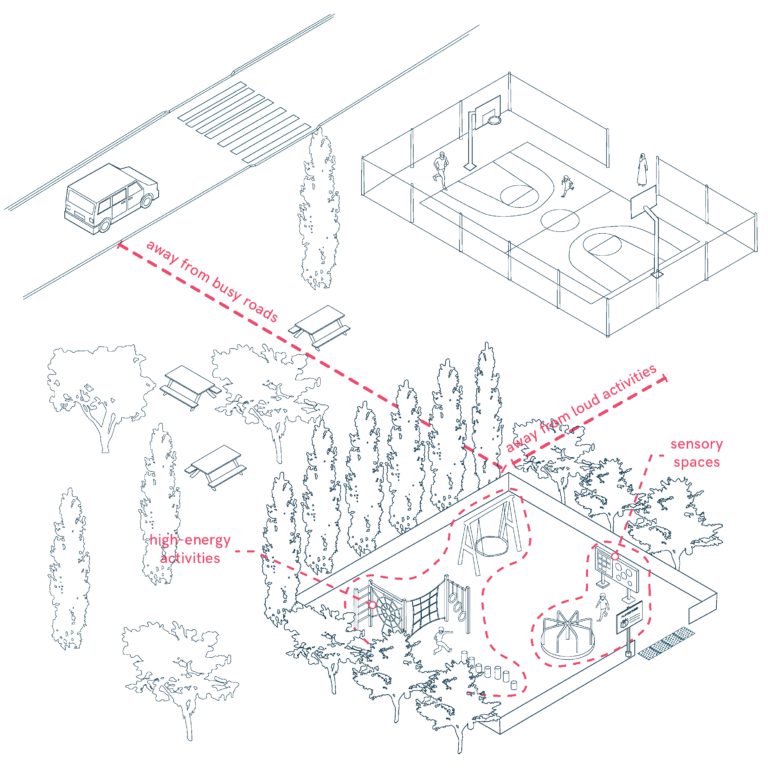
Reduce Stimuli in Overwhelming Environments
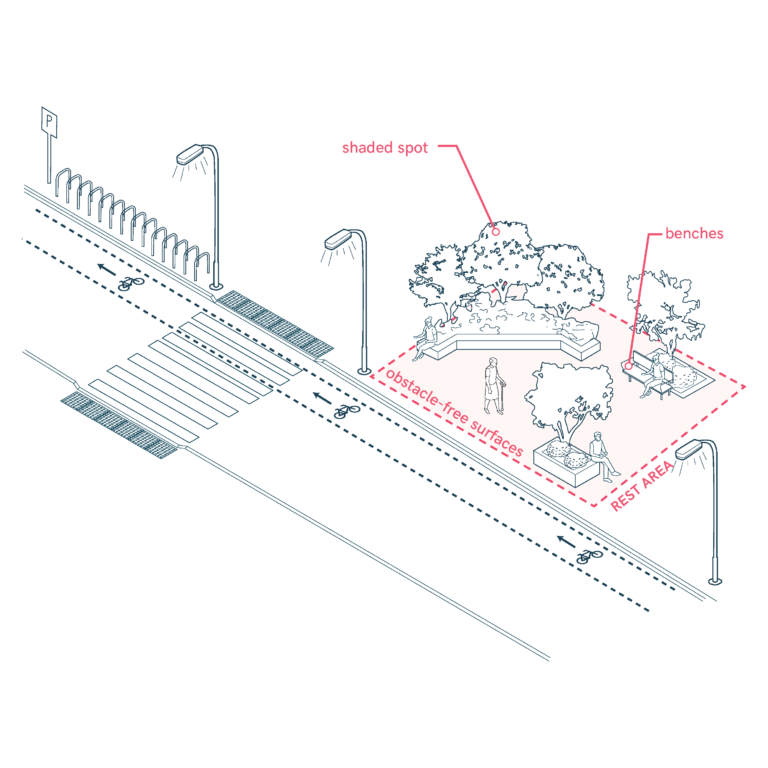
Rest Areas and Support Facilities
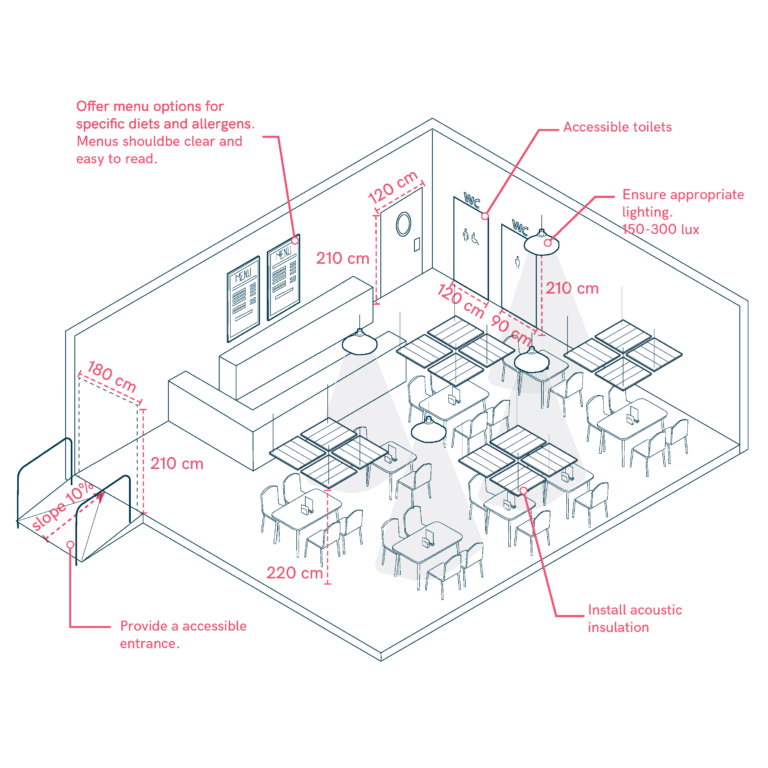
Restaurants, Cafés, and Bars

Restrooms in Mobility Hubs
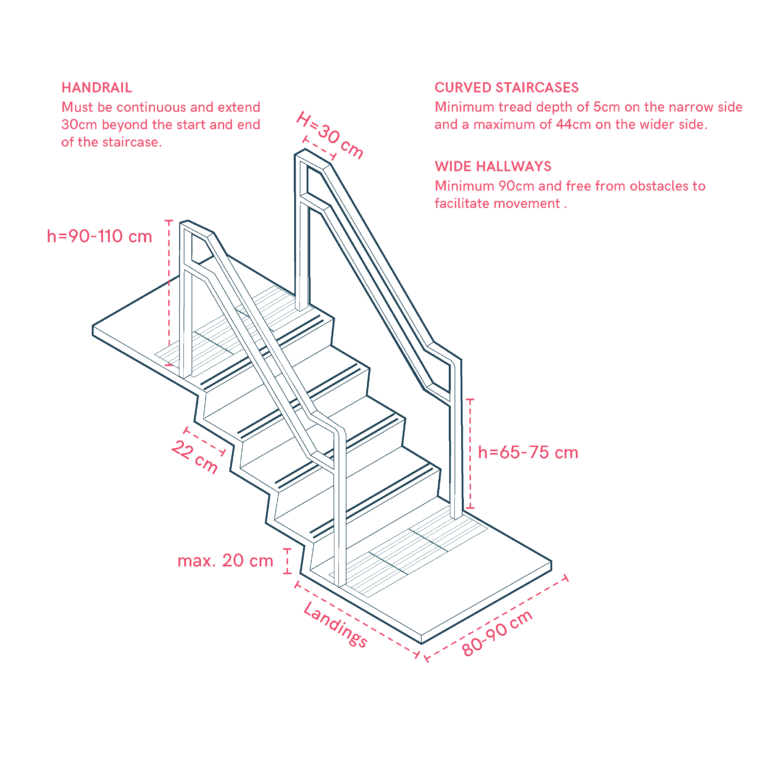
Safe and Accessible Stairs and Hallways
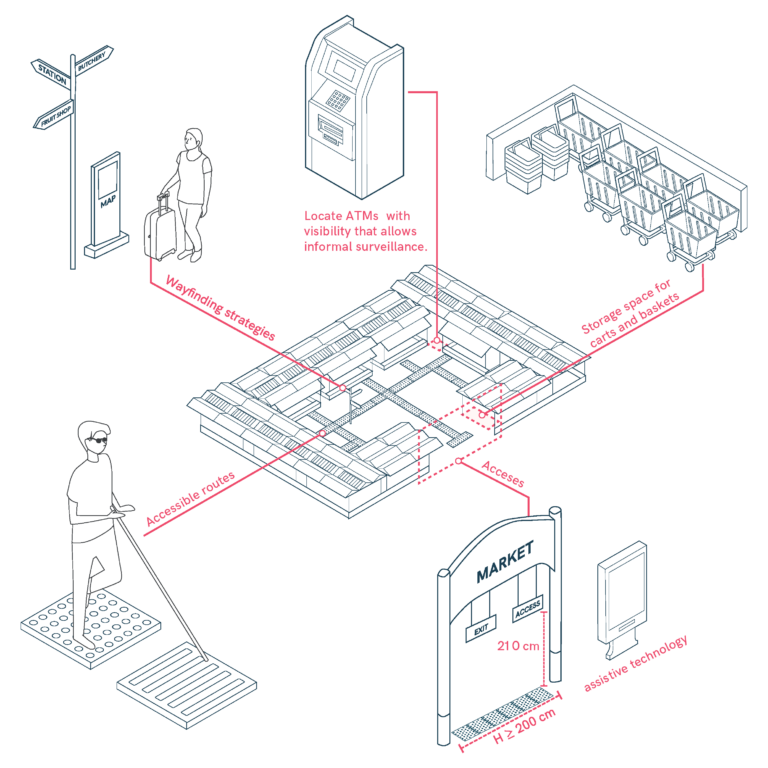
Safe and Easy Circulation
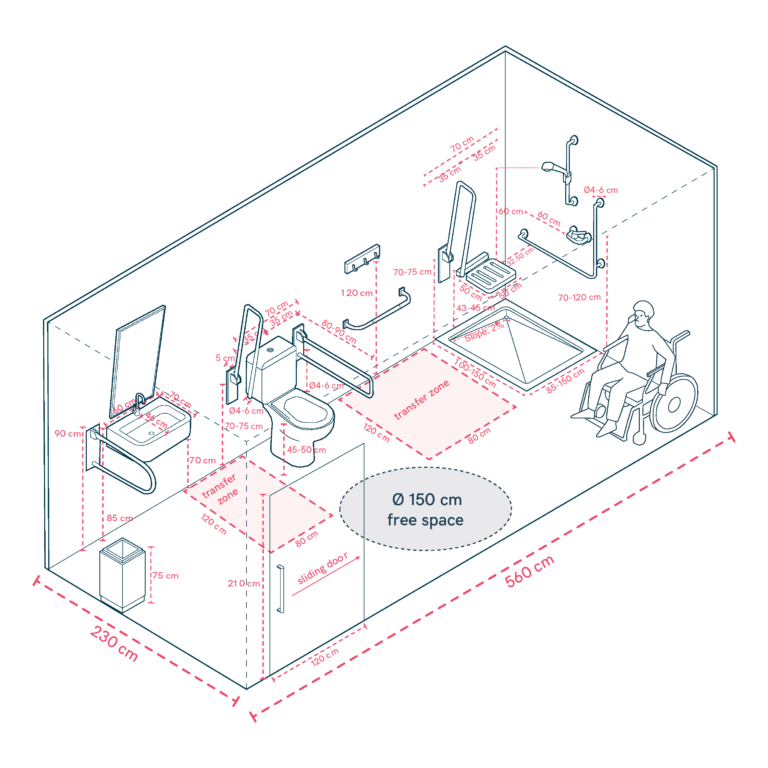
Safe and Functional Bathrooms
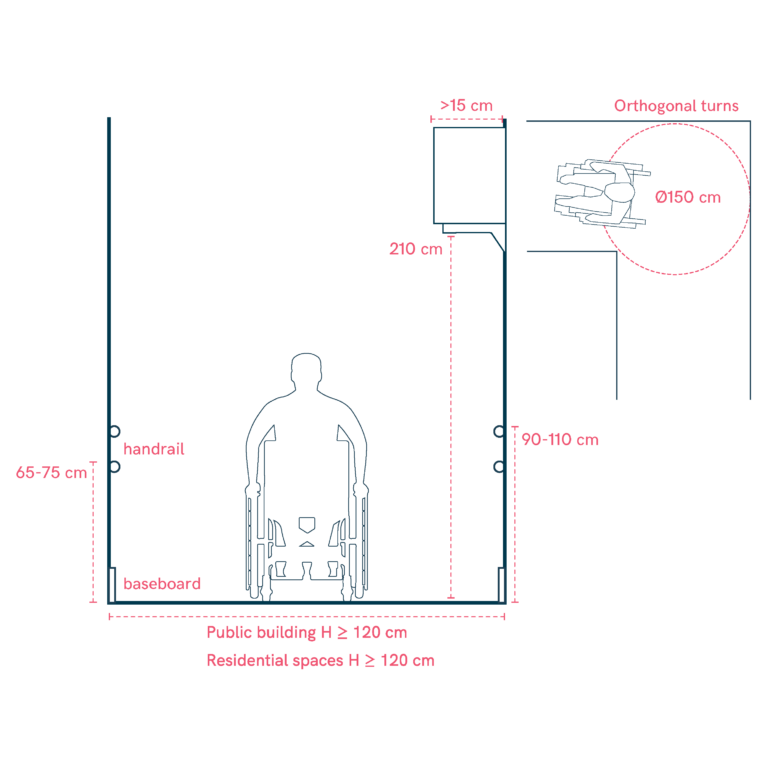
Safe and Intuitive Corridors
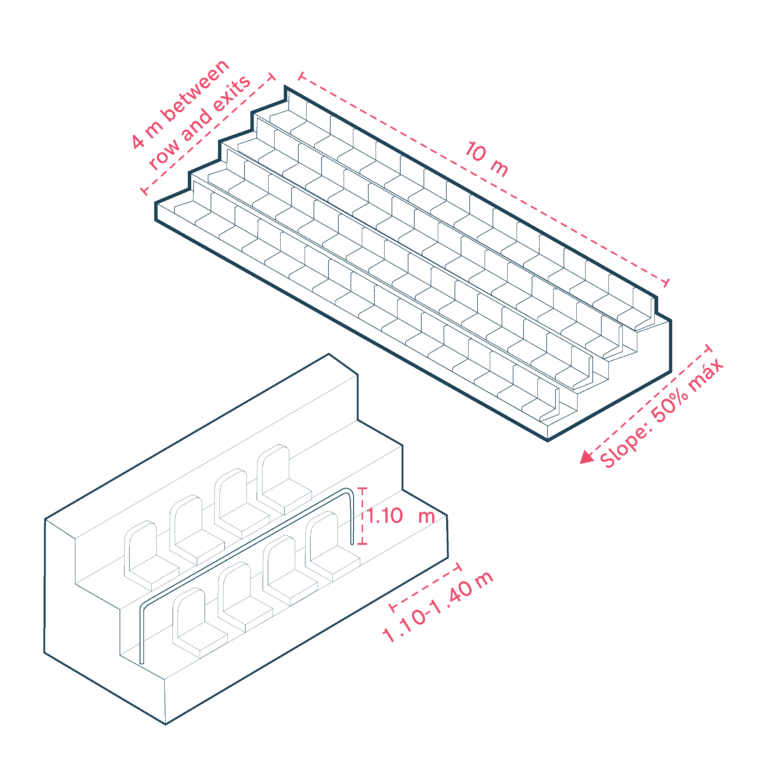
Safe grandstands
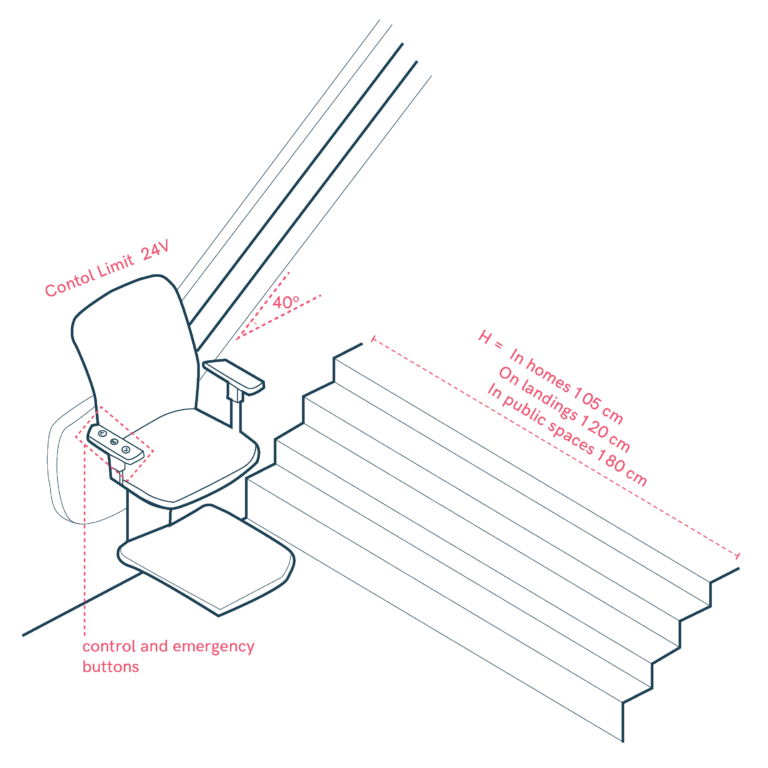
Safe Stair Mobility
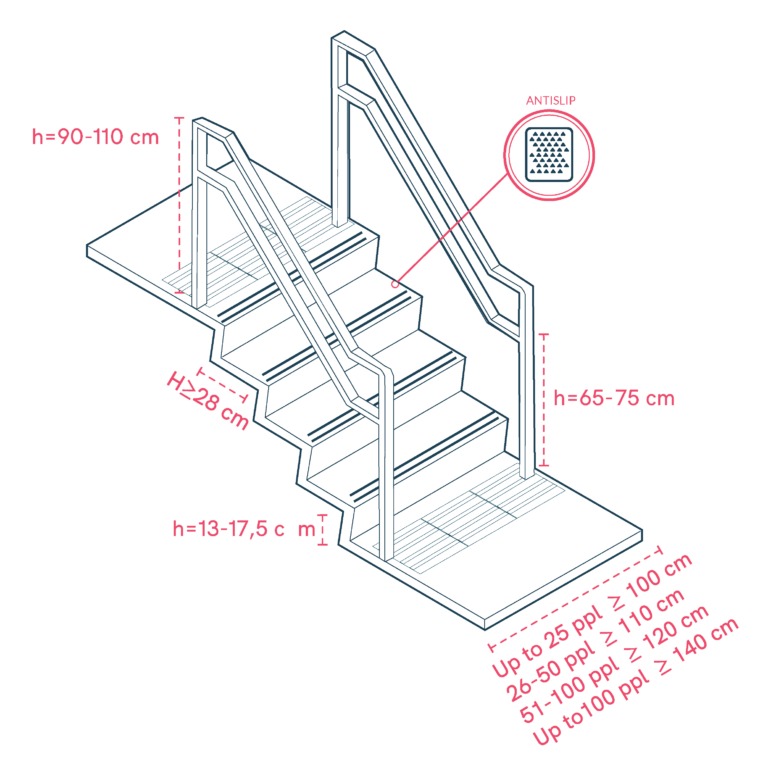
Safety on stairs
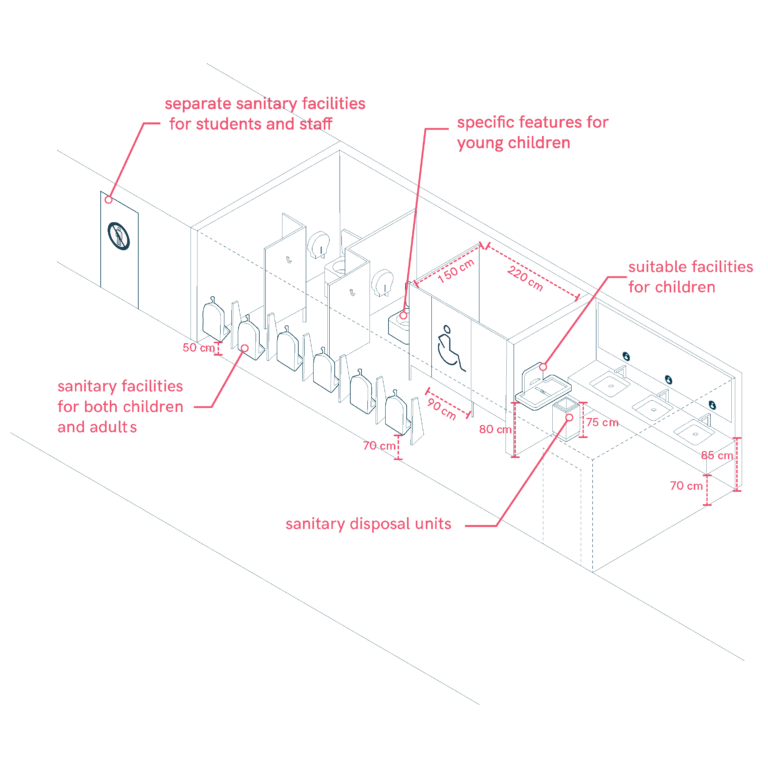
Sanitary Facilities and Restrooms
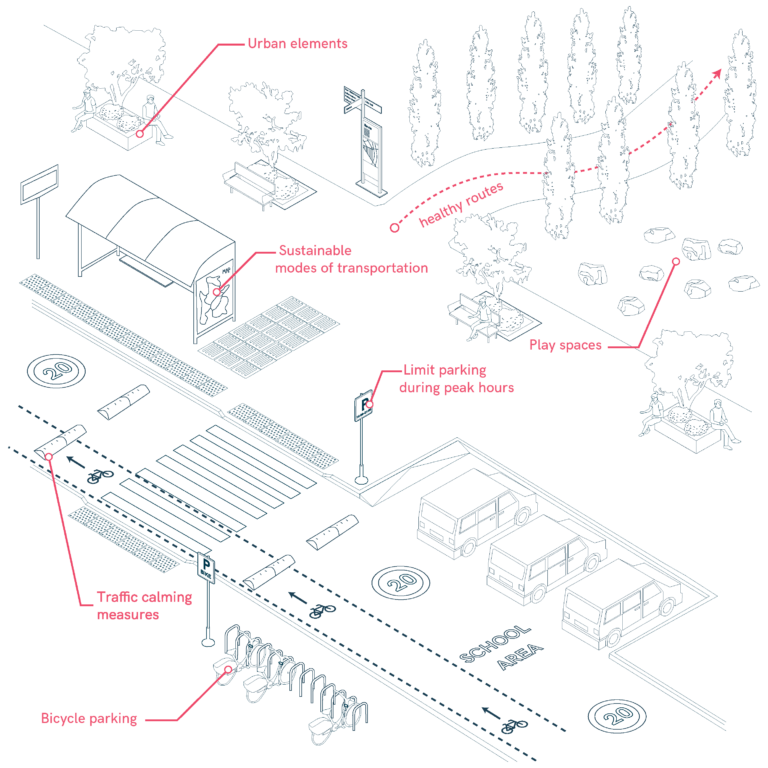
School Pathways
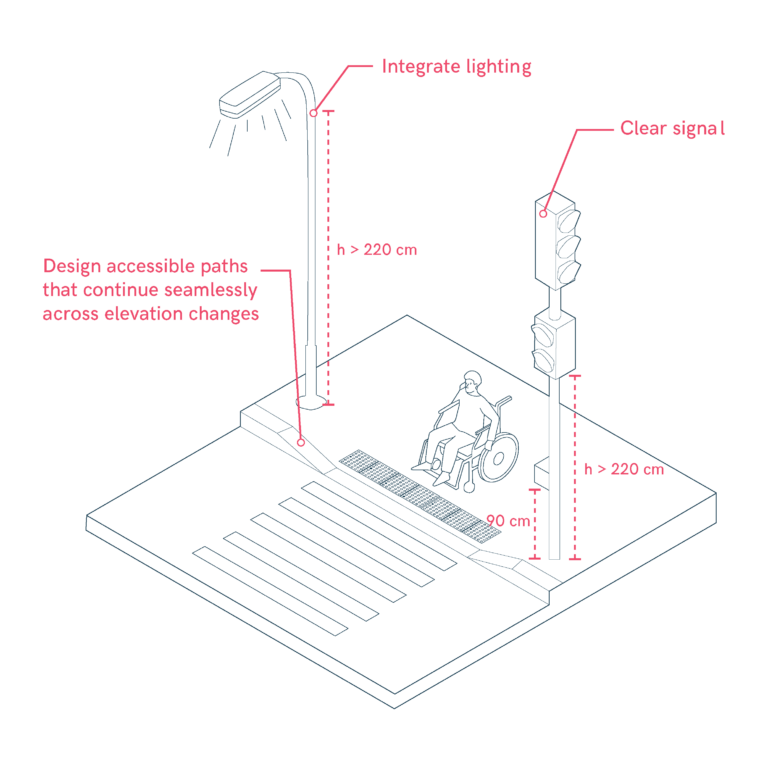
Seamless Continuity
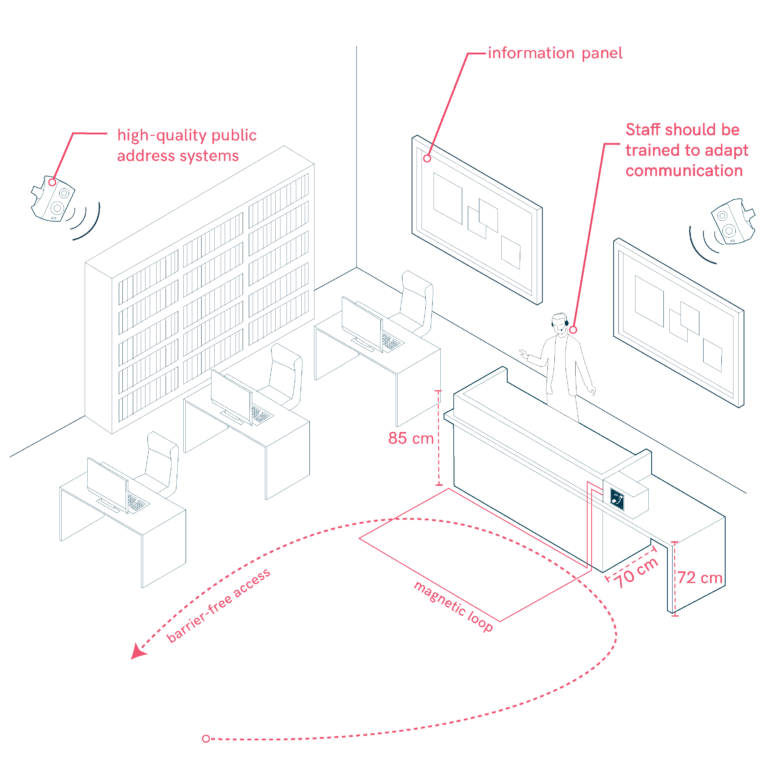
Secretary’s Office Accessibility
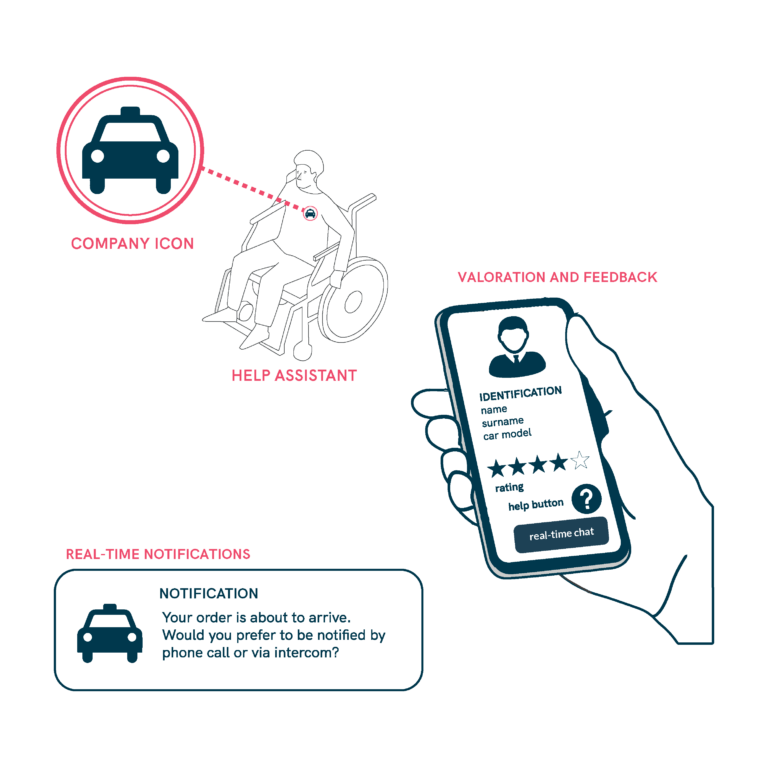
Security Perception
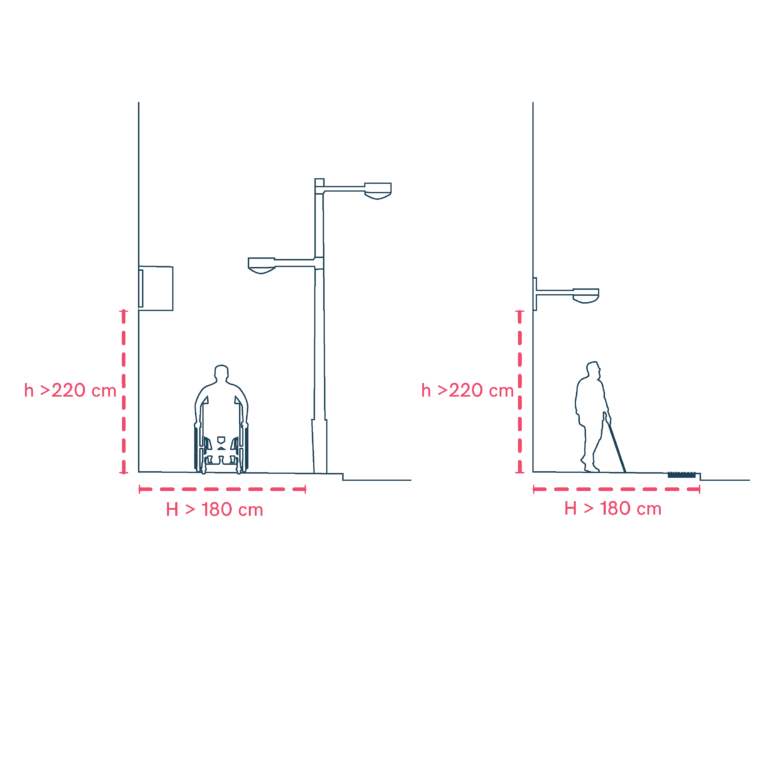
Signage and Lighting Elements
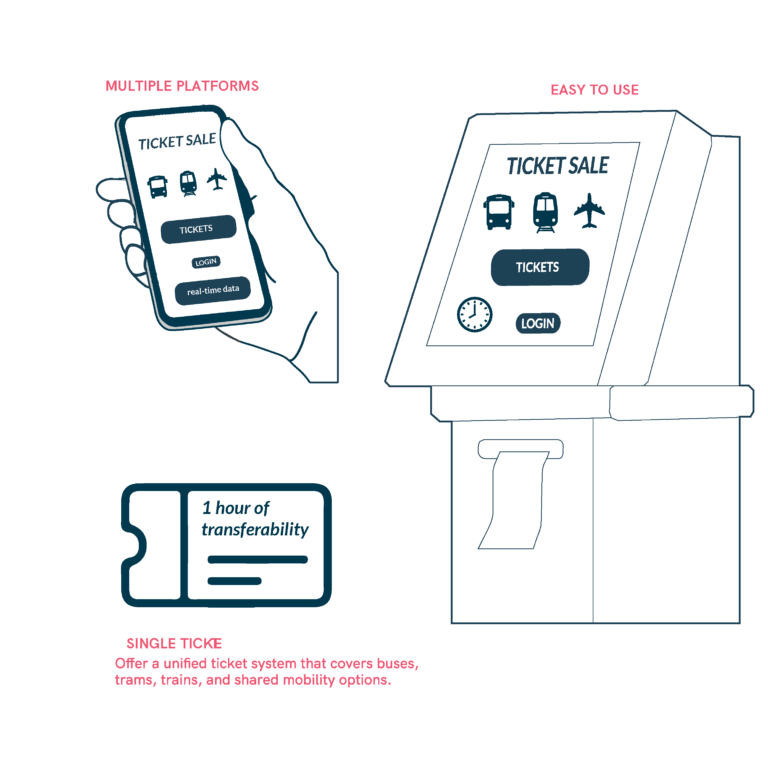
Single Ticket for Multimodal Public Transport
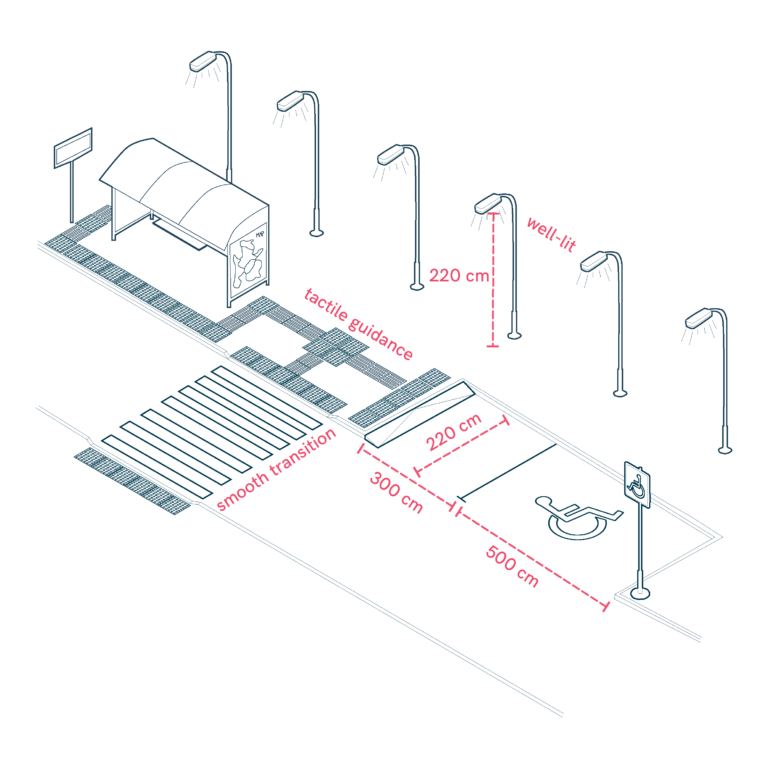
Smooth Transit Connections

Social and Community Housing
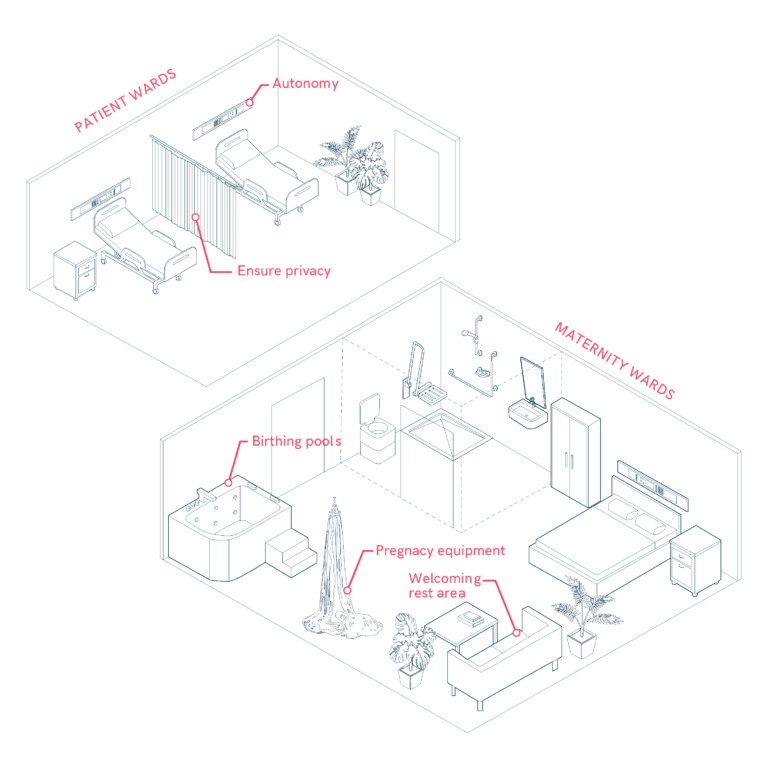
Specialist Areas and Medical Equipment
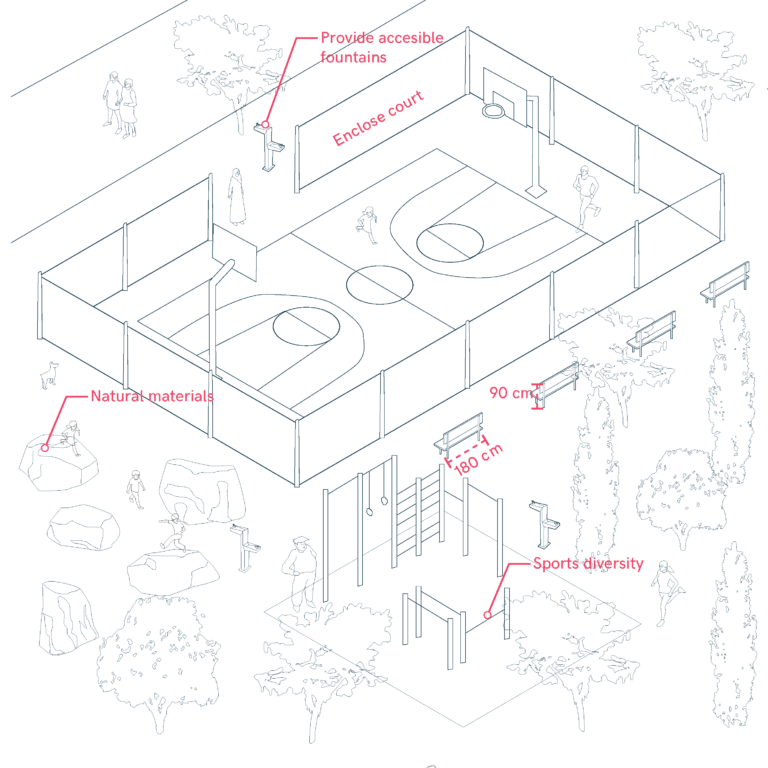
Sporting and Recreational Facilities
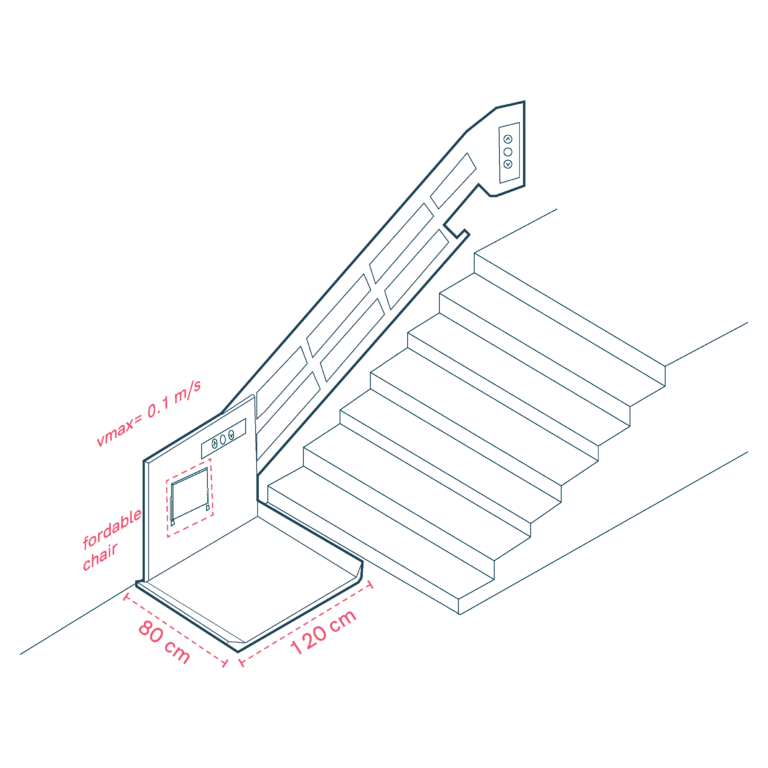
Stair Lift Platform

Stair Lift Platform
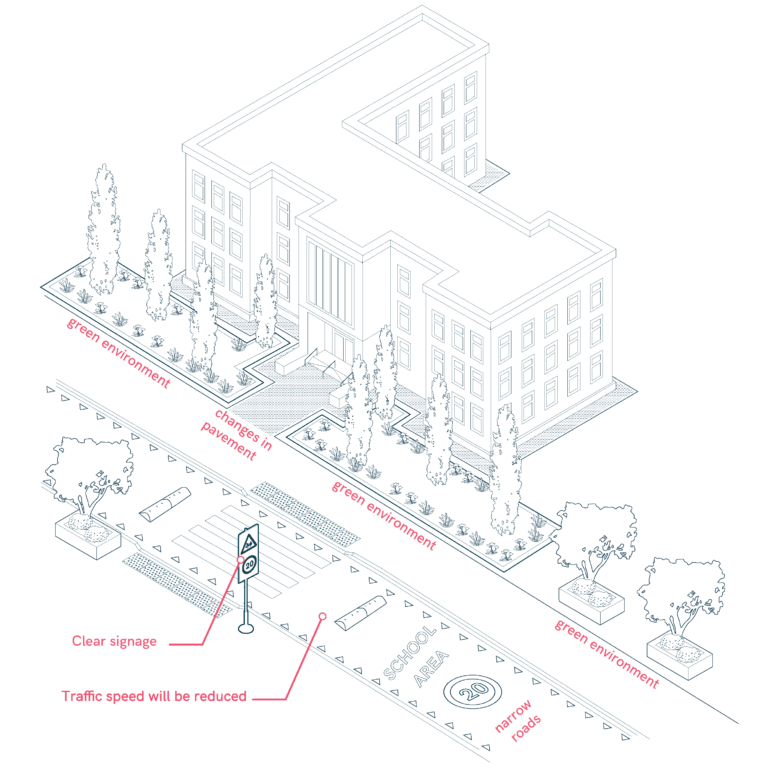
Sustainable and Resilient School Streets
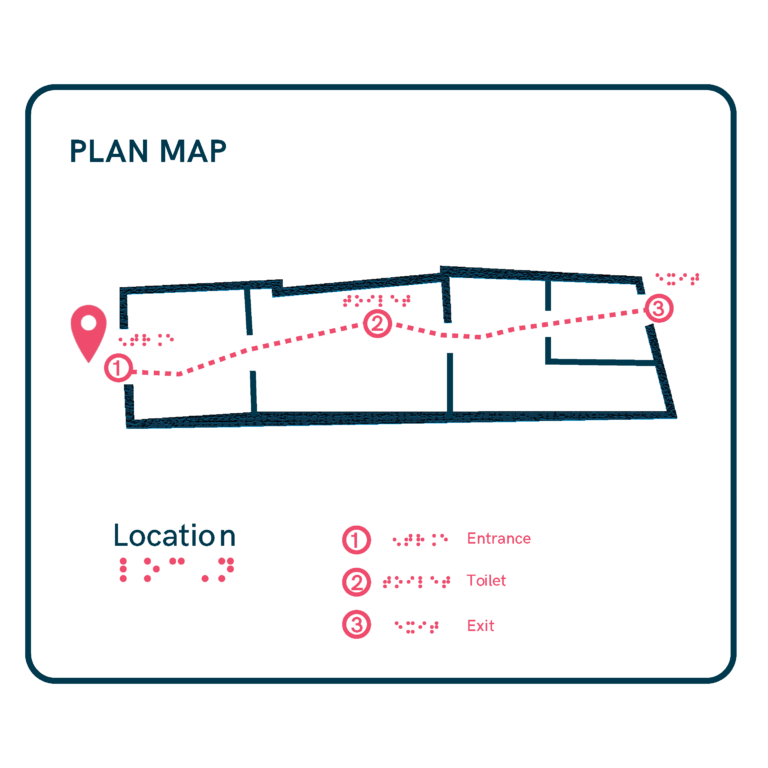
Tactile Design
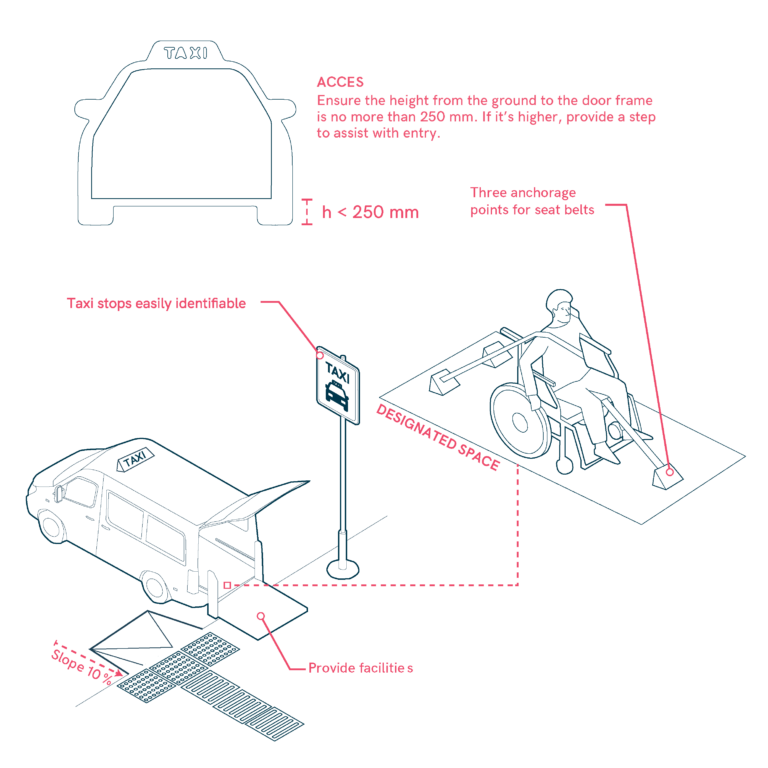
Taxi Accessibility

Theatre and Cinema
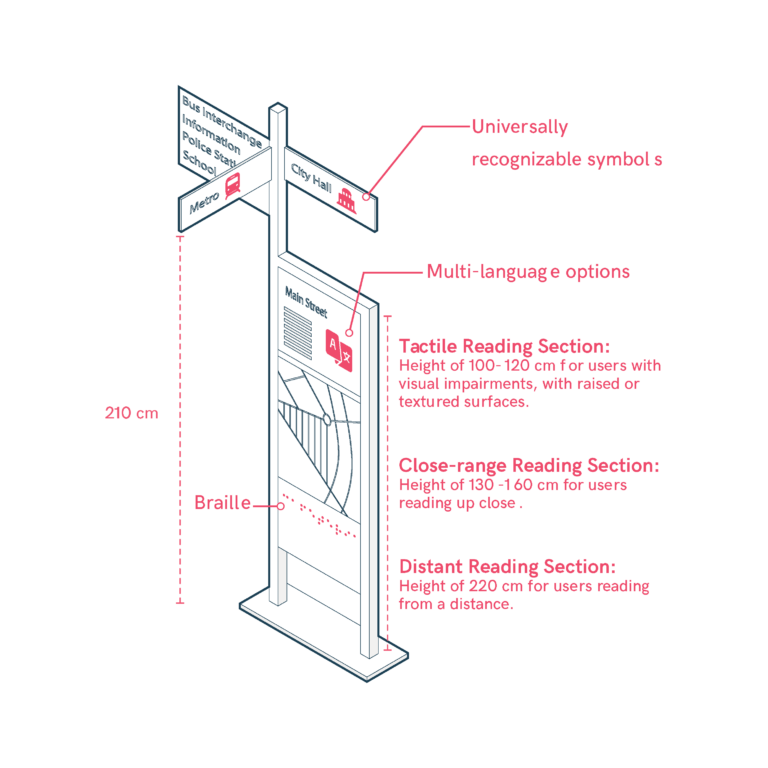
Totems in Wayfinding Systems
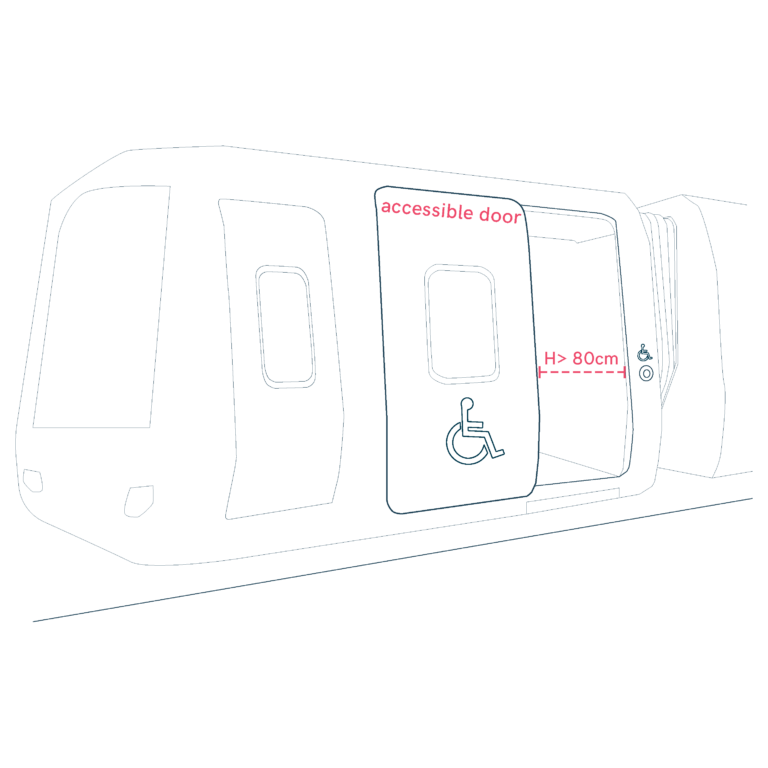
Train Access
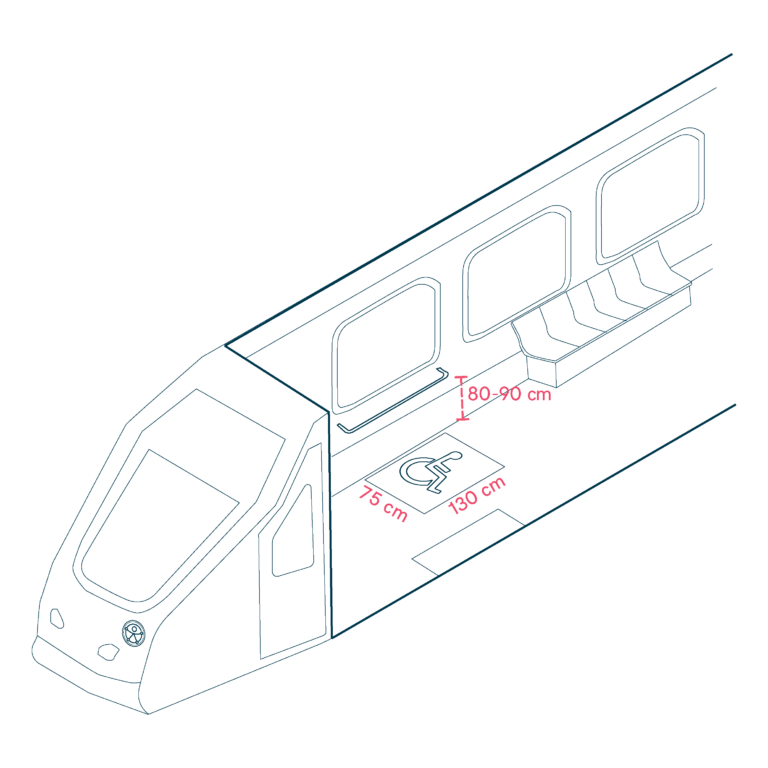
Train Interior Accessibility
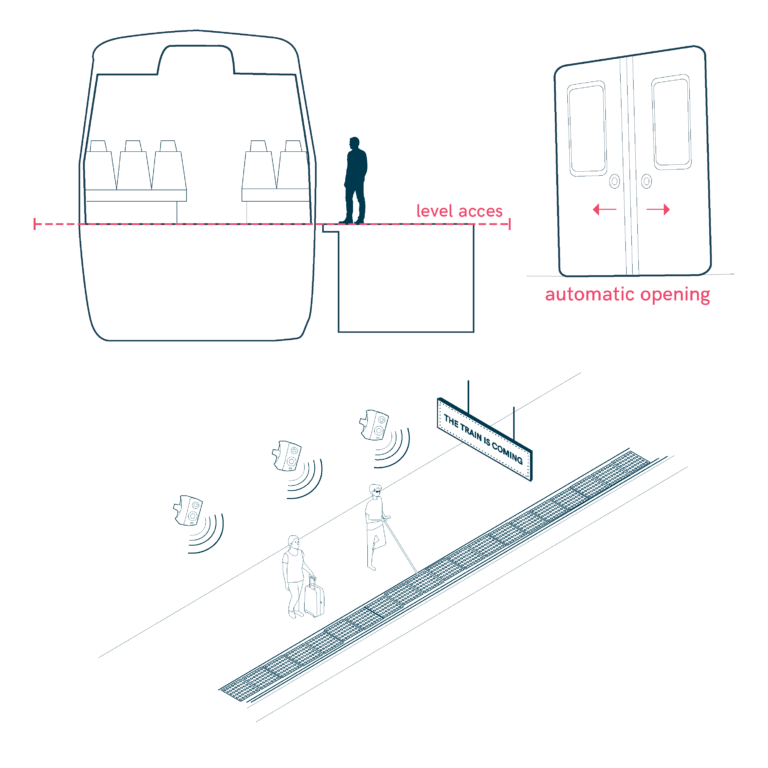
Trams Meeting the Roadway
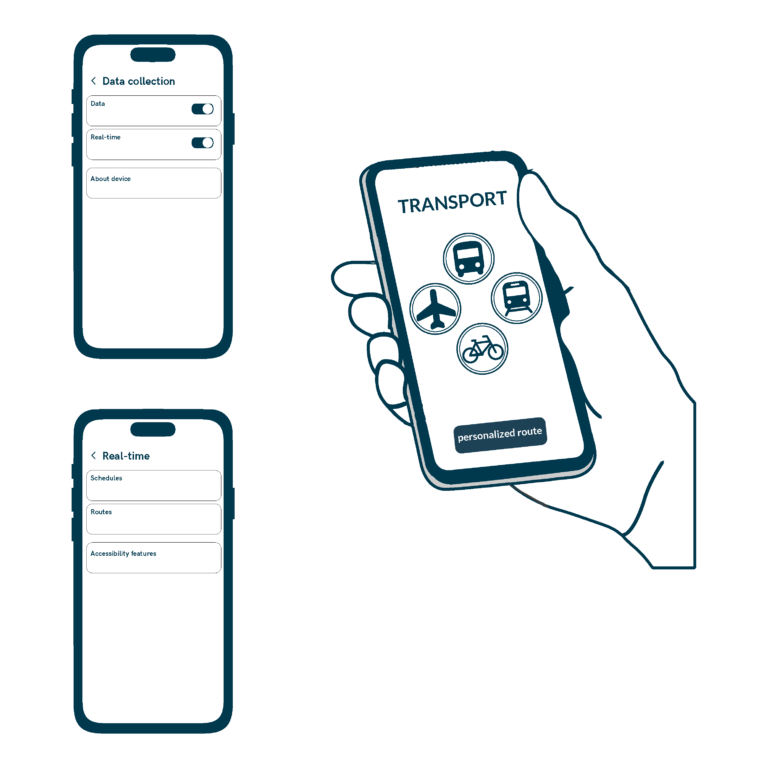
Transport Data Collection
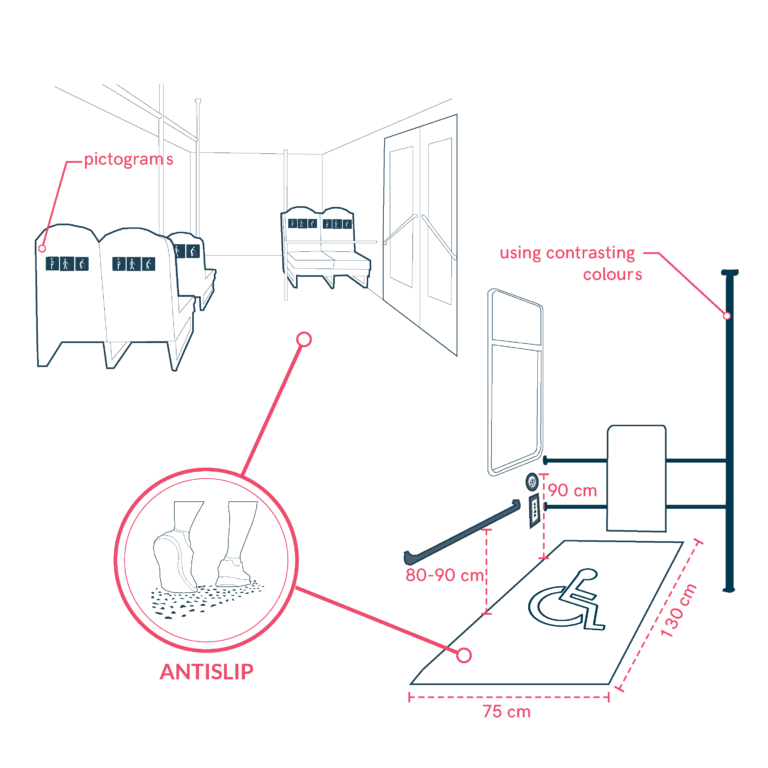
Travelling by Bus
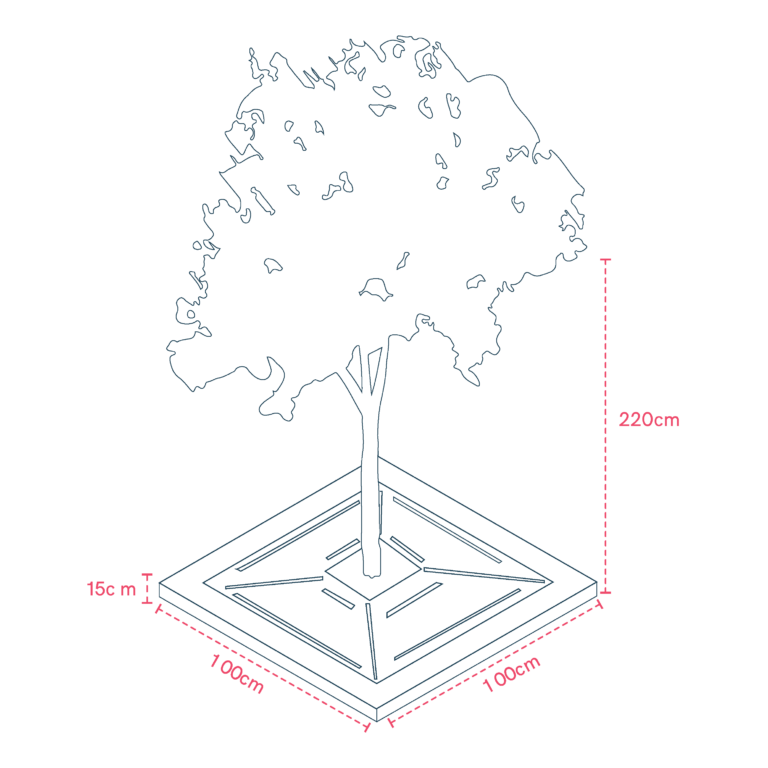
Tree Pit Safety and Accessibility

Urban Furniture and Amenities
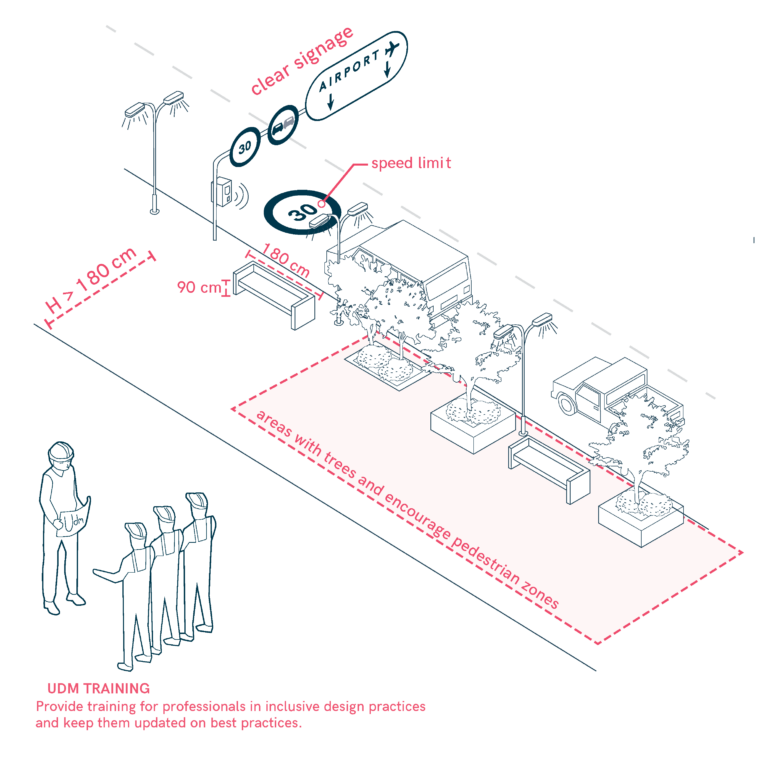
Urban Mobility and Roadway Design
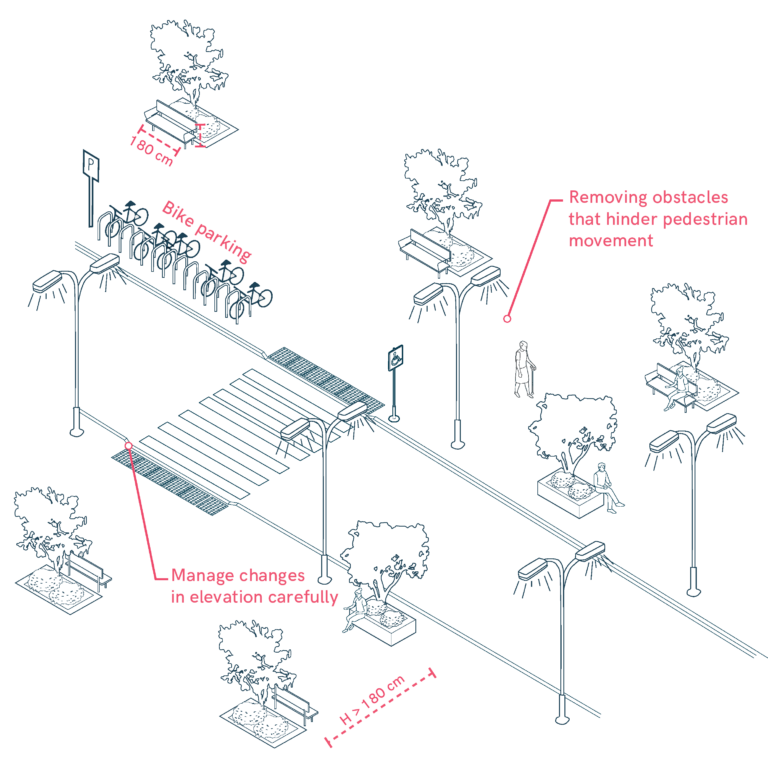
Vehicular Ramps and Pedestrian Pathways
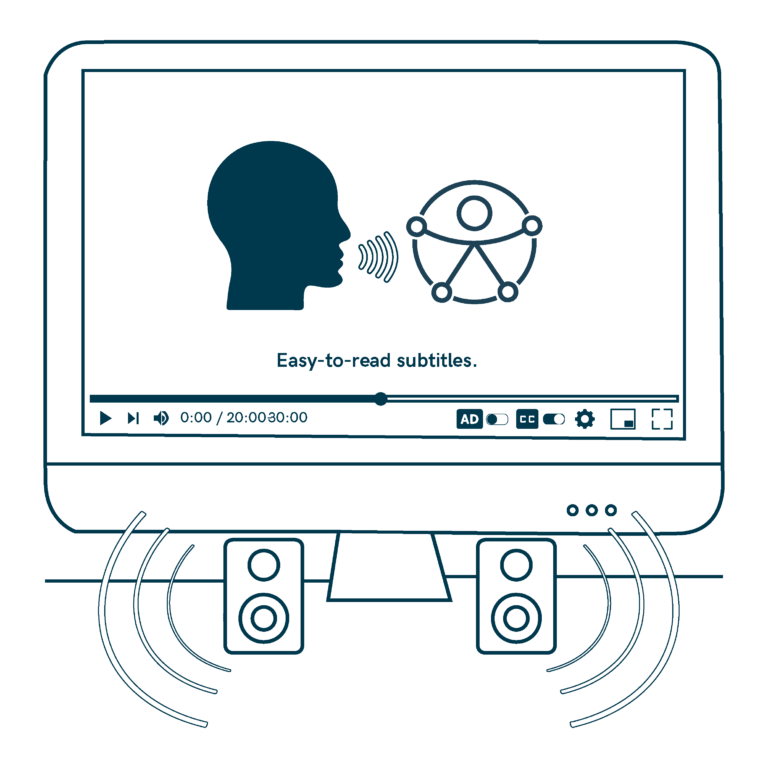
Video Information
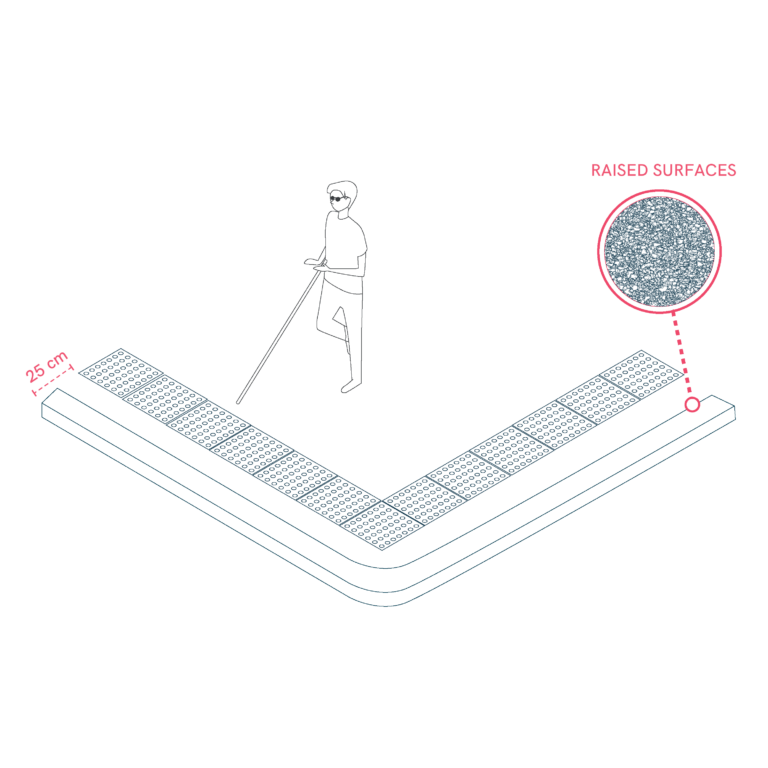
Visual and Tactile Differentiation
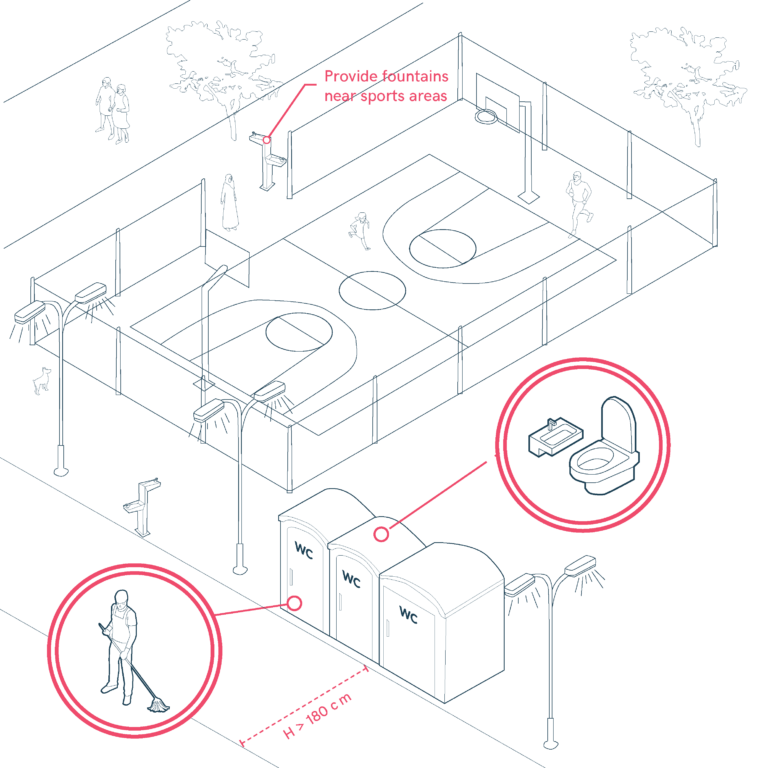
Water and Hygiene Facilities

Wayfinding and Safety Features
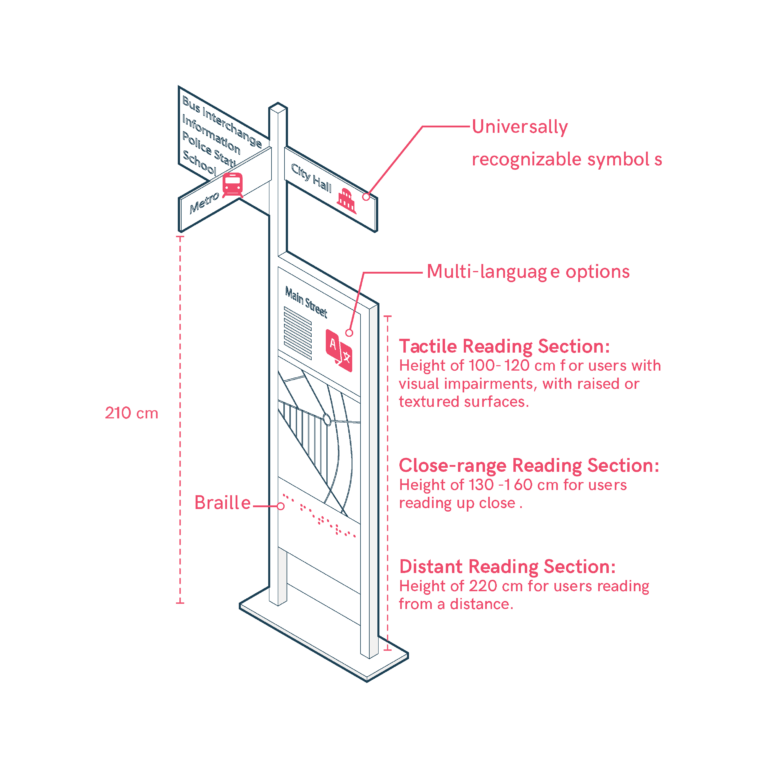
Wayfinding Strategies
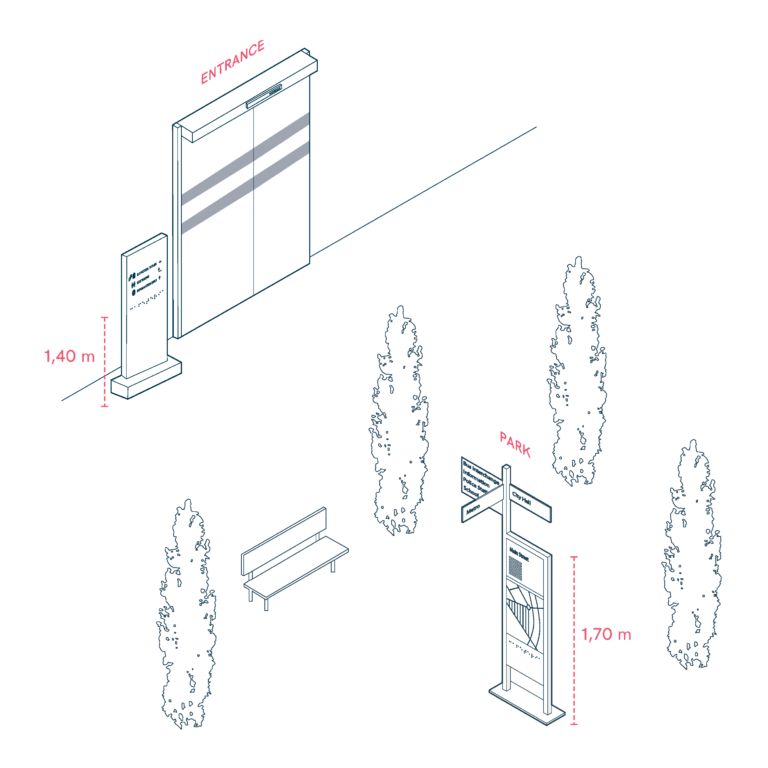
Well-Placed Signs
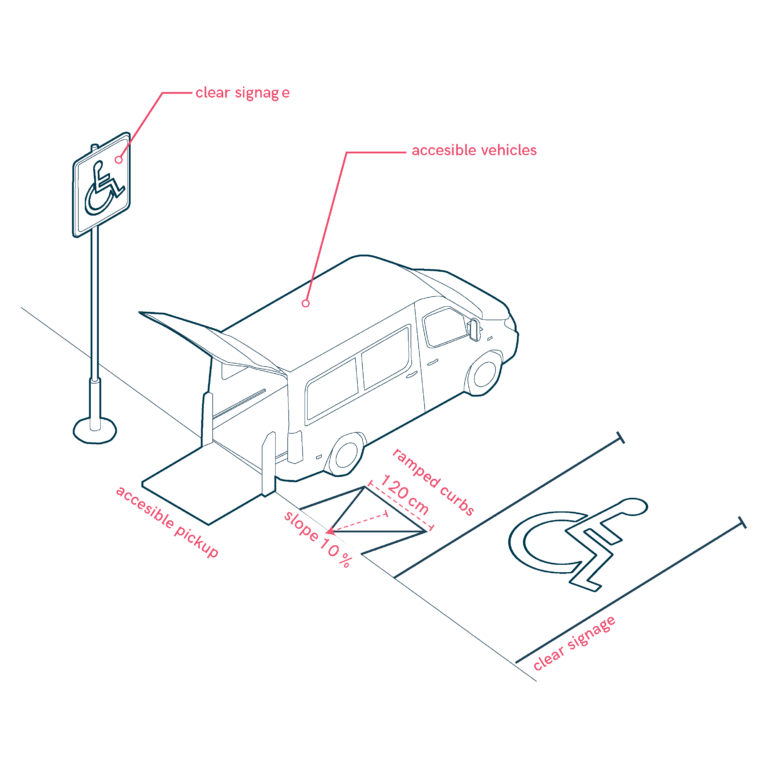
Wheelchair Accessible Taxis and Ride-Hailing at Mobility Hubs
